For a limited time, book your 2020, 2021 & 2022 group tour packages with no deposit required!!!

- Custom Groups Custom Groups Overview Student Groups MICE Special Interest Groups
- About Japan About Japan Destinations Attractions Must See & Do
- About Us About Us Contact us Testimonials Terms & Conditions Travel Agent Services Disclaimer Site Map
- News Press Releases Blog Media
- Your Trip Get Started How to make a reservation Travel Tip FAQs Inquiries
Last Name *

Search Japan Tour by Type
Search group tours, search private journeys, japan tours & vacations | best japanese travel plans and excursions.
All Japan Tours offers unlimited vacation possibilities to explore and experience an unforgettable trip to Japan. Whether you’re interested in Japanese cherry blossom tours , festival tours , autumn leaves tours or special interest tours , our Japan tour packages will bring your vacation dreams to reality. Choose tours based on style , interest , date , or season . Our Japan group tour packages are fully escorted, and we can also arrange special-interest private tours , custom group tours , and other Asia country tours to match your specific needs. | Why All Japan Tours
From Group Tours, to Custom Private Tours, to Japan Luxury Travel
Whether you're planning for a special occasion, family reunion, company event, luxury trip or an entire Japan holiday package, All Japan Tours can help you plan the perfect Japan experience. No matter what your interests are, you are always in excellent hands when you travel with All Japan Tours. Our Japan vacation packages cover all budgets from luxury to adventure and are available with or without international flights for full flexibility. Join an escorted group tour on a pre-designed itinerary, or let us create one for you. We have the firsthand know-how to take you well beyond ordinary travel.
The Best Japan Vacation Packages & Itineraries
When you consider the cost, hassle, and uncertainty of traveling on your own, you'll discover how an All Japan Tours vacation is like no other. Everything has been arranged in advance, from itinerary to hotel accommodations, so all you have to do is take in the breathtaking scenery. There is no need to worry about getting lost or finding transportation; leave the details to us and start having the time of your life. Our team works together to give you the very best Japan vacation. This includes our long-time tour guides in Japan that offer both current and historical enlightenment of its cities and towns, as well as expertise on where to find the most beautiful Japanese gardens and temples, local restaurants, and interesting shops. We understand how important it is to make your visit to Japan memorable and worthwhile, so our team both in the office and on the tours strive their best to accommodate your specific needs every step of the way. Book a Japan tour with us and start your unforgettable vacation today!
Japan Tour Packages 2024,2025 & 2026
What can we offer for your japan trip, japan escorted group tours.
The most cost-efficient and hassle-free way to travel Japan
AJT group tours are the best way to ensure that you do not miss seeing any of the highlights of Japan. We plan our group tours based on seasonal attractions with must see sites in every tour. All of our Japan group tour itineraries are researched and developed by our professional staff, all of whom have spent years working as a tour guide in Japan. We offer four different tour styles to pick from that are best suited to your interests, from train travel to luxury tours. We are confident that you will find something that is appealing and fascinating to you from our Group Tours. AJT group tour packages offer something suitable for everyone, no matter what your budget or tastes are.
Japan Private Journeys
Just you and your traveling partner
A private journey is the perfect solution for if you can't find a published departure date that you and your companion(s) agree on. Our private journeys allow you to customize the perfect itinerary for you and your companion(s). Our team will do our best to fulfill every detail and request to design your perfect tour.
Japan Custom Group Travel
You plan, with our help, where and when your group travels
Do you wish to travel with family, friends, school, church, club, or organization to Japan? We have the knowledge and experience to fulfill your wants. Let us arrange your sensational trip to Japan!
3 steps to your perfect Japan trip
Search tour.
Find your perfect Japan tour
Contact us for any questions or request
Reservation
Complete the Reservation Form and make your tour deposit
When is The Best Time to Visit Tokyo Japan?

Japan Cherry Blossom Tours
Our Japan cherry blossom tours are our most popular tours because we highlight the top places to see sakura, the most renowned flower in the country. Experience Japanese cherry blossom festivals, a cherry blossom dance show performed by geisha, and sakura views from Mt. Fuji, to gardens in Kyoto.

Japan Autumn Leaves Tours
Our Japan autumn leaves tours give you exclusive access to beautiful gardens, temples, shrines, and famous landmarks while enjoying the colorful autumn scenery along the way. We offer Japan tours to rural parts of Japan, historical towns, World Heritage sites, and diverse shopping districts.

Japan Festival Tours
Our Japanese festival tours cover festivals from all seasons. Matsuri (festivals) can range from celebrations to honor a shrine's deity to joyful seasonal occurrences. Participate in one of the biggest festivals in Japan, the Kyoto Aoi Festival, or check out the Gion Summer Festival on one of our Japan tours.

Special Interest Tours
We offer tours for people specifically interested in anime, the pilgrimage route of Japan, visiting the most beautiful places in Japan, focusing on Japan's breathtaking flowers, seeing snow monkeys in winter, visiting the best nature spots of Hokkaido, and spending time at the art island of Naoshima.
Top 12 Attractions in Japan

Takayama Festivals

Lavenders in Hokkaido

Tateyama Kurobe Alpine Route

Snow Monkeys

Japan Winter Festivals

Awa Odori Dance Festival

Gion Summer Festival

Kyoto Aoi Festival

Shibazakura Festivals

Baby Blue Eye Flowers at Hitachi Seaside Park

Tohoku 3 Great Summer Festivals
Experience the takayama spring & autumn festivals during your trip to japan, one of japan's most beautiful festivals..
Witness the beautiful Takayama Festivals in Japan, not once, but twice a year. We offer a list of Japan tour packages that allow you to experience the lavishly decorated floats, known as yatai, which feature karakuri (mechanical puppets) that dance and move impressively. Whichever season you prefer, we have a Japan tour package reserved for either Takayama Festivals.
View our Japan tours featuring Takayama Festivals
Get lost in the lovely furano flower fields surrounded with lavender flowers, and enjoy views of the spacious fields in biei..
Our Hokkaido lavender tours showcase the best spots to indulge in lavender beauty during its flowering season. Take a Japan trip to Farm Tomita in Furano, known as one of the best places in Japan to see spectacular backdrops of lavender. Our lavender tours will also take you to a small town called Biei, overlapping with picturesque hills, vast fields, and the popular Panorama Road.
View our Japan tours featuring Lavenders in Hokkaido
The tateyama kurobe alpine route is an amazing route that goes through the northern japan alps..
Visit the famous and long demanded Alpine Route in Japanese Alps. Requiring varying modes of transportation, this route takes you through mountains and valleys for some of the most scenic views in all of Japan. From high mountain peaks reflected in the surface of calm, crystal lakes to the lower elevations at the Kurobe Dam and the famous site of the snow corridor, this route is sure to be unforgettably beautiful.
View our Japan tours featuring Tateyama Kurobe Alpine Route
Take delight in viewing elegant wisteria flowers at ashikaga flower park and kawachi fuji garden during your tour to japan..
Wisteria are dream-like flowers that hang like pink and purple chandeliers. On our Japan Wisteria Tours, you will visit places like the Kawachi Fuji Garden and Ashikaga Flower Park. The Kawachi Fuji Garden features picture-worthy flower tunnels you can walk underneath, while the Ashikaga Flower Park is significant for their "Great Wisteria", a famous tree that's over a 150 years old.
View our Japan tours featuring Wisteria
Watch japanese snow monkeys bathe in hot springs at jigokudani snow monkey park on a japan winter tour..
Our snow monkey tours will take you to the Jigokudani Yaenkoen Park, where you can see Japanese Macaque, known as "snow monkeys". Thousands of people come to see the monkeys, whom are native to northern Japan and can be recognized by their red faces and light brown-grey fur. Watching the snow monkeys bathe up close is quite an experience, so don't forget your camera!
View our Japan tours featuring Snow Monkeys
Our japan tours will take you to the best winter festivals in the country, where you can admire giant ice sculptures and unique fairgrounds..
Believe it or not, some of the best festivals that attract millions of visitors each year are located in the coldest parts of Japan. We have arranged tours to travel to the Sapporo Snow Festival, Otaru Snow Light Path, Lake Shikotsu Ice Festival, Asahikawa Winter Festival, and the Sounkyo Ice Waterfall Festival. Experience seeing illuminated ice sculptures on one our tour packages.
View our Japan tours featuring Japan Winter Festivals
Join a tour that visits japan's largest dance festival, awa odori, and enjoy traditional music accompanied with lots of food in a lively celebration..
Attracting over 1.3 million visitors per year, Awa Odori is the largest dance festival in Japan. We have a Japan tour package showing you the best of Japan, including this famous dance festival. It is also called the "Fool's Dance", which originates from 400 years ago. Many instruments including taiko, shamisen, and flutes are accompanied with the dancers that parade through the city.
View our Japan tours featuring Awa Odori Dance Festival
Spend your japan vacation indulging in traditional japanese culture and stunning floats at the gion summer festival..
The Gion Matsuri is Kyoto’s largest annual festival and one of Japan's most famous. We have arranged Japan tour packages that include this 1100 year old celebration, which originally began as a religious ceremony dating back to 869. The main event occurs on July 17th and July 24th, where locals and visitors gather to view two extravagant procession parade floats.
View our Japan tours featuring Gion Summer Festival
Book a trip to japan that includes a taste of japanese history at the elegant and popular kyoto aoi festival..
Every May 15th, the Kyoto Aoi Festival features a large parade of over 500 people dressed in Heian Period (794-1185) styled clothing to illustrate a graceful procession. We provide several tours that highlight one of Kyoto's most celebrated festivals. The Kyoto Aoi Matsuri takes you back to the 10th century, where traditional makeup and impressive costumes can be appreciated.
View our Japan tours featuring Kyoto Aoi Festival
Admire thousands of ground cherry blossoms at the fuji shibazakura festival & takinoue koen park shibazakura festival during your japan tour..
Known as the ground cherry blossoms, our Shibazakura Festival tours will take you to attractions that are blanketed with vivid shibazakura. See the Fuji Shibazakura Festival, featuring over 800,000 spectacular moss phlox with the great Mt. Fuji in the background. Also visit Takinoue Koen Park, noteworthy for its hillside covered with 100,000 square meters of shibazakura.
View our Japan tours featuring Shibazakura Festivals
Take your japan tour to the majestic flower gardens at hitachi seaside park, widely known for its hillside of 4.5 million baby blue eye flowers..
Scientifically known as Nemophila, the largest collection of baby blue eye flowers can be seen at the Hitachi Seaside Park. There are over 4.5 million baby blue eyes blooming from mid-April to mid-May, referred as "Nemophila Harmony" during its annual bloom. The Hitachi Seaside Park features vast, gorgeous flower gardens of tulips, poppies, roses, kochia, and more.
View our Japan tours featuring Baby Blue Eye Flowers at Hitachi Seaside Park
Join the fiery celebration at tohoku's 3 great summer festivals during your japan trip..
Be keen on Tohoku's Three Great Summer Festivals all in one Japan tour package. These summer festivals known as Aomori Nebuta, Akita Kanto, and Sendai Tanabata are lively experiences you don't want to miss. Enjoy magnificent views of lantern-lit floats, high-spirited dancing, music performances, kanto skills, firework displays, thousands of colorful streamers, and more.
View our Japan tours featuring Tohoku 3 Great Summer Festivals
Top 12 places to visit in japan.

1. Hokkaido
Enjoy a tour to japan in hokkaido, renowned for its flower fields and attractions unique to every season..
Hokkaido, Japan has a distinctive change of seasons that only adds to its beauty. The island is renowned for its lavender fields in the summer and winter festivals that attract millions of visitors every year. Our Japan tours to Hokkaido will take you to the flower fields in Furano, the atmospheric Otaru Canal, Hokkaido's biggest entertainment district in Susukino, and to Shiraoi to learn about the Ainu people of Hokkaido. A Japan trip to Hokkaido means trying various fresh foods at the famous Nijo Market, strolling through the heart of Sapporo in Odori Park, and stopping by Hokkaido's most famous hot spring resort in Noboribetsu. Hokkaido is proud to have its four distinct seasonal differences that include a number of events and acitivities each unique to the season. There is no other place like Hokkaido to enjoy your Japan vacation to the fullest.
Make your way to the Tohoku region to see the great Towada Lake, visit the prominent Zeuiganji Zen temple, and see one of Japan's three most scenic views during your Japan tour.
Tohoku is known for its great summer festivals, picturesque landscapes, and its long history of samurai. Predominantly mountainous, this region offers broad areas of natural surroundings. A Japan tour to Tohoku involves visiting must-see sites among its six prefectures. Tour to one of Japan's three most scenic views at Matsushina, Tohoku's famous Zuiganji Zen temple, and the lovely Towada Lake. Numerous castles and samurai homes reside in Tohoku, making it an appropriate place to visit and appreciate history. Tohoku is also a suitable backup option when cherry blossom viewing, since the blossoming period takes place a few weeks later than in Kyoto or Tokyo. We offer several tours to see the best of Tohoku in one Japan trip.
Dive into the fascinating world of Tokyo, where you will visit ancient landmarks and electrifying towns during your tour to Japan.
Populated by over 36 million people, Tokyo is the worlds largest city. It is a metropolis that offers a mixture of both futuristic and traditional qualities. We offer tours to Tokyo that take you to destinations such as the Meiji Shrine, the Tokyo Tower, and the Imperial Palace. Indulge in Japanese history at the interesting Edo-Tokyo Musuem. We have Japan tour packages that will also take you to a popular tourist attraction called Odaiba, a man made island that serves as a shopping and entertainment district. Admire Tokyo's oldest temple built in 645, the colorful Sensoji Temple, also known as the Asakusa Kannon Temple. Find yourself in the lively and colorful Shibuya, renowned for endless dining, shopping, and clubbing. Its trademark is a large intersection featured in a number of films and photos. A Japan trip is not complete without traveling to Japans most distinguished city.
Travel to an active volcano in Hakone and ride the scenic Hakone Ropeway on one of our Japan tour packages.
Located in the Kanagawa Prefecture, the town of Hakone is mostly a mountainous region part of the Fuji Hakone Izu National Park. Hakone is a famed holiday resort renowned for its variety of popular hot springs. On our Japan tours, you can enjoy a stunning view of Mt. Fuji in Hakone and its natural beauty. Our tours will also take you to Owakudani, a volcano with active steam vents, hot river valleys, and scenic trails. Enjoy a ride on the Hakone Ropeway, where you can view the active volcano zone and excellent views of Mt. Fuji on clear days. Hakone is a popular destination in Japan for travelers looking to enjoy their tour outside of Tokyo. Since Hakone is in the Kanagawa Prefecture, our Japan tour packages will also include the must-see sites in this region.
5. Mt. Fuji
Check out astonishing views of mt. fuji and all of its natural surroundings when you book a tour to japan..
Take a tour to the highest mountain in Japan, Mt. Fuji, an active volcano standing at 12,380 feet (3,776 meters). Mt. Fuji is not only famous for its majestic cone shape and impressive aura, but also being the subject for distinguished paintings, photos, and literature. It is recognized as an international famous symbol of Japan. Impressive views can be seen from Tokyo and Yokohama on clear days. On the other hand, cloudy days often block visibility of Mt. Fuji, so those who get to experience the clear view of the mountain are considered fortunate. Our Japan tour packages will take you to the Fuji Subaru Line 5th Station, the halfway point on the climb to Mt. Fuji. It is accessible almost any time of the year and is well developed. This is a popular sightseeing spot for thoroughly admiring the grand and awe-inspiring view of Mt. Fuji and its surroundings.
6. Takayama
Add a traditional touch to your japan tour by visiting rural destinations in takayama and its authentic, historical buildings..
Celebrate at one of Japan's three most beautiful festivals here in Takayama, the Takayama Festivals, held in both spring and autumn. Since Takayama is located in the Japanese Alps, it is preferred among travelers wishing to add a rural destination to their visit to Japan. Takayama has been referred as "Little Kyoto", due to its preserved historical structures and traditional atmosphere. It is also popularly known as Hida-Takayama to refrain from confusion with other places called Takayama. We offer Japan tours to Old Town, where you can view entire streets and structures dating back to the Edo Period (1600-1868). Continue your Japan trip to the Matsumoto Castle, also called "Crow Castle" due to its black exterior. Here you can admire a prime example of original Japanese wooden architecture. Take delight in sightseeing in Takayama on your Japan vacation.
7. Kanazawa
Tour to kanazawa if you wish to see one of japan's three great gardens and a well-preserved samurai district during your trip to japan..
Capital of the Ishikawa Prefecture, the eminent city of Kanazawa is known for its preserved Edo districts and other historical attractions. Since the construction of the Kanazawa Castle during the rule of powerful feudal lord Maeda Toshiie, the city has prospered with many cultural achievements. Visit one of the Three Great Gardens of Japan, the Kenrokuen Garden, during your tour to Japan. Its name translates to "Garden of the Six Sublimities", qualities that make up the perfect garden according to Chinese landscape theory. Here you can find Japan's oldest fountain and the two meter tall Kotojitoro Lantern, an icon of Kanazawa and Kenrokuen. Some of our tour packages even travel to Kanazawa's Samurai District. Upon arrival, you will catch sight of well-preserved buildings and the former living quarters of samurai. Tour to Japan to enjoy these attractions unique to Kanazawa.
Say hello to authentic Japanese culture by visiting Japan's most popular temples and shrines, beautiful parks and gardens, and the best summer festivals during a tour to Kyoto.
Kyoto is famous for its numerous Buddhist temples, Shinto shrines, and ravishing gardens. The city served as Japan's capital and was the residence of the Imperial family during 794 to 1868. During your tour to Kyoto, you will get to participate in sake tasting at the Gekkeikan Okura Sake Musuem, visit the famous tunnel of scarlet torii gates at Fushimi Inari Shrine, see the iconic Kinkakuji Temple (Golden Pavillion), and stroll through the city of geisha in Gion. Continue your trip to the former residence of Tokugawa Ieyasu at Nijo Castle, check out the noteworthy Kiyomizu Temple and its impressive wooden stage, and see what a traditional Zen garden looks like at the Tenryuji Temple. Experience three of Kyoto's world-famous festivals, including the Aoi-matsuri Festival, the Gion-matsuri Festival, and the Jidai-matsuri Festival. Tour to Kyoto for an unforgettable Japan experience.
Experience visiting the world's largest wooden building and Japan's biggest bronze statue of Buddha when you travel to Japan.
Located less than one hour away from Kyoto and Osaka, the city of Nara is one of Japan's most rewarding destinations. Nara is Japan's first permanent capital, and is second to Kyoto as a cultural legacy with eight Unesco World Heritage Sites. Under the rule of the Imperial family and aristocrats, many temples and shrines were built here, as well as the development of temple towns. Our tours include seeing one of Japan's most significant temples, the Todaiji Temple, home to the famous Daibutsu (Big Buddha). The temple's main hall (Daibutsuden) is the world's largest wooden building, which is where you can also find the giant bronze statue of Buddha. Your trip to Japan will also give you the opportunity to visit the popular Deer Park nearby the temple, filled with over 1,000 deer you can greet and feed. Choose one of our Japan tour packages to experience Nara's historic treasures.
10. Hiroshima
Travel to the peace memorial park for an awakening experience about war and world peace, as well as the famed "floating" torri gate on the beautiful miyajima island, only in hiroshima..
Hiroshima is located in the Chugoku Region, a major city that is home to over a million residents. After the first atomic bomb dropped, there were predictions that the city would be uninhabitable. However, great endeavors were taken to rebuild Hiroshima and the speculations were proved wrong. During your Japan tour, you can visit the Hiroshima Peace Memorial Museum and the Atomic Bomb Dome (Genbaku Dome), a must-see exhibition and eye opening experience. You can visit these landmarks of world history at Peace Memorial Park, located in the center of the city. Our Japan tour packages also take you to Itsukushima-jinja, a Shinto shrine located on Miyajima Island. It is famous for its "floating" torii gate and is inscribed as a World Cultural Heritage Site and one of Japan's three most scenic places. Don't miss out on a remarkable tour to Hiroshima.
11. Shikoku
Journey to shikoku during your japan vacation for a tour full of remarkable sites and impressive coastal views, such as the incredibly scenic drive along the great seto bridge and the shimanami kaido toll road..
Shikoku is home to the Shikoku pilgrimage route, which includes 88 temples and other sacred sites. Shikoku offers many historic locations, breathtaking spots in nature, and traditional festivals. Here on your tour to Japan, you can enjoy scenic views from the Great Seto Bridge and the Shimanami Kaido, passing six small islands to get to Shikoku. Shimanami Kaido is renowned for its beautiful drive along its picturesque toll road. Take a pleasant stroll through Shikoku Mura Village and experience an awe-inspiring masterpiece of Japanese landscape at Ritsurin Park, featuring ponds, pavilions, and a Mt. Shuin backdrop. Shikoku may be the smallest main island of Japan, but offers many spectacular attractions to experience.
Explore Kyushu during your tour to Japan, where you'll wander through an abandoned island known as Gunkanjima, and visit the site of legend where the Shinto Sun Goddess hid herself in a cave.
Kyushu is the third largest main island of Japan and offers significant landmarks, natural beauty, and vibrant cities. Our Japan tour packages will take you to the best things to see and do in Kyushu. Take a trip to Gunkanjima, translating to "battleship island", a small and abandoned coal mine with the highest recorded population density in the world. You will also visit Glover Garden, an open-air exhibit featuring mansions of former Western residents in Nagasaki. Tour to Takachiho, a town pervaded with Japanese mythology. There you can visit the supposed site of legend of the Sun Goddess Amaterasu, where she hid in a cave distraught from her brother's cruel pranks, causing other gods and goddesses to attempt to lure her out. Takachiho is a "power spot" profound with spiritual energy and religious importance. Nearby, you can see a cascading waterfall at the Takachiho Gorge.

Though it is possible to do a cherry blossom trip on your own, if you want to see multiple sites and get more out of the trip, I’d suggest a tour. It is much easier to navigate in these rural areas that off the English speaking tourist path when……

Testimonials
My husband, Daniel Levine and myself (Cherilyn Brunetti) just returned from our tour which started in Osaka on July 3 and ended in Tokyo on July 8. It was our first trip to Japan and we had a wonderful experience. I credit our tour guide, Bil……

Japan Cherry Blossom Guide
Cherry blossoms in Japan have been a major attraction for tourists. The most common question people ask is “when is the cherry blossom season?” It is an easy yet difficult answer because it depends on the area we are talking about.

Japan Autumn Leaves Guide
Autumn leaves in Japan are almost as popular as the cherry blossom season. Kōyō is the Japanese word for autumn leaves. Kōyō and momiji (maple leaves) use the same kanji and has been that way since the Heian Period.
The latest article, gallery and video of Japan

NORTHERN OR SOUTHERN JAPAN? WHICH TO VISIT NEXT
Article | April 22nd, 2024 | May Hamamoto
Can’t get enough of Japan after visiting Tokyo, Kyoto, and Osaka, but are torn between the charms ......

12 OF OUR FAVORITE JAPANESE FESTIVALS
Article | April 11th, 2024 | Dayna Hannah
Attending a Japanese festival is an experience unlike any other! Here are our favorite annual events......

WHEN TO SEE CHERRY BLOSSOMS BLOOM IN JAPAN | 2024
Article | March 29th, 2024 | Dayna Hannah
From Okinawa to Hokkaido, here's where and when to see cherry blossoms in Japan.......
Japan Trips & Tour Packages

Beautiful landscapes? Check. Cultural experiences? Check. Tastebud-tingling food? Check. Our Japan tours have it all.
There’s a certain allure to Japan – a place where eastern tradition and western modernity collide among otherworldly scenery that’ll take your breath away and refuse to give it back. Add mouthwatering cuisine, a fascinating history, and a multifaceted culture into the mix and it's easy to understand how Japan continues to captivate travelers. From enjoying a sake tasting at a local brewery and soaking in a steaming hot onsen to marveling at World Heritage-listed temples thousands of years old, our tours in Japan promise the ultimate adventure: one you’ll continue to think about long after you return home.
Our Japan trips
Let's create an exclusive trip for your group.
Japan tour reviews
Filter by rating
Japan Highlights
Japan Family Holiday
Classic Japan
Articles of Japan
The top 7 destinations for travel in April 2024
10 awesome places to go for your 21st birthday
6 ways you can go beyond Asia’s hotspots in 2023
Japan or China: Where to travel next?
Now is the perfect time to visit Japan. This Intrepid leader explains why.
Japan or South Korea? How to choose your next holiday destination
The naked truth: a non-nudist’s guide to using a Japanese onsen
What is Japan famous for? The 11 things to seek out on your next trip
Japan at a glance
Capital city.
Tokyo (population approximately 37 million)
Approximately 123.1 million
(GMT+09:00) Osaka, Sapporo, Tokyo
CALLING CODE
Electricity.
Type A (North American/Japanese 2-pin) Type B (American 3-pin)
Learn more about Japan
Culture and customs.
Japan is a multifaceted country made up of many different cultures, rituals, and traditions influenced by Confucianism (introduced in AD285), Buddhism (introduced in AD552), and Shintoism (Japan’s ritualistic native religion). The rise of technology and international trendsetting has also played a part in the culture of Japan today as the younger generation embraces fashion-forwardness, online personas, and high-tech gadgets.
This is in direct contrast to the Confucian-influenced, old-school Japanese culture that the older generations still live by, with a larger emphasis on modesty, respect, and discipline. This can sometimes cause conflict between the two demographics, however, there are still some traditions that are considered sacred regardless of age – tea ceremonies, bowing, kendo, geisha, and sumo.
Visit ancient temples and walk history-laden pilgrim routes on a 8 day Koya-san & Kumano Trek.
History and government
Japan has had an interesting past with its ancient history, pre-modern history, and 20th-century history, all influencing the country we all know and love today.
Ancient history
While there is evidence the archipelago has been occupied by humans for around 35,000 years, what we know now as ‘Japan’ began to take shape about 1700 years ago as disparate tribes started to unify.
Pre-modern history
Over the centuries, Japan has alternated between feudal, empirical, religious, and government rule, with each period birthing different styles of art, architecture, and spirituality. Buddhism and Confucianism, introduced in 552 BC and AD 285, respectively, both proved massively influential on the class structures and governance of pre-modern Japan. You can still visit and stay in many Buddhist temples in Japan today.
20th century
It’s difficult to discuss the emergence of modern Japan without talking about WWII. During the war, the Empire of Japan used aggressive military tactics in an attempt to expand its reach and control in Asia and elsewhere. In response, the US Army instigated a strategic bombing campaign that included the notorious use of nuclear weapons in Hiroshima and Nagasaki. The result of these attacks was mass human and structural devastation.
These bombings, along with depleted armed forces and the looming threat of invasion from the Soviet Union, led the Empire of Japan to surrender unconditionally to the Allies in September 1945.
The ‘Empire of Japan’ became ‘Japan’ as part of the extensive terms of surrender, and the nation faced the prospect of rebuilding and reinventing itself in the second half of the 20th century.
Reflect on the historic and sobering sites of Hiroshima and Nagasaki while on an 24 day Ultimate Japan tour.
After WWII, Japan found its feet operating as a free-market economy based around the manufacture and export of automobiles and electronics, experiencing particularly rapid growth between 1960 and the late 1980s. The late 20th century saw the country emerge as an economic superpower, and with that came the flourishing of several cultural sectors, such as the arts and cuisine.
Experience Japan's historic sites on a 13 day Land of the Rising Sun tour.
Top places to visit in Japan
One minute you’re walking through a former black-market quarter, the next, you’re paying your respects at a 1400-year-old temple. Eclectic Tokyo is an essential part of any visit to Japan. Wander through the streets of Tokyo on our 12 day Classic Japan tour.
If you’ve ever eaten at a sushi train restaurant, you’ve got the underrated city of Osaka to thank! The motto in this city is 'kuidaore', which roughly translates as ‘eat until you drop’ . You can consider that a (friendly) order. Experience Osaka on our 12 day Japan Family Holiday.
The home of temples, palaces, and the Gion district (where geisha live and work), Kyoto is also where you’ll find the famed Fushimi Inari Taisha Shrine. Spot Geisha in Kyoto on our 9 day Japan Express tour.
4. Kanazawa
A great place to see a slice of old Japan, with classic sculpted gardens, a restored Old Town, and well-preserved architecture from a variety of eras. Explore Kanazawa on our 11 day Cycle Japan tour or on our 10 day Essential Japan adventure.
5. Hiroshima
Most travelers visit Hiroshima to see the Peace Memorial Park, constructed around the hypocentre of the atomic bomb that destroyed the city in 1945. Follow this up with nearby Miyajima, a tranquil island where tame deer roam the streets.
6. Yudanaka
This quaint resort town is best experienced in the winter, when snow coats the normally evergreen trees and Japanese macaques come down from the mountains to bathe and groom each other in the steaming natural hot springs of Jigokudani (Hell Valley).
Geography and environment
Japan is an archipelago of more than 6000 islands located in the Pacific Ocean in Asia . The main islands are Hokkaido, Honshu, Kyushu and Shikoku. Lying on the Pacific Ring of Fire, Japan is prone to destructive earthquakes, tsunamis, and volcanic activity. The most famous volcano, Mount Fuji , is also Japan's highest peak and only 100km from Tokyo.
Japan has plenty of forested, mountainous terrain that is unsuitable for agriculture and development, so much of the population lives in the coastal cities. This has led Japan to become one of the most densely populated countries in the world and the majority of its inhabitants are used to living in very small spaces, with a heavy reliance on public transport.
Although life is fast-paced and crowded in cities like Tokyo and Osaka, rural areas typically feature low-density, traditional housing and a slower pace of life surrounded by greenery such as lush forests and plenty of moss-covered boulders.
Traverse mountains, cycle coastlines, and meander through forests on a 12 day Japan: Hike, Bike and Kayak tour.
Shopping in Japan is fun but expensive, so be sure to have a budget for souvenirs planned in advance! In cities like Tokyo, there are loads of quirky stores and funky galleries showcasing the works of independent fashion designers and gadget creators. From the outlandish to the kitsch, you're guaranteed to find loads of colorful clothing and edgy art that you won't be able to find elsewhere.
If you’re planning to bring back leaf tea or any other perishable or edible items, it's a good idea to check with your local customs officials to ensure that you are able to bring certain items back into your home country. Australia and New Zealand, in particular, have strict quarantine laws.
What to buy
- Kimonos This quintessential Japanese souvenir looks great hung on the wall as an interesting decorative piece. If you plan on wearing one, make sure you do so respectfully and learn the correct way to fold the garment.
- Paper lanterns, kites and fans Japanese paper goods make great, relatively inexpensive souvenirs. Choose from high-quality, traditionally-made kites or delicate rice paper lanterns.
- Electronics Shops in Japan are bursting with the latest tech gadgets. Just be sure to check that they are compatible for use at home.
- Fashion Have fun with the amazing diversity of popular street culture fashion available in Japan. Vibrant, brash and sometimes bizarre – find something that no one back at home will be wearing.
- Anime and manga paraphernalia Another inexpensive gift option, even for people who can’t read Japanese. Pick up a book, magazine, t-shirt or print from one of Japan’s many anime and manga stores.
Festivals and events
If you want an adventure with a point of difference, consider planning your travels to coincide with these popular festive events in Japan.
Sapporo Winter Festival
Held every February since 1950, this festival features hundreds of statues and ice sculptures, snow slides and mazes, regional food and artistic performances. Winter in Japan is truly amazing, and the Sapporo Winter Festival is a magical way to celebrate.
Hadaka Matsuri
Head to Okayama to watch thousands of men wearing nothing but loincloths vie to touch the chosen 'naked man'. It may look like a bizarre male-bonding exercise but it's actually a historic cleansing ritual dating back thousands of years. Dates change yearly.
Fuji Rock Festival
Held annually in the stunning surroundings of the Naeba Ski Resort, this outdoor music festival is huge and draws in big-name acts and local bands Thousands of music lovers flock to Naeba for three days of camping, music and partying in the summer months.
Read more about festivals in Japan
Further reading
For inspiring stories to prepare you for your Japan adventure, check out these books:
- The Wind-Up Bird Chronicle – Haruki Murakami
- Sembazuru – Yasunari Kawabata
- Moshi Moshi – Banana Yoshimoto
- Goodnight Punpun – Inio Asano
- Okinawa Notes – Kenzaburo Oe
- A History of Japan – George Sansom
- Embracing Defeat – John W Dower
Similar destinations
Thinking about a trip to Japan but still browsing other destinations? Or, maybe you've already been to the Land of the Rising Sun and looking for somewhere similar?
- Singapore Tours
South Korea
- South Korea Tours
- Japan or South Korea?
- China Tours
- Japan or China?
Still thinking of Japan?
- Last-minute holidays to Japan
Japan travel FAQs
Do i need a covid-19 vaccine to join an intrepid trip.
Trips from 1 January 2023 onwards
From 1 January 2023, Intrepid will no longer require travelers to provide proof of vaccination against COVID-19 (excluding all Polar trips and select adventure cruises).
However, we continue to strongly recommend that all Intrepid travelers and leaders get vaccinated to protect themselves and others.
Specific proof of testing or vaccination may still be required by your destination or airline. Please ensure you check travel and entry requirements carefully.
Do I need to purchase travel insurance before traveling?
Absolutely. All passengers traveling with Intrepid are required to purchase travel insurance before the start of their trip. Your travel insurance details will be recorded by your leader on the first day of the trip. Due to the varying nature, availability and cost of health care around the world, travel insurance is very much an essential and necessary part of every journey.
For more information on insurance, please go to: Travel Insurance
Do I need a visa to travel to Japan?
Under current restrictions, a visa is required to enter Japan as a tourist. We recommend you apply for your visa no later than one month before your departure date. Please contact your local consulate or embassy for more information.
This page is for general information only and may be subject to change. It is your responsibility to obtain relevant visa and travel information required for entry, departure and travel to each country or region you visit on your trip. You should confirm these with the relevant embassies and/or consulates.
Last updated: 15 June, 2023
Is tipping customary in Japan?
Tipping isn't customary in Japan and is not expected – in fact, it will sometimes be considered impolite. Some inns or ryokans may leave a small envelope in your room where a small gratuity can be left for housekeeping staff.
What is the internet access like in Japan?
Internet access is excellent in Japan, with one of the most developed high-speed internet networks in the world. Internet cafes and wi-fi hotspots are easily found in most cities and major towns.
Can I use my cell while in Japan?
Cell phone coverage is excellent in Japan but be aware that talking loudly on your phone in public places (like in train carriages) is frowned upon. You will be expected to hide your mouth behind your hand if you must take a call in public. If you want to use your cell phone, ensure global roaming is activated before you arrive (but be aware of the fees this may incur).
What are the toilets like in Japan?
In Japan, toilets range from high-tech bidets to standard western-style flushable toilets to squat toilets, which are still common outside the city. Sometimes you may need to pay for toilet paper, which can usually be purchased from a vending machine nearby.
What will it cost for a...?
Japan's unit of currency is the yen:
- Bento box = YEN 550
- Bowl of ramen = YEN 650-1,200
- Can of beer = YEN 250
- Coffee = YEN 100-600
- Convenience store snack = YEN 200-500
Can I drink the water in Japan?
Drinking water from taps in Japan is considered safe. For environmental reasons, try to use a refillable water bottle rather than buying bottled water. Major cities often have water fountains in train stations.
Are credit cards widely accepted in Japan?
Major credit cards are accepted by some stores; however, Japan is still very much a cash culture and as such, some places may not accept credit cards. Ensure you carry enough cash to cover purchases.
What is ATM access like in Japan?
ATMs are common in Japan but unfortunately many of them don't accept foreign-issued cards. However, you can access cash from non-Japanese bank accounts via the Cirrus and Maestro systems at all post office ATMs around the country, as well as ATMs at 7-Eleven convenience stores.
What public holidays are celebrated in Japan?
- 1 Jan: New Year's Day
- *Coming of Age Day
- 11 Feb: National Foundation Day
- 23 Feb: Emperor's Birthday
- *20 Mar: Vernal/Spring Equinox Day
- 29 Apr: Showa Day
- 3 May: Constitution Day
- 4 May: Greenery Day
- 5 May: Children's Day
- *Jul: Marine Day, also known as Sea or Ocean Day
- 11 Aug: Mountain Day
- *Sep: Respect-for-the-Aged Day
- *23 Sep: Autumnal Equinox Day
- *Oct: Health and Sports Day
- 3 Nov: Culture Day
- 23 Nov: Labour Thanksgiving Day
* Please note, Japan public holidays may vary.
When is the best time to travel to Japan?
There’s never a bad time to travel to Japan but the months that see the most travelers are March, April, and May as the weather is mild and the cherry blossoms are in full bloom. The warm weather (with low humidity levels) of September, October, and November are also suitable months to visit Japan – you’ll even be treated to landscapes colored with oranges, reds, and browns for autumn. While winter can be cold, this is the best time for snow activities such as skiing, snowboarding, and snow festivals. On the other hand, the summer months see high humidity levels that can leave some travelers uncomfortable.
What is the weather like in Japan?
- Spring (March to May): temperatures range from 50 to 68°F, with conditions getting sunnier and clearer towards the end of the season.
- Summer (June to August): temperatures range from 70 to 90°F depending on where you are. It’s warmer in the south than in the north. You can expect some rain in June, and it can get quite humid towards the end of the season.
- Fall (September to November): temperatures range from 45 to 68°F. The humidity starts to calm down in September, but days stay warm until October. Nights can be chilly.
- Winter (December to February): break out the coats, temperatures during winter range from 32 to 59°F. The mountains and the north experience snowfall .
How safe is Japan?
Japan is generally safe and is rated among the safest countries in the world. Reports of crime such as theft are very low and travelers are often stunned by the fact that locals leave belongings unaccompanied in cafes and bars (though we certainly don’t recommend it!).
Is Japan safe for LGBTQIA+ travelers?
LGBTQIA+ travelers shouldn’t have any issues visiting Japan with violence, outright hostility or overt discrimination extremely rare. However, Japan’s older generation still holds conservative values when it comes to LGBTQIA+ sexuality and non-binary gender expression, especially those that live in regional areas.
Same-sex relationships are considered legal in some districts (such as Tokyo); however, same-sex marriage hasn’t been legalized yet. Public displays of affection are often frowned upon, regardless of sex, gender, or sexual orientation so keep that in mind when you’re out in public.
For more detailed and up-to-date advice, we recommend visiting Equaldex or ILGA before you travel.
Is Japan accessible for travelers with disabilities?
Intrepid is committed to making travel widely accessible, regardless of ability or disability. That’s why we do our best to help as many people see the world as possible, regardless of any physical or mental limitations they might have. We’re always happy to talk to travelers with disabilities and see if we can help guide them towards the most suitable itinerary for their needs and, where possible, make reasonable adjustments to our itineraries.
The needs of travelers with mobility issues, including wheelchair users, are considered in the infrastructure in major cities. Train stations have lifts (elevators), wide turnstiles and (for the most part) raised platforms so that wheelchair users can glide onto the train without being assisted. Sidewalks in Japanese cities are sometimes sloped towards the road, which can make traveling a straight line difficult for wheelchair users or people with vision impairment.
It is common practice in Japan to remove shoes when entering a home. Wheelchair users should carry something to wipe down their wheels in respect of this custom. Apply the same logic for other mobility aids such as canes.
Ryokans and other traditional accommodation can be difficult to navigate for people with limited mobility, but accessible hotel options are plentiful in the major cities.
Travelers with vision impairment may find the tactile yellow strips that guide the way to various places in train stations helpful, though please note that there is no barrier between the train tracks and platforms.
If you have a battery-operated hearing aid, it’s a good idea to bring extra batteries or familiarise yourself with the Japanese equivalent of the batteries it takes.
If you do live with a visual, hearing or other impairment, let your booking agent or group leader know early on so they’re aware and suitable arrangements can be made. As a general rule, knowing some common words in the local language, carrying a written itinerary with you and taking to the streets in a group, rather than solo, can help make your travel experience the best it can be.
What should I wear in Japan?
Summer months can be incredibly hot and sticky, so loose, lightweight and breathable clothing is essential.
Spring and autumn can be crisp and cold, so you might want to pack thermal layers in addition to your coat and boots.
Outside of Hokkaido and the mountains, the winter temperatures in Japan are manageable as long as you have regular cold-weather clothes like a good coat, pair of gloves, a winter hat and a scarf.
The style of dress common for women in Japan may be a little more covered up than you are used to, particularly outside the major cities.
Packing comfortable trousers is essential as you may find yourself sitting cross-legged on the floor during your stay.
What are some common phrases/words I should learn before my trip to Japan?
Having a basic understanding of the language and culture of the country you're visiting can go a long way when it comes to, not only communicating efficiently but your overall trip experience as well. Some common phrases you need to learn are:
- 'hello' - Konnichiwa
- 'good morning' - Ohayō
- 'thank you' - Arigatou Gozaimasu
- 'please' - Onegaishimasu
What religions do they practice in Japan?
There are two dominant religions in Japan - Shinto and Buddhism. The majority of Japanese people practice both simultaneously, however, there is a small number of the population that practise other religions such as Christianity, Judaism, Hinduism, and Islam.
What are the best places to visit in Japan?
From the neon-lit streets of Tokyo to the peaceful nature of the Japanese Alps, there are plenty of bucket-list destinations to include on your itinerary of Japan. We know it's hard to see everything but here are a few of our favourite places to visit in Japan:
What are the best things to see in Japan?
Japan isn't short of spectacular attractions to wander through and fascinating historical landmarks to marvel at but it's pretty hard to do it all on your trip to Japan. So you don't miss the things you simply have to see, we've put together a short list of parks, temples, and monuments worth visiting. Happy exploring!
- Hiroshima Peace Park
- Cherry blossom trees
- Osaka Castle
- Himeji Castle
What should I eat in Japan?
Food lovers, including vegetarians and vegans , will be more than satisfied with the variety and quality of Japanese cuisine. With a focus on fresh, seasonal produce that is prepared meticulously and presented beautifully, dining in Japan is a memorable experience.
What drinks should I try in Japan?
From craft beer to sake, Japan has plenty of tasty liquids to keep you hydrated throughout your travels.
How do I stay safe and healthy while traveling?
From Australia?
Go to: Smart Traveller
From Canada?
Go to: Canada Travel Information
From the UK?
Go to: UK Foreign Travel Advice
From New Zealand?
Go to: Safe Travel
From the US?
Go to: US Department of State
The World Health Organisation also provides useful health information.
What is it like traveling on a small group tour?
Whether you’re a seasoned traveler or you’re about to embark on your first trip, traveling can be as intimidating as it is exciting. That's the beauty of a small group tour. From handling the logistics and organizing amazing cultural activities to local leaders who know each destination like the back of their hand (like which street has the best markets and where to get the most authentic food), traveling on a small group tour with Intrepid will give you unforgettable travel experiences without the hassle that comes with exploring a new place. Plus, you'll have ready-made friends to share the journey with. All you have to do is turn up with a healthy sense of adventure and we’ll take care of the rest.
Does my trip support The Intrepid Foundation?
Yes, all Intrepid trips support the Intrepid Foundation. Trips to this country directly support our global Intrepid Foundation partners, Eden Reforestation Projects and World Bicycle Relief. Intrepid will double the impact by dollar-matching all post-trip donations made to The Intrepid Foundation.
Eden Reforestation Projects
Eden Reforestation Projects are helping to mitigate climate change by restoring forests worldwide; they also hire locally and create job opportunities within vulnerable communities. Donations from our trips support restoration across planting sites in 10 countries around the globe. Find out more or make a donation World Bicycle Relief
World Bicycle Relief provides people in low-income communities with bicycles to mobilize school kids, health workers, and farmers in far-out areas – giving them access to vital education, healthcare, and income. Donations help provide Buffalo Bicycles – specifically designed to withstand the rugged terrain and harsh environment of rural regions – to those who need them most. Find out more or make a donation
Does my Intrepid trip include airfare?
While our Intrepid trips include many modes of transport, from tuk-tuks to overland vehicles, bullet trains and feluccas, airfare to and from your home country is not included in your tour package.
Nomadic Matt's Travel Site
Travel Better, Cheaper, Longer
The Perfect 7-Day Japan Itinerary for First-Time Visitors

Japan captured my heart from the moment I firs visited. The delicious food, the rich culture, breathtaking landscapes, vibrant history, and the very friendly and polite people – it all blew my mind.
But Japan often feels impenetrable, especially to first-time visitors. While I think Japan deserves a minimum of 10 days, I get that some people might only have a week, so I wanted to write this, my ideal seven-day itinerary for Japan for a first-time visitor.
With only a week, there’s not much you can see unless you really rush it. And I don’t think you should do that.
So this itinerary only focuses on Tokyo and Kyoto (the most popular destinations) as well as some day trips from each. If you wanted to rush things a little, you could add in Osaka (more on that at the end).
(Note: If you purchased a Japan Rail Pass , activate it on arrival. That way, you can take advantage of the free JR trains throughout the city.)
Table of Contents
Japan Itinerary Day 1: Tokyo
Japan itinerary day 2: tokyo, japan itinerary day 3: tokyo, japan itinerary day 4: kyoto, japan itinerary day 5: kyoto, japan itinerary day 6: nara, japan itinerary day 7: tokyo, an alternative itinerary.

Tsukiji and Toyosu Fish Markets Cure your jet lag with some food! In 2018, Tokyo’s main fish market moved to Toyosu. It is now twice the size of Tsukiji (the old one), making it the largest such market in the world. Here you can eat fresh sushi for breakfast, just a few feet from where it was hauled in from the sea, while marveling at the chaotic atmosphere.
You can still head to the old market in Tsukiji to eat, shop, and wander as well. I like it a lot, because there are more food options! Food and drink tours of the Tsukiji Outer Market are available for around 15,000 JPY.
Toyosu Fish Market is open Monday-Saturday 5am-5pm, though most shops don’t open until 7am. Admission is free, but you have to pick up a visitor’s pass when you enter. Tsukiji Fish Market’s hours vary by shop (usually 5am-2pm). Admission is free.
teamLab Planets This digital art installation is a multi-sensory and immersive experience in which you become part of the artwork, walking barefoot through the four exhibition spaces and gardens as you interact with the installations’ elements in unique ways. It’s really fun! TeamLab is generally sells out in advance, so I recommend getting your tickets online ahead of time .
Take a walking tour Walking tours are a great way to get the lay of the land while connecting with a local guide. I always go on one or two when I arrive somewhere. Tokyo Localized offers many free tours, including a classic overview and ones of both the famed Harajuku and Shinjuku neighborhoods. Its Imperial Palace tour would be the most convenient one after teamLab.
The Imperial Palace Formerly Edo Castle, the Imperial Palace was built in the 15th century, and some of the walls and moats from that time are still in use to this day. When the emperor moved from Kyoto to Tokyo in 1869, he took Edo for his new palace and renamed it. While you can’t go inside, it is surrounded by beautiful grounds, a moat, and a park worth wandering through. You can also see the changing-of-the-guard ceremony (though it’s relatively low-key and unassuming). Admission to the grounds is free.
Shinjuku Gyoen National Garden This park is over 144 acres and home to some 20,000 trees. Most of the original park was destroyed in World War II but was rebuilt and reopened in 1949. During spring, it is one of the best places to see cherry blossoms. My favorite area is the landscape garden, which has several ponds with bridges and islands. It’s a peaceful oasis away from the urban hustle and bustle.
Depending on how you feel relative to your jetlag, you could fit a few more activities before you end your day. Check out this post for suggestions .

- Senso-ji – This is Tokyo’s most popular and famous temple. Beautifully painted, it sits in a scenic spot near a pagoda and the lovely Kaminari Gate. There’s a huge statue of Kannon, the goddess of mercy, inside the main hall. It’s very busy during the day, so maybe check out the grounds in the evening.
- Asakusa Shrine – This nearby Shinto shrine is much more peaceful, with fewer visitors, but with people praying, meditating, or performing traditional rituals. It was built during the Edo period (1603–1868) and survived the air raids of World War II.
Afterward, head to Ueno Park . Spanning over 133 acres, Ueno Park was established in 1873 on land formerly owned by a 17th-century Buddhist temple. It gets super busy in cherry blossom season, as there are over a thousand trees here. Throughout, you’ll find various stalls and vendors selling snacks, drinks, and souvenirs. On weekends, there are usually cultural events or festivals showcasing traditional arts, music, and dance. Four of Tokyo’s main museums are here:
- Tokyo National Museum – Established in 1872 on the north end, this massive building is the oldest and largest art museum in Japan. It houses one of the world’s largest collections of art and artifacts from Asia, particularly Japan.
- Tokyo Metropolitan Art Museum – This museum showcases rotating exhibitions of contemporary and traditional Japanese art.
- National Museum of Nature and Science – This museum features a wide range of permanent and temporary exhibitions covering natural science and history.
- Tosho-gu Shrine – This beautiful 17th-century Shinto shrine has carved gold doors and other ornate carvings. It’s worth seeing up close!
Afterward, walk down to Akihabara to explore the video game parlors, arcades, and anime shops. This very buzzy area is ground zero for all things electronic, and it’s fun to play many of the games. This is where you’ll find the famous maid cafés, where servers dress up as maids and serve you food and drinks. These range from big touristy ones to holes-in-the-wall (the girls on the street are promoting the latter, which are a lot more culturally fun). They aren’t cheap, though, as you have to buy drink packages and pay a fee, but they’re kitschy and fun.
In the evening, visit Shinjuku and then drink in Golden Gai . In Shinjuku, you’ll find a plethora of cool bars, bright lights, and tiny hole-in-the-wall eateries. Be sure to wander down Memory Lane (aka Piss Alley) for tiny izakaya joints and bars. Afterward, head over to Golden Gai, a warren of narrow alleyways with a bit of a red-light-district feel, flanked by diminutive backstreet bars. It’s quite touristy but also a lot of fun. I’ve had some wild nights here!
With Arigato Tours , you’ll learn about the neighborhood while stopping to sample Japanese classics like sushi, yakitori, and ramen. The 23,900 JPY cost includes a drink and dishes at four stops.

Kamakura Here you can see a 13-meter (43-foot) bronze statue of Buddha that was built in 1252. It was initially constructed within Kotoku-in Temple, but that has since been washed away by several storms, so it now sits in the open air. Admission to enter the temple grounds is 300 JPY, while it’s 20 JPY to go inside the statue. The journey there — around an hour — is free with a Japan Rail Pass .
Tokyo Disneyland I’m a sucker for Disney. You’ll find many of the same classic rides from Disney World here, like Splash Mountain, Big Thunder Mountain, The Haunted Mansion, and everyone’s favorite teacup ride, The Mad Tea Party. But there are several unique attractions as well, like Pooh’s Hunny Hunt and Journey to the Center of the Earth.
Ticket prices vary depending on the day and time, but full-day admission begins at 7,900 JPY for adults and 4,400-6,200 JPY for children. It’s best to book in advance .
Mount Fuji Mount Fuji is located an hour outside of Tokyo. An active stratovolcano (which last erupted in 1708) and covered in snow for almost half of the year, it stands an impressive 3,776 meters (12,389 feet) and provides one of the most iconic views in the country. One of the Three Holy Mountains of Japan, Mount Fuji is both a Special Place of Scenic Beauty and a UNESCO Cultural Site. In the summer, the mountain is open to hikers, who take 5-12 hours to reach the summit (traditionally, they depart at night to arrive at the top for the sunrise).
If you don’t want to hike, you can simply visit on a day trip. There are buses that can take you partway up, where you’ll be offered sweeping vistas of the surrounding area. Guided day tours from the city cost around 12,000 JPY.

Wander the Bamboo Forest For a relaxing break, head to Arashiyama and let the dense and towering stands of bamboo envelop you. Located near the famous Tenryu-ji temple, it’s one of the most beautiful places in the entire country. It’s not that big, but there are some hidden areas to explore. Just make sure to arrive early if you want to enjoy it without the crowds (it fills up fast after sunrise).
While there, I would also recommend visiting the Okochi Sanso Garden, which (along with the home) belonged to the famous Japanese actor Denjir? ?k?chi (1898–1962). It’s not free (it’s 1,000 JPY), but it’s really nice and has some wonderful views.
Visit the Golden Pavilion Originally built in the late 14th century as a retirement villa for the shogun (military governor), this iconic structure was later converted into a Zen Buddhist temple. The present-day edifice dates only to the 1950s, however, when a monk attempting to kill himself burned the historic original to the ground. The rebuilt temple is covered in brilliant gold leaf, symbolizing purity and enlightenment. Each of the three stories exhibits a different architectural style. Completing the scene are the serene reflecting pool and traditional Japanese gardens that contain lush foliage, manicured trees, and scenic walking paths.
1 Kinkakuji-cho, Kita-ku, Kyoto-shi, Kyoto, +81 075-461-0013, shokoku-ji.jp. Open daily 9am-5pm. Admission is 500 JPY.
Admire Ryoan-ji Temple This is my favorite temple in Kyoto. Originally established in 1450 as a residence for a high-ranking samurai, it was soon converted into a Zen temple and is now a UNESCO World Heritage Site, with a mausoleum that houses the remains of seven emperors. Its traditional rock and sand garden is considered one of the best in the country. There’s also a teahouse where you can experience the traditional Japanese tea ceremony ( chanoyu ) as you overlook the Kyoyochi reflecting pool.
There are other temples in the area to check out as well:
- Daitoku-ji Temple – This massive complex dating back to 1315 covers almost 60 acres. It contains several dozen temples and is a good place to see a variety of Zen gardens and architectural styles. It’s also deeply linked to the Japanese tea ceremony, as several of the country’s most noteworthy masters studied here.
- Toji Temple – This is home to Japan’s tallest pagoda (five stories high). Founded in 796, just after Kyoto became the capital, it was one of only three Buddhist temples allowed in the city.
Go on a sake brewery tour Kyoto has a sake (rice wine) brewing tradition going back 400 years and is known for some of the best in the world, due to using the area’s pure natural spring water in the brewing process. Arigato Tours offers an excellent three-hour tour of Fushimi (the brewing district) for 23,320 JPY, including stops at several breweries, a guided tour of the Gekkeikan Okura Sake Museum, and tastings.

See the Fushimi Inari Shrine This mountainside Shinto shrine, dating back to 711, is dedicated to Inari, the god of rice and prosperity. It’s known for its thousands of vibrant orange torii gates that form a network of trails leading up Mount Inari. You can hike the trails on your own while enjoying panoramic views of Kyoto below or join a guided hiking tour , on which you’ll get off the paved paths and into hidden bamboo groves. Get here as early as possible to avoid the crowds.
68 Fukakusa Yabunouchicho, +81756417331, inari.jp. Open 24/7. Admission is free.
Walk around Higashiyama Spend an afternoon walking along the narrow streets of one of the oldest and best preserved districts on your own or on a walking tour . The traditional machiya buildings (traditional wooden townhouses) are filled with small shops selling local specialties and handicrafts, as well as restaurants and teahouses. It’s a popular area in which to participate in a tea ceremony . Another nice place to stroll in this neighborhood is the Philosopher’s Path, which follows a cherry-tree-lined canal that’s beautiful and meditative even when the blossoms aren’t in season.
Visit Kiyomizu-dera One of a number of UNESCO sites in ancient Kyoto, Kiyomizu-dera (meaning “pure water temple”) is located in the foothills of Mount Otowa in the eastern part of the city. It’s one of the most famous temples in all of Japan. It was established in 778, but most of the existing buildings date to the 17th century. There’s not a single nail used in the construction, which becomes all the more impressive once you see how large the temple is, which is best known for its wooden terrace that juts out over the hillside. The temple’s name comes from the nearby waterfall whose waters (from which you can still drink today) are said to have wish-granting and healing powers.
1 Chome-294 Kiyomizu, +81 75-551-1234, kiyomizudera.or.jp. Open daily 6am-6pm. Admission is 400 JPY.
Explore Shorin-ji Temple This small temple dates back to the 16th century. What makes it worth visiting is its meditation classes. You’ll get to tour the temple and then be instructed in zazen , the Japanese style of meditation. It’s a very unique experience and something that I think will add a lot of depth and nuance to your visit (especially if you’ve seen a lot of temples). Just make sure to dress comfortably.
15 Chome-795 Honmachi, +81 75-561-4311, shourin-ji.org. Open daily 10am-4pm. Admission is 800 JPY.
Wander the Nishiki Market Nishiki Ichiba is now one of the biggest indoor markets in town. Known as “Kyoto’s Kitchen” and spanning over five blocks, it is full of vendors selling traditional dishes from the region, classic Kyoto souvenirs, and really just about anything else. There are over a hundred stalls here, many of which have been in the same family for generations. Opening hours depend on the shop but are typically from 9am to 6pm.
To dive deeper into Japanese food culture, you can take a food tour of the market . It’s the best way to learn about all the food you’ll see, as well as the market’s history.
Explore Gion Gion, the historic geisha district, is renowned as being one of the most iconic and atmospheric areas of town. It’s known for its traditional wooden machiya houses, narrow alleyways, cobblestone streets, and preservation of geisha (known locally as geiko) culture. Lining the main street are ochayas (teahouses where geishas entertain), small shops, and many restaurants, ranging from upscale kaiseki restaurants serving traditional Kyoto cuisine to casual eateries.
To really learn more about this amazing party of town and its past, take a walking tour of Gion . You’ll learn a ton and get a lot of context. They cost around 1,800 JPY.
At night, go to the Pontocho Row , a narrow street lined with restaurants, hole-in-the-wall bars, and jazz clubs. It’s one of the more lively areas in Kyoto.

Nara was the capital of Japan in the eighth century, so there are lots of buildings and temples here that are upwards of a thousand years old (which is rare in Japan, due to the prevalence of fires and earthquakes, as well as World War II). Some things to do:
- Frolic with deer – The real draw in Nara are the deer. Since the 17th century, those in and around the city have been considered sacred. You can buy crackers to feed them or just watch them stroll around carefree.
- See the Buddha – Don’t miss a visit to Todai-ji, the world’s largest wooden building, home to a 16-meter (52-foot) Buddha statue. It was built in 738 and is now a UNESCO World Heritage Site.
- Take a walking tour – This guided half-day walking tour for 11,500 JPY includes all of Nara’s highlights as well as a traditional lunch.

Ryogoku Kokugikan, Japan’s most famous sumo wrestling arena, hosts tournaments three times each year, in January, May, and September. Tickets sell out quickly, so book online in advance. Prices vary but start around 3,200 JPY for arena seats. You can book a ticket online here (you’ll be accompanied by a guide too, so you can learn more about the tradition as it unfolds before your eyes).
To learn more about the sport in in the off-season, book a tour of a sumo stable .

So, if you want to add another city to this itinerary you can follow this breakdown:
- Days 1 & 2: Tokyo
- Days 3 & 4: Kyoto
- Day 5: Nara
- Days 6 & 7: Osaka
Tokyo, Kyoto, and Nara are all covered above. As for Osaka, some of my favorite things to see and do:
Take a food tour Known as “the Kitchen of Japan,” Osaka boasts a diverse culinary scene. Mouthwatering sushi and sashimi, Kobe beef and Japanese BBQ, and flavorful ramen can all be found here in abundance. Plus, there are local specialties like okonomiyaki (a savory pancake with egg and vegetables) and kushikatsu (kebab skewers). You can take a food tour for around 13,000 JPY, a ramen and gyoza cooking class for 9,500 JPY, or just wander and eat.
Osaka Castle One of the most famous landmarks in the country, the castle was originally built in the late 16th century by Toyotomi Hideyoshi and played a pivotal role in the unification of Japan during the Sengoku period (1467-1615). Over the centuries, it has been destroyed and rebuilt multiple times due to wars, fires, and natural disasters. The current version dates to 1931. The castle is situated amid sprawling grounds and surrounded by a moat. It’s also home to a small but insightful museum and an observation deck that offers some picturesque urban views.
Dotonbori This is arguably Osaka’s most iconic district, known for its vibrant nightlife (bars, clubs, theaters, and music venues), colorful signage, and delicious food. It’s best seen at night due to the plethora of huge neon lights and signs lining both the canal and streets, which have become symbols of Osaka’s nightlife. A guided walking tour that includes Dotonbori as well adjacent neighborhoods is 6,500 JPY.
Shitennoji Temple This temple is one of the oldest Buddhist temples in Japan, founded in 593. The architecture is a blend of traditional Japanese and East Asian styles, featuring impressive pagodas, gates, and shrines set amid serene gardens. Stroll through the tranquil grounds, admire the beautiful architecture, and learn about the temple’s historical and cultural significance at the museum. The temple is 300 JPY to enter, the garden is 300 JPY, and the museum is 500 JPY.
Japan is one of my favorite countries. While it’s relatively small, it offers an amazing array of things to see and do (as well as some of the best food in the world). With seven days, you can easily see a good number of the main highlights and get a taste for the incredible history and culture. It will be a busy week, but this itinerary ensures you’ll still have some time to slow down, relax, and take in the local pace of life.
Just make sure you get a Japan Rail Pass before you go. While it’s not as cheap as it used to be, it will likely save you time and money!
Book Your Trip to Japan: Logistical Tips and Tricks
Book Your Flight Find a cheap flight by using Skyscanner . They are my two favorite search engines, because they search websites and airlines around the globe, so you always know no stone is being left unturned!
Book Your Accommodation You can book your hostel with Hostelworld as they have the most comprehensive inventory so they are best for booking a hostel. If you want to stay in a hotel or guesthouse in Japan, use Booking.com as it consistently returns the cheapest rates for guesthouses and hotels.
Don’t Forget Travel Insurance Travel insurance will protect you against illness, injury, theft, and cancelations. It’s comprehensive protection in case anything goes wrong. I never go on a trip without it, as I’ve had to use it many times in the past. My favorite companies that offer the best service and value are:
- Safety Wing (best for everyone)
- Insure My Trip (for those over 70)
- Medjet (for additional evacuation coverage)
Looking for the Best Companies to Save Money With? Check out my resource page for the best companies to use when you travel! I list all the ones I use to save money when I travel — and I think they will help you too!
Be sure to check out the Japan Rail Pass if you’ll be traveling around the country. It comes in 7-, 14-, and 21-day passes and can save you a ton of money!
Looking for More Travel Tips for Japan? Check out my in-depth Japan travel guide for more ways to save money, information on costs, tips on what to see and do, suggested itineraries and reading and packing lists, and much, much more!
Got a comment on this article? Join the conversation on Facebook , Instagram , or Twitter and share your thoughts!
Disclosure: Please note that some of the links above may be affiliate links, and at no additional cost to you, I earn a commission if you make a purchase. I recommend only products and companies I use and the income goes to keeping the site community supported and ad free.
Related Posts

Get my best stuff sent straight to you!
Pin it on pinterest.

Planning a Trip to Japan: DOs & DON’Ts (2024)
This page contains affiliate links. Please read our disclosure for more info.
This post is based on an amazing guide our friend Amy Dunn-Cham compiled us full of her Japan tips on how to plan a trip to Japan years ago. We have since visited Japan five times and update this post regularly with what we’ve learnt.
Ah Japan, irasshaimase! Welcome to the land where everything just works. The land of convenience, the land of delicious food, paradox, naked strangers, and where respect permeates through every part of society and culture.
In Japan the food can be described as clean and minimalist, but never simple, which probably sums up Japan as a whole. It’s a place that both lives up to, and out does, any expectation you have upon arrival.
Uh-huh, they have the fastest, sleekest, most efficient trains (ever!), but they still have paper posters pegged up on their Tokyo subway. Yeah, they have amazing futuristic architecture, but they also have countless traditional wooden buildings in amongst it all.
Yes, they have the busiest people crossing in the world (Shibuya), but at no point is it ever chaotic, no need for anyone to bang on a cab screaming, “Hey, I’m walking here!”.
Yes, they have scores of scarily trendy, funkily clad young people who like to cosplay on weekends, but they also have evening family outings to sentos (public bathhouses).
In this Japan travel guide, we’ll help you make sense of it all and share our best tips for planning a trip to Japan.

2024 Update: No Japan Travel Restrictions
When to visit japan, how long to spend in japan, video: best japan destinations, before your japan trip, general dos and don’ts in japan, what to book in advance for a japan trip, top japan destinations, more japan tips.
Japan reopened to independent international tourists on 11 October 2022.
Remaining restrictions were dropped on 29 April 2023, so visitors no longer need to show proof of vaccination or a negative Covid test.
The government also dropped the indoor masking recommendation. Many Japanese people still wear masks (on our late 2023 trip, I’d say about 30-40% of people wore them), but you are unlikely to be required to.
With the yen at the lowest it has been for decades, now is a great time to travel to Japan.
Health care is expensive in Japan, so I highly recommend purchasing travel insurance that covers Covid-19 medical expenses. SafetyWing Insurance is an excellent budget option, especially for travellers on longer trips and families (as children under 10 are free). It’s available worldwide.
If you want a more comprehensive policy with cancellation cover, check out Heymondo travel insurance , which we used on our last Japan trip (it came in handy when Simon broke his foot!). It’s also available worldwide and offers 5% off for our readers.

Back to Contents
We’ve visited Japan in all four seasons and don’t think there’s a bad time to go.
In winter , it’s chilly and gardens are a bit bare, but crowds are lower, you’ll find great deals on accommodation, and you’ll really appreciate those onsens (hot springs). You can also go skiing or snowboarding and have the best chance of seeing snow-capped Mount Fuji.
In summer , it is steaming hot and humid (and June is the rainiest month), but there are fewer foreign tourists around and lots of local festivals to enjoy. It’s also the best time to visit the many beaches and the only time you can climb Mount Fuji.
The most popular and best overall times to visit Japan are spring (March-April) and autumn (October – early December). This is when you can enjoy the gorgeous cherry blossoms (sakura) or autumn leaves (koyo). It’s more crowded and expensive, but the weather can be ideal and it is just stunning.
See our guide to visiting the Kyoto cherry blossoms for more information on the popular sakura season.
On our recent autumn trip, we had warm weather (up to 77ºF/25ºC) with very little rain from October until mid-November, when the temperature in Kyoto suddenly plummeted ahead of the leaves turning colour.

Shoulder seasons May and late-September/early October are also good times to visit with warm weather and lower crowds.
Two times of year I would avoid for a vacation to Japan are:
Golden Week in early May – In 2024, Golden Week is from 27 April – 6 May. This is a series of national holidays so many Japanese travel domestically, trains and hotels book up, and popular spots will be extra crowded.
New Year – Late December to early January. This is also a busy time with local travellers and most businesses close for up to four days.
How long do you need in Japan? As long as possible!
There is so much to see—we have spent months in the country and still have a long bucket list.
For first time visitors, I recommend visiting Japan for two weeks. This is enough time to see some highlights—Tokyo, Kyoto, and one or two smaller destinations. See our Japan two week itinerary for suggestions.
A week is the minimum time I recommend for a Japan trip. For a more relaxed Japan vacation, spend the whole week in Tokyo or Kyoto and take day trips. Or if you don’t mind rushing about, visit both major cities with an overnight stop on the way (such as Hakone).
Read our guide on the best places to visit in Japan to decide where interests you most and come up with an itinerary. You’ll find some suggestions at the end of this guide.
Watch this video for Japan trip ideas.
- Check if you need a visa . Visa-free travel is possible for citizens of 68 countries for stays of up to 90 days (including US, UK, Canada, Australia and the EU). Do have a return or onward flight out of the country as they may grill you upon arrival. It was the nicest immigration interrogation we’ve ever had, though.
- Purchase your Japanese Rail Pass exchange order before you travel to Japan (if needed, more on that later).
- Learn some Japanese —numbers are especially useful! While you can get by with Google Translate, it’s much more fun to learn some Japanese (which isn’t as hard as you might think) and locals really appreciate it. We are currently learning with the comprehensive Rocket Japanese online course , which includes audio lessons with natural dialogue, grammar and culture tips, and voice recognition to test your pronunciation. It’s a little pricey but unlike most subscription-based courses, you get lifetime access and discounts are often available.
- Get an International Driving Permit . You’ll need this for go-karting on the real Tokyo roads dressed as your favourite character. Insanity but one of the most fun things we’ve done in Japan.
- Arrange travel insurance. Healthcare is expensive in Japan, so make sure you are covered in case the worst happens. We’ve used and recommend Heymondo and SafetyWing (both available worldwide).

- Apply for a Mastercard credit or debit card – If you don’t already have one. Some Japanese websites don’t work with Visa so it’s good to have a backup. We used a Starling Bank debit card (UK only), which has free international transactions and cash withdrawals.
- Walk as much as possible – You will walk a lot in Japan cities so it helps to get some training in beforehand (and wear in some comfy shoes).
- Practice using chopsticks – You’ll need them to eat in almost every restaurant (curry is the exception as it’s eaten with a spoon). Getting used to sitting on the floor is a good idea for some restaurants and experiences too.

- Buy a pre-paid transport IC card for local trains, metro and buses. You just tap on and off and don’t have to worry about buying a ticket. In Kyoto and Osaka, it’ll be an ICOCA card, and in Tokyo, it’s a Suica or Pasmo, but you can use any of the cards all over the country. Physical cards are currently in short supply (due to a chip shortage), so I recommend adding Suica to Apple Wallet on your phone or watch. Visa doesn’t work as a payment method so use Apple Pay, Mastercard, or American Express to top up. We just tapped on transport with our Apple watch and didn’t even need to open the app. Unfortunately, this doesn’t work for Android phones bought outside Japan.
- Set up an Airalo eSIM – You’ll want affordable data on your phone as having access to maps and Google Translate makes life so much easier. A digital eSIM is simple to set up before you arrive and prices at Airalo start at just US$4.50. We used it on our last Japan trip and it worked great. If your phone doesn’t support eSIMs, you can buy a physical Umobile SIM from a vending machine at Tokyo Narita Airport (make sure your phone is unlocked).
- Sign up to the Timeout Tokyo newsletter – To learn about special events during your stay.

- Buy tickets for Ghibli Museum and Ghibli Park – If you are a Studio Ghibli fan, you might want to visit the museum in Tokyo or new park in Nagoya. It’s essential to book ahead. See below for details.
- Research what else to book in advance – Many attractions and restaurants in Japan require advance booking so decide what’s important to you (ideally at least three months ahead) and set reminders for when bookings are available. At the end of this post you can see the timescale for what we booked for our latest trip.

- Consider a Japan Rail Pass . The luxury of shinkansen (bullet train) hopping is exhilarating. No need to book seats in advance, just choose a train, wave your pass and hop on. These passes are only available to foreigners and you can order online from JRailPass.com . Read our guide to whether a Japan Rail Pass is worth it for everything you need to know after the price increase in October 2023 (it’s still worth it for some trips if you are travelling a lot).

- Bow if you are being bowed to . If you can manage it too, don’t turn your back upon exit. Don’t overdo it though or you’ll be a total gaijin , no need to bow to the supermarket checkout person!
- Pre-book accommodation. Wise anyway as the more affordable accommodation fills up fast, but also in line with the whole respect thing, Japanese people like to be prepared for your arrival. So don’t just randomly rock up at a ryokan for the night! Booking.com is our favourite site for finding hotels and guesthouses, and we also use AirBnb and Vrbo to find apartments in the big cities (which are often cheaper than hotels). See our Japan accommodation guide for recommendations.

- Go onsening! You might want to skip this in summer as hot doesn’t even come close to describing the water temperatures! But soaking in a hot spring is one of the most typical things to do in Japan and is ultra relaxing once you get over your fears of public nudity (yep, no clothes allowed!). Best of all, visit an onsen town where you can onsen-hop dressed in a kimono. See our Kinosaki Onsen travel guide for details on this lovely onsen town as well as hot spring etiquette.

- Stay in a ryokan (traditional inn). Pricey but worth it for at least a night or two for the unique experience and the amazing meals that are often included in the room rates (and many can cater for vegetarians/vegans). Our favourite ryokan is Tsukihitei in Nara, so traditional and with a magical forest setting. We also loved our private bath overlooking the scarlet maple trees at Nanzenji Ryokan Yachiyo in Kyoto (book a suite not a standard room). More budget-friendly options are Hotel Musashiya in Hakone, where our room and onsen had a view of Lake Ashi, and Morizuya Ryokan in Kinosaki Onsen, which is perfect for onsen-hopping.
- Stay in a traditional tatami mat room. If you can’t stay in a ryokan, a much cheaper way to stay in one is a traditional room in K’s House hostels—they have branches in Hakone (with onsen), Kyoto , Izu Peninsula (in a 100-year-old building with onsen), and all over the country. We never had a bad experience with this hostel chain in our budget travel days.

- Appreciate the zen-like calm on all modes of transport – no need for quiet only carriages here! Just remember that it’s rude to speak on your phone on trains in Japan.
- Use Google Translate . Many people don’t speak English, so the Google Translate app is helpful for communicating. Write what you want to say in English then show the Japanese translation to the person. Even more impressive is the feature to translate images—point your camera at a sign, menu, or food label and it translates the text instantly. It’s not perfect but when it works, it’s brilliant.
- Translate websites too – Many Japanese websites (especially restaurants) are only in Japanese so using Chrome or Safari, refresh the page and select the English option at the top. On Safari on my iPhone, I tend to select a block of text and tap translate from the popup.
- See some sumo . If you’re lucky enough to be in the country when one of the sumo tournaments is on, go! The pre/ post game rituals are fascinating to watch. If you aren’t there during a tournament, you can see a practice session at a sumo stable in Tokyo . It was one of our favourite experiences in Japan—it felt like such an honour to see these huge, impressive sumotori training so close.
- Expect bursts of freakery!

- Get your paper fortune at a Japanese Buddhist temple. Okay, we cheated and got an English one at the Golden Pavilion (see our guide on the best things do to in Kyoto ), but what the hell! You can also get one at the gorgeous Sensoji Temple in Tokyo .
- Love the Japanese for their never-ending capacity to help you out , and they won’t stop until they do!
- Read these Japan books before you visit for a greater understanding of this weird and wonderful culture.
- Have some sushi – Sushi is the essence of Japan, plus sushi-train/ sushi stand up bars are so much fun watching the chefs take your order, and all shout in unison, “samon!” or “tamago!” etc. Vegetarian sushi isn’t very common, but we did find some—see our vegetarian Japanese food guide .

- Appreciate the plastic food models as works of art!
- Pack slip-on shoes. You’ll be taking your shoes on and off a lot in temples and restaurants. I wear the comfy ballet flats Allbirds Tree Breezers in warmer weather and Allbirds Wool Runner sneakers (for men and women) in cooler weather—they keep your feet cosy but can be worn without socks and easily slipped off without untying the laces. See my detailed Allbirds review .
- Shop at the 100 Yen shops. Like pound shops BUT BETTER! Daiso is a great one.
- Play in the arcades dotted around cities, the taiko drum game rocks!
- Make use of the many vending machines EVERYWHERE . You will never go thirsty in Japan that’s for sure. You can even get hot coffee…in a can! (Simon’s saviour when we had early morning trains to catch.) In fact, you can get friggin’ anything from vending machines from cheap 100 yen sake (yuk!) to hot chips (not surprisingly we did not try!) and SIM cards. In Tokyo you can use your Suica transport card to pay.
- Press random buttons on the panel next to you on the loo . It will make you giggle ;o)! Also, if it’s cold then appreciate the absolute miracle of heated toilet seats.
- Fall in love with seeing toriis (shrine gates) everywhere , especially small red ones in rows behind each other. Fushimi Inari Shrine in Kyoto is our favourite (but go early as it’s popular).
- Love and appreciate the beautiful presentation of absolutely everything from the amazing architecture to the way bento boxes are wrapped in a napkin tied in a knot just so, to amazing manhole covers!
- Pack light. It will be much easier to hop on and off trains while travelling around Japan if you pack light, and hotels have limited storage space for luggage. Best of all, travel with just carry-on luggage . The Away Bigger Carry-On was perfect for our trip and fit overhead in trains.

- Consider luggage shipping – We haven’t used this yet, but if you have large luggage, it’s common to send it between hotels (it takes a day, so pack essentials in an overnight bag).
- Withdraw cash from 7-11 ATMs. They are the most reliable no-fee option for international cards and can be found everywhere. Make sure you always have cash on hand as many places don’t accept credit cards (although this is improving). Note that some 7-11 ATMs in popular spots (the airport, Gion), do now charge, so try to withdraw in less touristy areas.
- Use Navitime to check train times and prices (and to work out if a Japan Rail Pass is worth it for your itinerary ).
- Visit BIC Camera if you need any kind of electronics. These massive stores have everything you could imagine. Take your passport if you are making a large purchase (over 5000 yen) and get it tax free. I bought a camera here and ended up getting lots of extra discounts and free accessories. It’s also a good place to buy a SIM card if you didn’t pick one up at the airport.
DON’T:
- Rent a car – For most visitors the best way to travel Japan is by train. Elsewhere we love road trips, but renting a car in Japan is just not worth the hassle unless you are travelling far off the beaten track.
- Open the door if taking a taxi. They are either automated or the driver will open it for you. It’s also a good idea to have your destination’s address written down in Japanese to show the driver as most don’t speak English.
- Feel bad if you need to take a break from Japanese food – Japan isn’t always an easy destination and indulging in a comfort meal can be restorative (we’ve had some excellent pizza in Japan).

- Forget to check opening hours – Japanese restaurants aren’t usually open all day and both restaurants and attractions usually have a last order/entry 30 to 60 minutes before closing.
- Go whizzing around the country too much. It can save energy to base yourself in one place and take day trips as we did in Kyoto and Okayama .
- Wear holey socks. You’ll only be embarrassing yourself when you take your shoes on/ off constantly!
- Go into an onsen without washing first , that’s just dirty dude! Also, don’t go into the bathing area with a towel wrapped around you, you’ll just look stupid. Embrace the nudity! Everyone’s naked so no-one cares. My Kinosaki Onsen guide has more etiquette tips for newbies.

Japan is a popular destination and many hotels, restaurants, and attractions book up in advance. While you can still have a wonderful last-minute trip, it’s worth researching what you’d like to do months in advance to see what needs reservations.
On our most recent trip to Japan (in the busy autumn October/November season), this is what we booked ahead:
5 Months Before
- Flights – This is personal preference and earlier or later could also work. Tokyo Narita (NRT), Tokyo Haneda (HND), or Kansai International Airport in Osaka (KIX) are all good options to fly in to.
- Accommodation – Ryokans and hotels in smaller towns are most important to book ahead. Some hotels don’t take bookings more than 3 or 6 months in advance, though. We used Booking.com and almost all had free cancellation.
4 Months Before
- Tokyo DisneySea Hotel MiraCosta – Our favourite place to stay in Japan is right inside the best Disney park in the world. Rooms go on sale 4 months in advance at 11am JST and sell out in minutes, so it’s essential to do some practice runs.
3 Months Before
- Harry Potter Studio Tour, Tokyo – We booked 7 weeks in advance and only got an afternoon slot, so earlier is a good idea. Check Klook and the Warner Bros Studio Tour website as they have different availability.
2 Months Before
- Ghibli Park , Nagoya – Tickets go on sale on the 10th of the month at 2pm JST for 2 months later (it changed recently from 3 months). So May tickets will be on sale on 10 March. These sell out quickly, so be prepared.
- Teamlab Planets , Tokyo – Book early if you want a specific time for this interactive digital art exhibition (we wanted the first slot). We booked on Get Your Guide . The new TeamLab Borderless is also selling out fast (tickets available on Klook or direct ).
- Some Restaurants – We booked Monk in Kyoto exactly 2 months in advance at 12pm JST (after five attempts) and Shigetsu in Kyoto (as we were visiting during peak autumn colour). Creating a Tablecheck account is a good idea as quite a few restaurants use it for bookings.
- Saihoji (Moss Temple) , Kyoto – It’s expensive and might not be a priority with limited time in Kyoto, but it’s our favourite temple. Reservations open 2 months in advance.
- Universal Studios Japan Express Passes – These are essential to skip the lines at this very busy park in Osaka, and they do sell out. We bought the Express Pass 7 – Backdrop and Spiderman on Klook (much easier than the official site which is in Japanese only). We bought our USJ entrance tickets on Klook at the same time. See our Universal Studios Japan guide for more tips.

1 Month Before
- Ghibli Museum , Tokyo – Available at 10am JST on the 10th of each month for the following month.
- Shibuya Sky , Tokyo – Bookings open 4 weeks in advance at midnight Japan time. Book fairly soon after that to get the peak slot (one hour before sunset).
- Tours – I booked a sumo stable visit (highly recommended) and Shinjuku bar hopping tour in Tokyo. Go-karting is another fun option we’ve done before. I used Get Your Guide for most tours. Klook is a good option for tickets and attractions too.
- Tea Ceremony Ju-an , Kyoto – Learn the traditions of tea in a temple. One of the highlights of our trip.
- Sakurai Tea Experience , Tokyo – If you love green tea, don’t miss the tea tasting at this modern tea room.
- More Restaurants – I booked Saido in Tokyo, Uzu Vegan Ramen in Kyoto (reservations essential), and Ristorante di Canaletto at DisneySea (one month in advance at 10am JST exactly).
- Tokyo DisneySea and Disneyland tickets – I booked on Klook. The parks probably won’t sell out, but we didn’t want to take the chance.
- Japan Rail Pass – If you decide to get one, allow plenty of time for your exchange order to arrive by post, just in case (you activate it on arrival).
2 Weeks Before
- Shinkansen Train Seat Reservations – We used the SmartEx website , which can be difficult to set up (use a Mastercard and keep trying to authenticate the payment method) but very handy. When booking a train from Tokyo to Kyoto, choose a seat on the right side of the train for Mt Fuji views (if clear). If you have large suitcases, you’ll also need to make an oversized baggage reservation .
- Airport Taxi Pickup – From Narita Airport we get the Narita Express train, but from Haneda Airport (which is closer to central Tokyo), we prefer a taxi for ease. We booked this Haneda airport pickup on Klook .
- More Tours and Restaurants – Book any more priorities as you finalise your itinerary.

Japan has so much to offer but here are a few places to get you started.
- Tokyo – The best of modern Japan. This huge city has incredible food, diverse neighbourhoods, and some unique experiences. Try these cool things to do in Tokyo and enjoy the best vegetarian restaurants in Tokyo .
- Kyoto – The best of traditional Japan with many stunning temples to explore . Read the best things to do in Kyoto .
- Takayama – A smaller, quieter alternative for traditional Japan with a beautiful historic centre of preserved wooden houses.
- Hakone – For the chance to see Mount Fuji, mountain scenery, lakes, onsens, and fun transport options (cable cars and pirate ships!).
- Kawaguchiko – Even better views of Mount Fuji at Lake Kawaguchiko .
- Nikko – Stunning temples in the forest. Could be visited as a day trip from Tokyo.
- Hiroshima – Visit the moving peace memorial that commemorates the atomic bombing and don’t miss nearby Miyajima Island.
See our Japan 2 Week Itinerary for a detailed guide to visiting many of these places including things to do, transport, and where to stay and eat.
Or our guide to the best places to go in Japan has more ideas.
Japan Tips, Direct to your Inbox!
Thank you for subscribing! You should receive an email from us very soon. Click on the link in the email to confirm your subscription.
- Is a Japan Rail Pass Worth It?
- 54 Best Things to Do in Japan for an Unforgettable Trip
- Where to Stay in Japan: A Guide to Accommodation Options
- 20 Fascinating Books to Read Before Visiting Japan
- 16 Unmissable Places to Visit in Japan
- Vegetarian Survival Guide to Japan
If you enjoyed this post, pin it!

166 Comments
Thank you for the lovely Japan Blogs – it is making our travel planning fun! It would be really helpful to understand the areas to stay in within the cities, especially first time travelers to Japan.
Reply ↓
Thanks JK! Our Kyoto guide has tips on the best area to stay (Gion or downtown) and in Tokyo, we recommend Shinjuku for first time visitors. Enjoy Japan!
Wow, an amazing blog, Erin. This is helping us so much plan our trip. It is great to see you updating it regularly too. It’s becoming a daily read.
Kind regards,
Thanks so much for this post! As is often the case I am following you around the world and now I’m going to Japan. Look forward to reading everything you’ve written on it!
Good to hear you are going to Japan, Ruth! I hope you enjoy it as much as we always do!
We are a very active retired couple and love exploring different cultures, sights, and exploring nature. We are planning on going to Japan for the first time for 3 -4 weeks, around the third week or so in Sept to mid October or later. We will travel with just carry on luggage and backpacks. We love touring on our own, or booking individual tours at the different places. We are open to basing in Tokyo, Kyoto, Hiroshima(?) plus other places and doing day trips from these places. What would be a good itinerary for our 21+ day trip? Thanks so much! We love your website! Bunny
Hi, I lost my comment somewhere on your blog 😅 So, me and my partner are going to Japan for 4-6 weeks in sept/october. We want to travel in a slow pace and want to visit Tokyo, Kyoto, hiking around Kiso Valley (and Kumano Kodo?), Nagano, Kanazawa? We also want to explore some nice nature, visit onsen, sleep at a roykan etc. Hokkaido would be cool but i don’t know if we will have time with that. Do you have any tips where we must go? I think our plan is to be at least 7 days each in Kyoto and Tokyo, we want to stay for minimum 2 nights at each place. Would you recommend to start in Tokyo? Is it worth to start a week in a busy town with jetlag? Should we go somewhere else (where?) for a nice start on the vacation?
Thank you! /Johanna
Hi Johanna!
I’m planning a solo trip from ~May 21-June 21, but i’m worried i’ll hit the rainy season and humidity. What to you advise? I’m limited to May 21st as my earliest trip start date due to school!
I think it makes sense to start with Tokyo if that’s where you are flying in to. That way you don’t have to worry about travelling elsewhere and you have enough time there that you can plan for the first few days to be pretty relaxed – wander some neighbourhoods, eat etc.
Sounds like you have plenty of time to do everything you want. You could easily use that time in central Japan, but you could add in Hokkaido if you really wanted (we still haven’t made it there). Enjoy!
Hi Erin, is it advisable to visit Lake Kawaguchiko in November? And, do you think it is possible to do a day trip to Lake Kawaguchiko having Tokyo as the base?
We haven’t been in November but we definitely would. You will likely see the autumn colours too (generally peak around mid-Nov), which would be beautiful.
It will likely be colder than Tokyo, but as long as you are prepared with warm clothes it should be enjoyable.
And yes, it is possible as a day trip from Tokyo – many people go by train or on bus tours. Just be aware that Mt Fuji is often hidden in cloud, so if you stay overnight you increase your chances to see it. But you could also try to choose a clear day for your day trip. Enjoy!
Our Lake Kawaguchiko travel guide has more details.
Thank you for creating this! I’m making my way through reading all of your posts. I will be visiting Japan for 14 days for the first weeks in April with my husband, a 7 year old, 10 year old and my two of my adult siblings. We’ll be a big group but I’m very excited as this is my first time and have always dreamed of going. Wondering if you have any advice for the younger kids or any kid entertainment? Thanks again!
Travelling with kids isn’t our area of expertise so I don’t have any specific recommendations except for Tokyo Disney, which we love. Tokyo DisneySea is our favourite park—it’s the only one in the world and has plenty to offer for kids and adults. Enjoy!
Absolutely love this perspective on travel! It beautifully captures the essence of what it means to explore the world. Travel isn’t just about ticking off destinations; it’s about slowing down, immersing yourself in new cultures, savoring moments, and absorbing the rich tapestry of life that the world has to offer. 🌍✈️🌏
Thank you so much for this! I have started notes and saved the page so that I can come back and check out all the links. :) I am wanting to take my 14 (would be 15 then) daughter alone (we do girl’s trips every year without dad) to Japan. She loves all things Cherry Blossoms! We try and do her spring break time (next year will be the first week of April), but I am concerned about that being too short of time period. Could we do it? If that is all the time you had, would you have a ‘base in Tokyo and then do some excursions from there (which is how we like to travel)? I am also worried about the language barrier and us being able to navigate since sometimes Google translate will not work. Thanks again!
Hi Jennifer, With one week I would focus on Kyoto, which is a better location for cherry blossoms and also has so many beautiful temples and gardens. It’s more traditional Japan (although there is a modern part too). Ideally, you’d fly into Kansai Airport which is closest.
If you have to fly into Tokyo, you could spend a few nights there before taking the shinkansen train to Kyoto (the quickest one is just over 2 hours).
If you really want to see the more modern side of Japan or don’t want to take the train, then Tokyo would be a great base. You can still see plenty of cherry blossoms there.
We don’t speak Japanese (although we are trying to learn this year) and have always managed. The Japanese are very helpful and will always try to help you out, even with a language barrier. And there are an increasing number of signs in English. Just make sure you have data on your phone as Google Translate and Maps are super helpful (you can download Japanese offline in Translate too).
Be sure to book accommodation far in advance for the cherry blossom season (ideally 6 months+).
Enjoy Japan! Erin
Hi Erin, My husband & I are travelling to Japan in August as he is competing in the world masters swimming competition. We have to be in Fukuoka for the competition and then he have 9 days to explore the country ending up in Tokyo for our flight home. Could you advise what we should do at this time of year. Do you think it is sensible to base ourselves in Kyoto and then take daily trips from there using the JR Pass, (do you recommend we get the Green pass). Your advise would be greatly appreciated. Thanking you in advance.Pia
Hi Pia, that’s exciting!
If you don’t want to move around too much then I do think Kyoto is a great base. There’s so much to do (including festivals in August) and lots of possible day trips. You could finish up with a couple of nights in Tokyo.
If you want to add some extra places you could stop in Hiroshima on the way to Kyoto for the peace memorial and nearby Miyajima Island. It’s a quick journey on the bullet train from Fukuoka.
You’ll need to work out your route first to see whether a rail pass is worth it. It probably won’t be worth it for day trips but could work out worthwhile including the shinkansen up from Fukuoka and on to Tokyo.
We’ve never used a green pass but if you want a bit more space you could consider it.
Also bear in mind that around the Obon holiday (13-16 August) the trains will be busier than usual so book your seat in advance.
Enjoy Japan!
Hi Erin – great post, thanks for your comprehensive insight! My partner and I are heading to Tokyo for NYE and planning on heading from there to Kyoto around the 2nd for a couple of nights. I understand that Japan can be very quiet during the first week of January. Do you have any experience travelling at this time? If so, do you have any suggestions about how to make the most of the trip while the country is a bit quieter? Thanks in advance :)
Hi Sarah, We haven’t been to Japan at New Year. The important thing to bear in mind is that many businesses will be closed on some or all days between 29 Dec and 4 Jan. So make sure you look at the hours of any restaurants and attractions you want to visit and work around them.
I think Kyoto will be lovely at a quieter time of year especially as it does get so busy. There are so many temples and shrines to explore and they stay open over NY. Enjoy!
Wonderful website and tips. I know one of your dont´s is rent a car, but we are hoping to visit Shirakawa-go, Gokayama and Takayama, and have found no easy way to get there from Tokyo or Kyoto on train. Do you have any recommendation on how to do that?
Many many thanks¡
Hi Natalia. You can get to Takayama from Kyoto or Tokyo easily by changing trains in Nagoya. The journey from Nagoya to Takayama is beautiful.
The other villages can be reached by bus from Takayama (Shirakawa-go is easiest), but yes, a car would give you more flexibility to explore the countryside around here.
Maybe look into renting a car for a few days in Takayama? Just remember you’ll need an international driving licence, which you’ll need to get in your home country.
While a car could be useful in the countryside, I wouldn’t want to drive in the cities and the train between cities is probably quicker.
I’ve written a bit about Takayama in our 2 week itinerary: https://www.neverendingvoyage.com/japan-2-week-itinerary/
Have a wonderful trip to Japan! Erin
Hello Enrin, your tips makes me very enthousiatic to plan a 4week trip to Japan. Is that a good way to tour? (Will be half september-half oktober).
forgot to say ;-) we plan to travel with a campervan: is that a good way to tour?
That’s a great time to visit and a nice amount of time to explore. I don’t think a campervan or any rental car is the best way to travel though. Driving (and finding parking) in the cities is a challenge and it’s much easier to travel by train.
A campervan would only be advisable if you want to focus on rural areas like Hokkaido.
Remember you’ll need an international driving licence, which you’ll need to get in your home country.
Hello Great Blog. full of advices How do you suggest to travel the “alps” from Kanazawa that one can reach by train to takayama and around ? would that be the place where you rent a car?
You can visit places like Kamikochi by bus from Takayama so a car isn’t essential.
Hi Erin, would like to ask is hiring tour guide better or do it yourself to see all nice place in Japan?
It depends how you prefer to travel. I definitely think it’s possible to travel by yourself. A compromise might be to hire a guide for a day (or join a tour) in Kyoto and/or Tokyo.
Good Day Erin. Just doing beginning research for our yearly trip this year, and we are considering Japan. Your excellent article is the first I started with. We like to spend minimum of 2 weeks, usually longer at our destination. You suggest that using public transportation throughout the country and not to rent a car. My husand and I are seniors. My husband has difficulty (pain) after walking a short distance (100 yards). Would this destination be a wise choice for us? Before going further in my research an answer to this question is most appreciated. Regards
Hi Diane, yes, trains are definitely the best way to visit Japan’s cities. You could hire a private driver for day tours within places like Kyoto, though, which could minimise the need to walk as much when sightseeing.
It would probably be best to minimise the places you visit (such as Tokyo and Kyoto or even just Kyoto) as train stations are quite large and do involve walking. If you fly into Kansai airport you could take a taxi to Kyoto and see a lot based there.
Perhaps renting a wheelchair is worth considering. There is also an overnight luggage delivery service where you can send your bags between hotels to make train travel easier.
As we don’t have any experience of travelling Japan with mobility issues, I would look for advice from those who have. Here’s one post that might be useful: https://www.japan-guide.com/forum/quereadisplay.html?0+132386
Diane: As someone who recently travelled to Japan having had double knee replacement surgery less than 12 months previously, I can offer a little insight! While I agree that travelling by train is a fantastic way to get around Japan (I covered a LOT of miles!) you should be aware that not all train stations have lifts or escalators. Many stations in Tokyo have quite long flights of stairs which can be a challenge to anyone less able or in pain, especially when you have luggage. Even when there is a lift, it’s typically right at the end of the platform (often the “wrong” end for where you want to be), so I would do some research before deciding how much urban train travel you will do; it’s less of an issue when taking the shinkansen to cover a reasonable distance. I much prefer trains to coaches, but I did use buses in places and that was fine. On the topic of car hire, I probably wouldn’t bother myself but I know someone who travels widely across Japan with a couple of kids and she swears by it, not least because they can easily reach locations that would otherwise be a hassle to get to. She doesn’t use one in the cities though. Lastly, I don’t think you should be put off going to Japan – it’s an amazing country and I found everyone to be unfailingly helpful. No problem is insurmountable!
Thank you so much for sharing your experience, Sue.
Hello Erin,
Would you recommend visiting Jaoan with a 1.5 year old? Do the onsens have babysitters?
We don’t have any experience travelling with kids but our friends took their toddler and loved it. The onsens don’t have babysitters as far as I know.
Thank so much for all the amazing info! Heading to Japan in June for two weeks with my daughter. It’s especially wonderful to know there are some great vegan/vegetarian options.
Hi Erin… I stumbled onto your website as I’ve started looking into planning for a trip in 2024 for my daughter’s High school Senior trip. Is Mid June a good time weather wise? Super hot? Also, are there food/restaurants that are gluten free for Celiacs? You mentioned beaches are those places more expensive than the cities? I will check out all your links too. TY for all the info, this will truly help.
It will be hot but if that’s the only time you can go, I wouldn’t let it stop you and it’s cooler than July and August.
I don’t have any experience being gluten free in Japan but our friend has written this guide: https://www.legalnomads.com/gluten-free/japan/
Beaches shouldn’t be more expensive than the cities but it depends where you go. We haven’t spent much time at the beaches.
Have a wonderful trip!
hi Erin, lovely website with a lot of good information. Do you list of places to visit / see – for a 4 week trip. We wanted to do the North part of the country as well. thanks for any tips and help. We are vegetarians as well but saw that you all managed to get delicious looking vegetarian food : ).
We haven’t actually made it very far north as there’s always so much to do in the central part. See our guide to the best places to visit in Japan for our favourite places: https://www.neverendingvoyage.com/best-places-to-visit-in-japan/
And yes, vegetarian food in Japan is great if you plan in advance (use the Happy Cow app).
Thanks for the info Erin. Cultural.differences are amusing at least.
Thank you so much for this guide Erin! It’s really helpful. I’m planning a 2-3 week trip to Japan around September. However, I’ve read and seen a lot of people saying to avoid this time of year due to typhoon season. Would you recommend visiting Japan around this time despite the typhoons that might hit?
We’ve been in September and enjoyed it. We did get some rain but nothing that disrupted our trip. I wouldn’t let it stop you visiting.
Hello Erin! Great information. Thank you! What percentage of small businesses (resturants, clubs, rooms, etc) are open this month (March)? What percentage may be open in May? Should I wait until September to experience Japan? Take care,
Everything should be open now so any month this year is good to visit!
How easy is it to navigate in Tokyo and Kyoto with a group of 8? We’re concerned about everything from attractions to train travel to being able to eat together. This is a trip to celebrate our friends’ 40th birthday and logistics just seem to be overwhelming!
Hi Laurie We’ve only visited Japan as a couple, but I’d say it might be a bit challenging in a big group. Many restaurants are quite small and trains can be crowded (although you can book seats together for the longer trip between Kyoto and Tokyo).
I’m sure it would be possible if you plan in advance (book some restaurants etc) and maybe break into smaller groups for some of the time. Perhaps discuss what everyone definitely wants to do and do those things together, but then have some time doing your own thing.
Good luck with it and enjoy Japan!
I’ll be visiting Japan for 10 days in March! Could you give me a little insight on the paying methods there? How much cash should I bring/have on hand? Do they mostly accept cash or do most places accept credit cards?
Thanks in advance!
Hi Susan When we visited Japan previously we needed cash for most places. We just withdrew from an ATM (the ones at 7-11 were most reliable for foreign cards) when needed so we didn’t exchange any cash in advance. Just make sure you use a card that doesn’t charge international transaction fees (this will depend which country you are from).
But I have heard that since Covid more places accept credit cards and contactless payment methods, so I’m really hoping there’s less of a need for cash now. I would still recommend always having some with you just in case.
Hello . I want to visit Japan with my 13 year old granddaughter in June. I have never been in Japan, but have traveled widely. We plan to visit Kyoto and its environs mostly but want to spend couple days in Tokyo. We do not speak Japanese but will find a way to learn some. We are coming from the US, but my home country is Finland (very Japan friendly :)). We definitely want to get bullet train passes and need to learn about cell phone communication. And we are both into adventure and are looking forward to seeing Japan. Thank you for any advice you can give us.
I plan to visit Japan soon, spiritualy a home I have never been to yet. This is due to my work and my partners need for beach and sun. I’m hoping I can convince her soon to travel with me there. Or it’s over… the Japanese have a way of life with nature that we miss here in the UK….. I have so much respect for the people of Japan. We could learn a thing or two….. I plan to beg konami tsukamoto to mentor me in order I can preserve British trees as she does her native species…… much respect.
Excellent post Erin. You’ve included some great examples of things specific to Japan that it would be great to know in advance for new travellers.
I especially liked your recommendation not to try and cram too much in and whiz around the country. This is a common mistake people make when visiting Japan. Also, not wearing socks with holes in! Once you’ve done this in Japan, you’ll never do it again LOL!
Also, an upvote for your suggestion to visit Takayama – a wonderful place that has a charming historical district that’s like stepping back in time.
Good information given u
I’m doing a project on Japan for school, your posts on Japan were all SUPER helpful- thank you so much!
Glad it helped!
Hello We are looking to travel to Tokyo with out 2 year old in October. We were told that we would need to book travel guides for us to have a visa to enter in Japan. As great as that all sounds, it’s also more then we intend to spend for our trip. How true is needing the visa to enter Japan? Should we do a tour guide for a couple days? If that is allowed.
Hi Vee, As things currently stand, Japan’s borders are still closed to independent travellers. You can only enter the country as part of a package tour that is very restrictive (you can’t do any exploring alone), and, yes, it would be expensive. You would need a guide for the whole trip.
There is a chance borders will reopen by October but really there’s no way of knowing right now. If you decide to go ahead and book in the hope they do reopen, I would make sure everything has free cancellation.
So I’m trying to plan a trip to Japan with my family next year July (4kids) but I keep hearing super expensive, anyways nanny suggestions on where or how to plan n book.? Also my chance do you have any info on Tokyo Disneyland?
yes, japan can be quite expensive but if you plan your stay well and get a rail pass if you’re hopping between cities then you should be able to manage it :)
Should we rent a car or is public transportation the preferred mode of transportation for tourists?
Public transport is easier to deal with. I wouldn’t rent a car unless you are going somewhere remote.
Is it better to custom plan everything? Like book 2-3 week stay and go whichever places we want to visit ourselves or get a package that offer planned trips?
I think it’s best to book everything yourself, but it really depends on how much experience you have travelling and how much time you have to plan it all.
I’m going to Shinjuku. Next year in June this has really helped thank you
This helped so much, im going to Japan in 2 years with my dad (to film a documentary) and this helped so much
Thanks Lillee and have a great trip!
I’d love all the great tips, but should add make sure that you keep eyed out on your train timetable…I’d went to the Takayama Festival and didn’t watch my time. I’d miss my train and got stuck in Nagoya for six half hours trying to get back to Asakusa. (Never again?)…watch your JR Rail or Metro timetable. Japan trains are on point.
Oh no, what a nightmare!
Bravo, your article full of good advice with beautiful pictures. A small precision for foreigners who wish to drive in Japan, they have to translate their driving license at a JAF center.
Now this I call a detailed guide! We are hoping to visit Japan next year so I am gathering all the info I can before I start any serious planning. This post was really helpful!
Thanks Julia! Good luck with your planning!
Hi thanks for sharing this Me & my nephew are planning to visit japan for the 1st time this September can you pls recommend any place to stay or eat and should we do tour or should we go on our own ? We kinda nervous abt the trip .
You should be fine without a tour. The train system is very comfortable and efficient and if you buy a rail pass, you don’t even have to worry about buying tickets for each trip. If you ever get confused, the Japanese are very friendly and will help you out.
Here are a few posts that should give you some ideas on where to go with accommodation and restaurant recommendations: https://www.neverendingvoyage.com/japan-2-week-itinerary/ https://www.neverendingvoyage.com/best-places-to-visit-in-japan/
Good luck and enjoy!
Wonderful and very Insightful Information.
I am a solo traveler from India, planning to travel to Japan for this first time, this summer for about 7-8 nights (June’2020), do you recommend going through some tour company or going on my own. How difficult is managing through Japan, without any knowing any Japaneses. Would you have a recommendation for a tour company.
I think Japan is fairly easy to manage without a tour company. The trains are a great way to travel and with a rail pass you don’t even need to worry about buying a ticket each time.
It helps to buy a local SIM card so you can use Google Translate on your phone. The Japanese are also usually very helpful even if they only speak a little English. We only speak a few words of Japanese are always manage fine.
Hello Erin, this is very useful. Thank you for sharing. Can you suggest us an 8 days itinerary for Japan. We’re visiting Japan for the first time and wish to enjoy the natural beauty and culture.
I would probably just focus on Kyoto and Tokyo in that time, perhaps with some day trips. Enjoy!
Hi! I’ve already been to Japan 2 times in the summer. The first time I visited Tokyo, Kyoto, Nara, Osaka and the Island of Shôdoshima. The second time I browsed a bit more around Tokyo and in the countryside (mainly in the Gunma prefecture – gorgeous landscapes!). I am going back in February. Two places I will visit for sure are Yokohama (first stop) and Sendai (2nd stop). And I and am wondering if there are “musts” I should not miss at that time of year (are snow festivals worth it? Or anything else?) and if it would be worth it to go as far south as Hiroshima? I should have about 12 days for Sendai onwards. I haven’t decided yet if I am going to fly back to Canada out of Tokyo (I could fly out from elsewhere too). Many thanks for your help and for sharing all of this! You’re doing a tremendous job!
Honestly this guide is incredible. I’ve booked marked this as I’m currently planning my things to do for March/April 2020! Any website booking recommendations?
Thanks Alyssa! Spring is such a lovely time in Japan.
Do you mean websites for booking accommodation or tours? We use Booking.com for hotels, Airbnb for apartments (in the big cities like Tokyo), and Voyagin for tours. You might find this post helpful: https://www.neverendingvoyage.com/things-to-do-in-japan/
Good afternoon! I’m planning a 1-month trip to japan in two years and would like to know how much money you think I should save up. I already have the places I wanna visit in mind and would just like some bit of info.
Thank you. :)
That’s a difficult question to answer as it depends so much on your travel style. Do you want to stay in hostels or fancy ryokan or a mix of both? Do you want to do expensive tours and activities or are you happy just wandering? Are you happy with cheap ramen or do you want to try a pricey kaiseki meal?
As a rough idea, on this two week itinerary ( https://www.neverendingvoyage.com/japan-2-week-itinerary/ ) we spent about US$120 per person a day which I’d say is a mid-range budget. There is more info in the itinerary post.
“Well there it is” I shouted as I scrolled through this fantastic information resource. An superb honest, unbiased view and answer to all, yes all, my questions. Except one…. Did you get to visit Okinawa? I desperate to get there… I will have 3-4 weeks….
Thank you so much Brian!
Unfortunately, we haven’t visited Okinawa yet. You’ll have plenty of time to add on a flight down there though. Enjoy Japan!
Awesome post! Thanks for sharing the knowledge and keep up the good work.
Thanks Brian!
Those photos of the dog pulling the mans underpants!?! My child was looking at this with me and now he is scarred for life!
Oh dear! You do find some very strange things in Japan.
I really enjoyed the detail you gave on your trip to Japan! This is 100% helpful as someone planning a trip there for the first time.
Thanks and enjoy Japan!
Hi Erin, thank you for taking the time to put all this great info together. One question I have is in regards to Takayama. Did you like it more than Kanazawa and Shirakawa-go, if you went? We originally planned to stop for a night in each place, however, because of availability in Shirakawa-go, we had to switch up our itinerary a little bit. To adjust, we have considered skipping Takayama and just doing Kanazawa and Shirakawa-go, but this makes me think twice. We also have the option of leaving Tokyo a day early (currently booked for 4 full days there) to keep all 3 places in the line-up. Would love to hear your input! Thank you!
I did like Takayama more than Kanazawa. It’s smaller and cuter and is surrounded by countryside. But then I do prefer small towns to big cities so it depends on your preferences. If you can fit it in I would.
We didn’t visit Shirakawa-go in the end. We were thinking of visiting as a day trip on the way between Takayama and Kanazawa but it would have meant having to use buses rather than take the train which we prefer (and we had a rail pass). If we had had time for a night’s stay there it would have been better I think.
Whatever you choose you’ll have an amazing time though!
Thank you so much for your post! It’s incredibly informative :)
I have one question, I am a woman traveling alone is there anything I need to consider? I have heard that Japan is a safe country, as you have the real-life experience, I’d love to hear what you think!
Thank you for your time, and excellent blog post!
I don’t think you need to worry – Japan is a very safe country. Have a great trip!
Nice list, and pretty accurate- thanks for sharing all the info!
I have to say though- DO try non-Japanese food. Things off the top of my head: bread from the local bakeries, 600¥ cake from fancy department stores, Starbucks (the seasonal things!). Pork buns in Yokohama, Pirozhki in Kamakura… The list is endless. Of course eat all the Japanese food too, because it’s amazing too.
But, I’m also so sorry you had such a bad experience (I’ve been there too)! The size of the nan though? Oh-my-god, right? :)
I do think non-Japanese food has improved a lot in recent years. We had some fantastic Italian food on our last trip (as vegetarians it’s a good backup option for us!).
Which places do you wish you would have stayed longer?
Kyoto (even though we had three weeks there!) and Tokyo.
Great list! It’s made me even more excited to get to Japan now!
I love saying ‘moshi moshi’ – i used to hear it when I worked in an international call centre – it’s so much better than plain old ‘hello’!
Excellent post – interesting, funny and very informative! Currently planning my Japan trip, this was a lot of help :)
Have an amazing trip to Japan!
I am visiting my daughter in Singapore and on the way back to the US my wife and I are visiting Japan (3Jun-8Jun). It is only for 5 days so unfortunately our time there will be very short. Originally I wanted to climb Fuji but the guided trip company I emailed claimed they only had a 1 day guided trips and crampons were required. Although we love to hike this may be too much for such a short trip. If anyone has hiked Fuji in crampons in 1 day I would love to hear about the experience. I still want to see Fuji up close, Kyoto, old family member used to live in Nagoya so would like to stop by there and perhaps Hakone. I just started looking for any special events that take place in the first week of June. Looking forward to this trip and a longer one next time.
Hi there :) Loved your post. I’m from Portugal but I’m a Japan fan. Went to Tokyo las year on March but this time I’m planning on 3 weeks travel around Japan. Can you help me? I already have the places to visti but I need help spliting the time… Oh and if yo see any of the plaes below that arenot woth to visit or less mportant please I’d aprreciate if you tell me: – Chiba – Nikko – Nagano and Matsumoto – Kawagoe – Kanagawa – Mt. Fuji (just planning on going near to have a view – Lake Kawaguchiko) – Magome – Takayama – Nagoya – Kyoto – Nara – Osak – Himeji – Hiroshima – Miyajima – Tokyo (and surroundings)
Thank you so much if you can help me.
Kind regards
Hi guys! I’m planning a trip to Japan in January with mum (I know it’s cold over there, but that’s the only break we’ve got!). We’re planning for a stay for around 8 days, any tips on where to go? I heard that an ideal short trip will consist of arriving at Tokyo and departing at Osaka, is that true? I really don’t know much about Japan so any advice is appreciated!
I would focus on Kyoto and Tokyo and take the train between them. Maybe include a day in Osaka if you can get a flight out from there.
We’ve written lots more about Japan: http://www.neverendingvoyage.com/japan-round-up/
Good advice. I hope to use this on my up come trip.
This is a great post! It is very helpful. I am planning to go to Tokyo this June. I will be staying in Shibuya/Shinjuku area. I don’t know which hotel to stay in and where to go first. Do you have any advice for the first time traveler? Thank you very much! :)
I am planning a trip in March 2015. Reading your website has got me extra excited already
Hi Matthew, I’m planning to travel to Japan at the beginning of March 2015 as well. If you got any great idea, we can discuss. Thanks
I am planning a trip to Kyoto to see where Reiki was started, your insights are great. Thank you
Are you house sitting for a friend or do you use a website to find/sign up for sitting jobs?
We used mindmyhouse.com
Hi guys, great blogs-thank you for sharing it. We’re planning to do a trip in December 2013 14-27/12.
Could you advise which cities we should visit using the shinkansen. We have 14 days to spend with the first 3 days in Tokyo, so it’ll leave us with 11 days in other cities.
I am confused with the the shinkansen map and which one we should take and which cities we can visit that is on the way. We are targetting to return to Tokyo on the last 3 days to do some shopping.
It is basically that 8 days, we need to use to the cities that can be visited using the shinkansen line.
Thank you in advance for your help
Hi Hemmy. I wrote up an itinerary I followed with a one-week JR Pass that might be of some help. It includes other useful tips for planning as well. Find it at:
http://www.lengthytravel.com/saving-on-travel-in-japan-with-a-jr-rail-pass-my-itinerary-tips-and-cost-savings/
Hi Jeff, thank you for your prompt reply. I really appreciate it. You’re really helpful
This site is really helpful about Japan and shows a route map: http://www.japan-guide.com/e/e2018.html
I would definitely recommend Kyoto and probably Hiroshima as well. These are the details of where we visited: http://www.neverendingvoyage.com/japan-round-up/ .
Have a great trip!
Hi I was wondering if you could help. Basically I want to pay my mum and dad back for being such brilliant parents and helping me bring up my little boy. My dad went to Japan about 40 yrs ago he has always wanted to go back. I want to plan a surprise trip next year to Japan. I’m planning about 10 or 14 days away but not too much travelling maybe a few days in 3 places and ending up in Tokyo for 4 days to finish . Can you recommend anywhere that would be a must. I am completely lost as am not familiar with hotels or places etc. Any help would be brilliant Thanks nadya :)
It really depends what you are interested in but I’d definitely recommend Kyoto as well as Tokyo. Have a read through our Japan posts and see what you like the sound of. Good luck with it.
Thanks had a look and they’re into history so definitely Kyoto . Cheers for ur help Nadya
I going to Japan next year and through out my researches I always came across those dos an don’ts and I have to say this is really nice and short one but has a lot of information in it, which is something I really like! Keep up the good work ;D
Thanks and have a great trip.
Hello, i am starting a trip around the world in february. I start in Tokio and end in Canada in december. How many days do i need to see Tokyo and are there some real good hidden secrets? Gr. Bert
That’s a difficult question. There is so much to do in Tokyo you could spend a few days or months. We didn’t spend that much time there so can’t really advise.
Hello, with one of your Dos its not mushy mushy its moshi moshi aka (もしもし). I’ve been leaning japanese for about 9 years now i was wondering id you could correct it please
ありがとうございます (^_^)
Done. Thanks for letting us know.
Your topic is amazing, I learned a lot but can you tell me what money should i required for 1 month to travel in Japan.
It’s hard to say but you can see our budget post for an idea of what we spent: http://www.neverendingvoyage.com/how-much-does-it-cost-to-travel-in-japan/
Very nice and interesting article plus points. Japan is a place I really have wanted to go forever!
I am planning a 10 day trip with my two teenage girls. We really want to see Tokyo well. I keep hearing about Kyoto is it worth seeing, it seems far from Tokyo (8hrs) and expensive to get to?
I don’t think it’s that far if you get the bullet train. You can look up train times and prices on this website: http://www.hyperdia.com/ . You might also want to consider a rail pass if you are planning to visit other places. Compare the prices on that site with the rail pass.
Great Post. I lived in Japan for a few years and loved it. I would suggest going to any matsuri (festival) that are going on during your stay. There is lots of culture to be seen at those events. Plus there is good food. Depending on the location you’re at in Japan, during August or September, there are festivals for Obon.
In the planning stages for 9 days in Japan during June 2012 (flights booked). Can anyone help me with how long to see Hiroshima/Miyajima and whether we should base in Osaka or Kyoto to do the Osaka / Kyoto / Nara and possibly Takayama?
Hi Leonie, Two days would be enough for Hiroshima/Miyajima. I would chose Kyoto as a base as we much preferred it to Osaka and there’s more to see there. You can easily visit Osaka and Nara as day trips. We didn’t go to Takayama but it is quite a bit further away so it’s up to you how much you want to rush around. You could definitely find enough to do in Kyoto with a week.
Very useful! I wish I could go soon!!! Do you recommend any specific time in the year?
We were there in summer which suited us as we like hot weather. It is more scenic in the spring or autumn as you have the cherry blossoms or autumn leaves. The spring is peak season though. My friend went in the winter and loved it as the snow is beautiful, you can ski, and you can warm up in onsens (it was too hot for those when we were there). It really depends what you are looking for but anytime has something to offer.
I think Japan is going to be my next trip abroad, and this list is extremely helpful. I love that it addresses those smaller opportunities and moments and not just the big sites to see. Bookmarking right now!
Glad you found it helpful. Yes, for us travel is always more than just about the big sites. So far we are really enjoying Japan and soaking up the cultural differences.
Oh I forgot one of the highlights of Kyoto (besides the monkey park) is a trip on a little train that takes you outside of Kyoto and up into the mountains to Kurama and Kibune. You can then do a walk up over the hills from one village through to one of the big shrines at the other village. There are onsens at the end to rest in. A really lovely walk out in the countryside and the train trip is so much fun.
Sounds wonderful!
We stayed in Kyoto in 2008 for a week and went back there last year for a quick day during a week long trip to Osaka. The best thing about Kyoto is it’s location to other places for day trips – Osaka, Nara, Kobe, Himiji (although the castle is covered in scaffolding). You can get a cheaper Kansai Japan rail pass for four days (about $80?) to get to all these places.
Make sure you get to the Nishiki Market for fresh food – our post at is a big band width one with loads of pictures and we have more posts on our trip last year. Also, the rice burger at MOS burger is vegetarian and yum.
We will be in Tokyo from Sep 23 for a week of exploring Tokyo and surrounds. Thanks for the onsen tips nearby, will be looking for some there.
Thanks for all your tips Alison. Your post on the Nishiki market is fantastic – we will definitely visit although I’m not sure I’ll know what most of the things are! Looks like we’ll be in Tokyo around the same time as you!
Oh yeah, JTB (Japan Travel Bureau) has an excellent series of booklets on different topics. Unfortunately, they don’t seem to have Kindle versions, but probably worth the price to pick up one or two. For example: http://www.amazon.com/Look-into-Japan-Your-Pocket/dp/4533013813/ref=pd_sim_b_1
I love Kyoto though it has been years since I was in Japan and longer since I was specifically in Kyoto. My recollection is that it was easier to find English speakers there, though I tend to agree the not speaking the local language is harder in Japan than many places. To make up for that though, the people are probably more willing to be helpful than anywhere else I have ever traveled. Anyway, the number of incredible temples in Kyoto is impressive. Also, if you will be there for the fall foliage (Kouyou in Japanese) you will indeed be fortunate as it is incredible in Kyoto.
I would also point out that Japan is definitely one of the safest places in the world to visit.
Also worth mentioning is that Japan is a country where many towns and cities are famous for something very specific (knives, a certain type of food, pottery, etc.) so always try to find out what a place you are visiting is famous for.
I can’t recall how far away it is from Kyoto, but I think not too far is a place called Takayama which is one of my favorites. Especially if you can make it to the Fall festival which is one of the most impressive festivals in all of Japan, though there are many all around the country and throughout the year. Good festival street food is always available too, though I can’t recall if any of it is vegetarian friendly.
Many famous things in Japan come in 3s – 3 famous gardens, 3 famous shrines, etc. One of the 3 famous shrines is Ise Jingu which is a bit south of Nagoya and one of my favorites if you get a chance to see it. Nara is also quite special and not too far from Kyoto.
Speaking of food, you’ll have no trouble satisfying a sweet tooth as there are many good bakeries to be found, especially in the train stations. And, a popular chain of restaurants called Mister Donut is good and ubiquitous. You may also be surprised by how many people get a quick meal at the local convenience store.
If I think of anything else I’ll add it later. Ganbatte ne! (“good luck”)
Thanks so much for the advice Jeff! Unfortunately we are only in Japan until the end of September so I think we’ll miss the foliage. I had been considering Takayama though so glad to hear you like it.
Great post and very informative. The Japan Rail pass is a must if you plan to to a lot of traveling and the 100 yen shops are great for souvenirs.
Japan Australia
Am really hoping to make it to Japan sometime in the next 12 months – bookmarking this!
Hopefully we’ll have lots more posts about Japan when we get there next month.
Hi, it’s Mariko, came to check out your blog. Interesting article but I can’t keep my mouth shut on a few things. Please DO try non-Japanese food in Kyoto… we have such a great selection of Brazilian, Nepalese, Indian, Thai, Chinese, Italian restaurants it would be a shame if you stuck to only Japanese food. Also, Kyoto is probably the vegetarian capital of Japan if there ever was one. There are a lot of veggie and vegan places as well as a special kind of buddhist vegan meal that you have to pre-book, but is very nice.
A lot of people speak English here (not necessarily GOOD English, but…) . Almost everywhere in Japan there are English translations of Japanese signs (subway, trains, buses etc. ).
….I swear I’m not a jerk! I just want your information (and the info for anyone else who reads this) to be up to date. Don’t hate me, Amy!
It sounds like Kyoto is a lot more cosmopolitan than other parts of Japan. We are really looking forward to trying the vegetarian food, especially the Buddhist meals.
Thanks for your comment and of course you’re not being a jerk, :o)! The post is based on our 3 week experiences in Japan so obviously would never be definitive in anyway. I’m sure that other non-japanese food is great (apart from the Indian curry we had in Fukuoka!) but I guess my point for fellow travellers is that Japanese food is so delicious why waste your stomach and yen on other food during your stay!
I’m sure too that many people do speak english, in our encounters this was rare even in Tokyo, but again Japanese is such a beautiful language why not go ahead and dive in and try to speak it!
Lastly too, in our 3 weeks there were indeed occasional english transport signage to be found, but we also had many experiences standing at a bus/ subway terminals not having any clue as to where to go or what to pay. Again though, this isn’t a bad thing, sometimes the best thing about being intrepid travellers is being able to figure things out!
I certainly don’t hate you (!), in fact I apologise if you found anything in the article to be of offence. I certainly did not mean to, and again after only 3 weeks in your amazing country, the list was only ever meant to be a broad guide to anyone else going to visit.
All the best,
Totally agree about the non-Japanese food!! I loved Japanese pizza so much I would go back just for that :D
Awesome Amy my husband and I who have never been overseas before have chosen Japan as our first overseas destination for our honeymoon and soaking up any information we can get ?
Glad everyone likes the post! Love your story too Erin! I remember our friend Noriko said that, after living in Manchester for awhile, she was glad to return to her homeland of convenience!
Oh, how I want to see Kyoto! Bamboo grove, old temples, aaaah…
I know about this website: http://www.vegietokyo.com/info4vegie/articles/article2.html Though it’s for Tokyo mostly. Hope it’s helpful :) Have fun on your trip!
Thanks for that – the article is really useful.
100 Yen shops are soooooo brilliant. Get some tabbi socks too. Shinkansen, though expensive, are so worth it – you can travel vast distances so quickly and it is a breath of fresh air to use any Japanese public transportation after the British version! Gavin and I were due at Tokyo airport one cold wintery day. Woke up at 4.30am to catch our bus to Tokyo (4 hours away) to find snow knee deep. Freaked out, how would we get to Tokyo now? Needn’t have worried – Japanese workers were all out clearing the roads and our bus rolled in right on time.
Really good post, Amy you sure squeezed a lot into your 3 weeks! Erin x
I love that story! I can’t wait to try the bullet trains and enjoy everything being super-efficient and on time.
Really great posts, I have been to Japan several times and you are spot on!
Oh I love Japan so much and I haven’t even been there yet! This is a great list – it solidified everything I was thinking about our upcoming trip to Japan. My 3 years of Japan in college might finally pay off…haha.
I’m excited to hear about your 3 weeks in Kyoto too!
When will you be in Japan Ashley? We can’t wait for our trip too. Kyoto seems like the perfect place to base ourselves.
Won’t be there until January! But super excited cause I’ve wanted to visit fooooorever.
Great tips! Thanks for sharing!
GREAT post – you’ve got a little bit of everything here =) Let me know if you need any ideas on Tokyo – I spent about 10 days in and around that area last year =)
Any highlights of your trip in Japan that you can share would be much appreciated!
Toni, I am going to Japan for 10 days at the end of June. Can you give me the scoop of MUST SEE sites that you really liked?
I DO :) would love some recommendations if still relevant
Leave a Reply Cancel reply
Required fields are marked *. Your email address will not be published. By clicking the Submit button, you give consent for us to store your information for the purposes of displaying your comment and you accept the terms of our Privacy Policy .
This site uses Akismet to reduce spam. Learn how your comment data is processed .
- Work With Us
- Blogging Bootcamp

- Van Conversion Academy
- Campervan Shop
- Campervan Rentals
- Plan a Trip
- Itineraries
- Destinations
- Responsible Travel
- Family Travel
- Budget Travel
- Scuba Diving
- Travel Credit Cards
- Digital Nomad
- Teach English Abroad
- Blogging Resources
- Income Reports
- Travel Shop
- Meet Katie & Ben
- About Two Wandering Soles
- Personal Stuff
- Portfolio & Press
35 Expert Tips for Visiting Japan (Dos and Don’ts!)
Home » Blog » Japan » 35 Expert Tips for Visiting Japan (Dos and Don’ts!)
In this article we’re covering essential tips for visiting Japan, plus helpful advice we learned from personal experience that’ll ensure you enjoy your time in the Land of the Rising Sun even more!
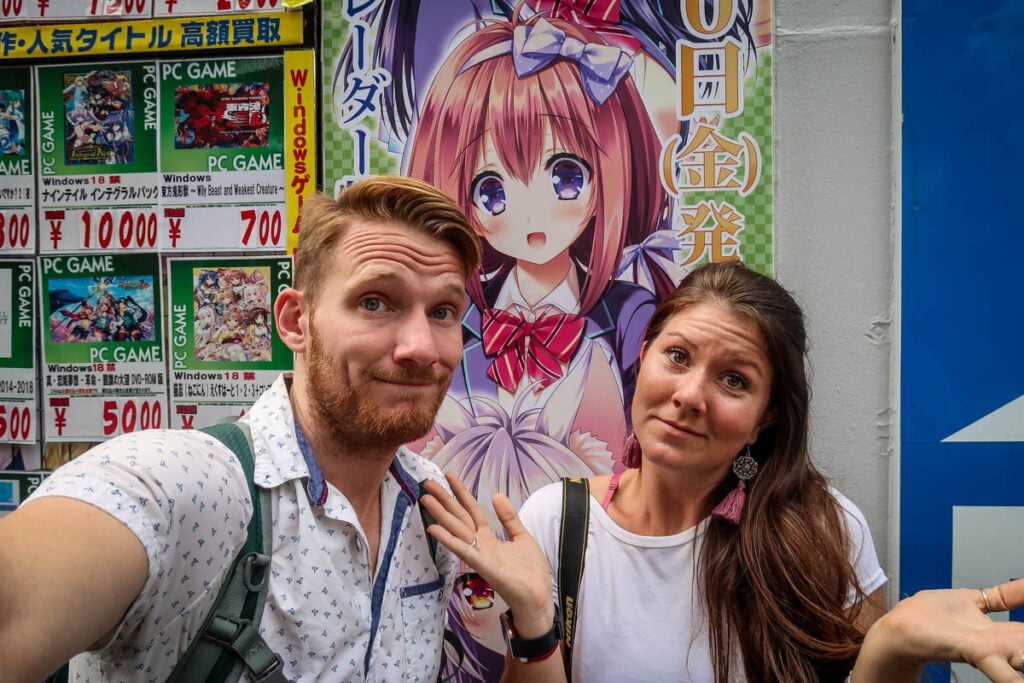
Before you hop on that flight to Japan, there are some things you should know.
This country has a complex culture, and there are definitely some manners and “norms” you should be aware of. There are also some Japan-isms that will leave you scratching your head… like, what are all those buttons for on Japanese toilets anyway?!
Don’t worry, we’ll give you the scoop! We’ve traveled to Japan three times now (and counting!) and have picked up some pretty good travel tips along the way. In this article we’re going over the essential tips for visiting Japan you should know before you go.

If you’re planning a trip to Japan, we have the ultimate resource for you!
This FREE PDF download includes everything you’re going to want to pack for your Japan trip, including what NOT to bring, plus tons of insider tips!
Sign up for our ultimate Japan packing list now and get a copy sent straight to your inbox.
1. Don’t worry too much about the language barrier
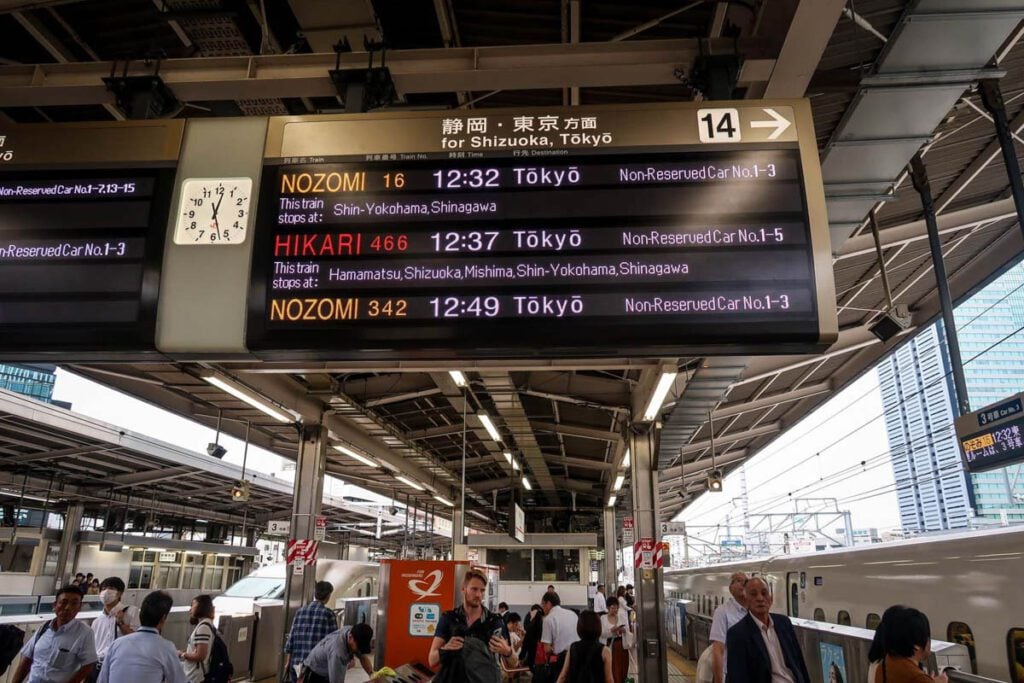
One of the things we get the most questions on is the language barrier in Japan. And after reading guide books and articles online, it can seem like traveling in Japan without speaking Japanese is impossible. But that’s far from the truth.
Honestly, we didn’t feel like the language barrier was too bad. (That said, we’ve spent a cumulative 3+ years living in and traveling through Asia, so we are used to language barriers.)
It is always respectful and recommended that you learn a few helpful words or phrases in the country you’re visiting, but we want to point out that it is possible to have a fantastic trip to Japan without having mastered the language.
This should put you at ease:
- In the event that you have a question, go to the JR counter and speak to an employee. They should have a translation device, which will help in the event that they aren’t confident with their English skills.
- Oftentimes restaurants have English menus (some even have pictures!)
- Hotel staff usually speak a bit of English
- At most restaurants there is at least one staff member who will be able to communicate with English speakers
- Oh, and the Google Translate app is literally the BEST THING EVER. Read about more apps we recommend downloading for your trip to Japan !
- Japanese people, in general, are very polite and kind. While they may not approach you, if you ask for help they will usually do their best to assist you or point you in the direction of someone who can help.
Learn a few words in Japanese, as it will show you’re trying. And be patient. Remember, you are a guest in another country, and while some people may know a bit of English, it is not their first language.

Helpful words & phrases in Japanese
- Hello: Konnichiwa (also means “good afternoon’)
- Good morning: Ohayō gozaimasu
- Thank you: Arigato gozaimasu (the “u” on the end of the word is almost silent)
- Excuse me: Sumimasen
- Cheers!: Kanpai!
- Delicious: Oishī
- More practical Japanese words and phrases
If you take one thing away from this point, I hope that it’s this:
There will be a language barrier while traveling in Japan, and you can’t expect people to speak English. BUT, it is definitely possible to communicate with simple vocab words, the Google Translate app, and a bit of patience.
2. Japan is super safe
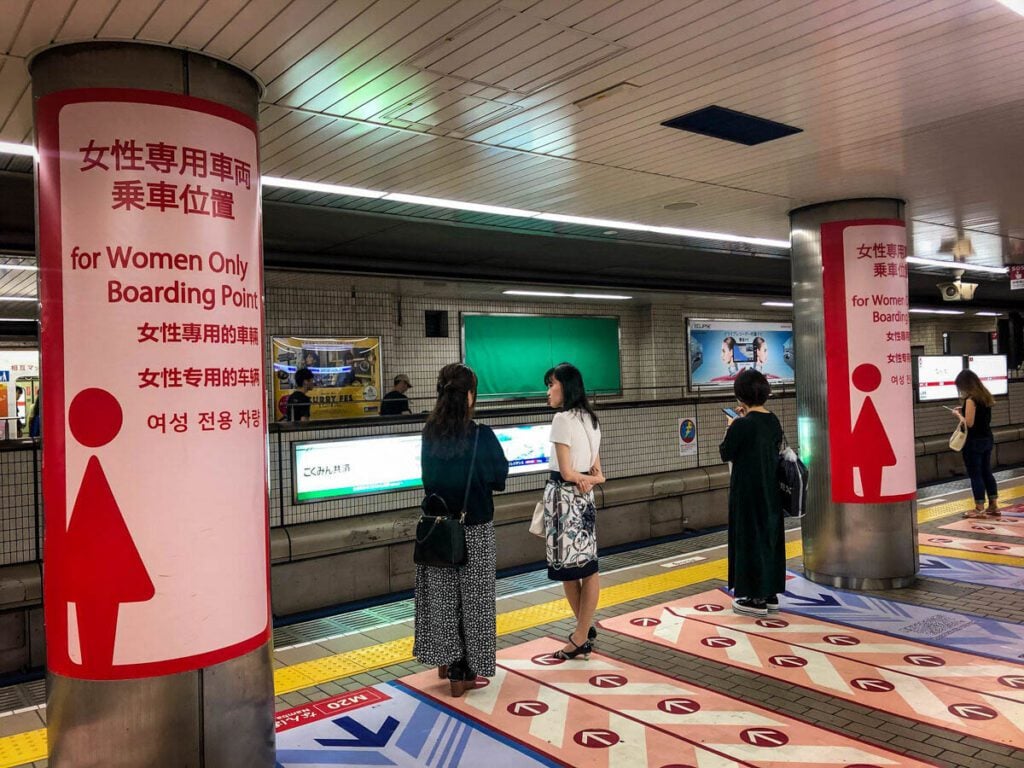
Like, very safe. Of course, you’ll still want to use common sense on your travels in Japan, but the chances of you encountering any dangerous situations or theft are very slim.
We’ve known people who have left their wallet on a crowded subway in Tokyo, only to have it hand-returned to them hours later. The thing we had to get used to was being mindful of our belongings when we returned to the U.S. after our trip to Japan!
Psst! Here are some essential travel safety tips you should know before any travels!
3. Do look into getting a Japan Rail Pass to save money
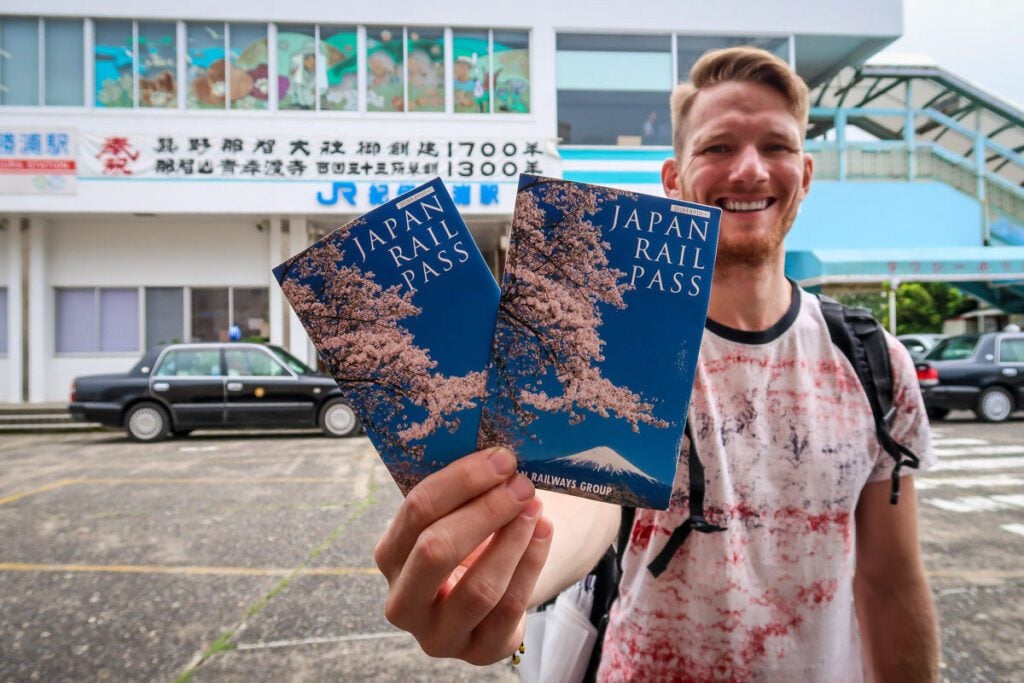
Essentially, if you plan to visit more than 2 cities during your trip to Japan, the JR Pass will almost definitely save you money .
We have a whole article detailing it and even a quick way to calculate whether or not it will be worth it for you… but chances are it WILL .

Good to know: A JR Pass is essentially the same price as a roundtrip ticket from Tokyo to Osaka. So many travelers in Japan will save lots of money by getting the pass.
Also, we didn’t know this until we were in Japan, but Japanese citizens actually cannot get this pass, and therefore pay a lot more than most tourists for train travel.
4. Book your major train routes ahead of time
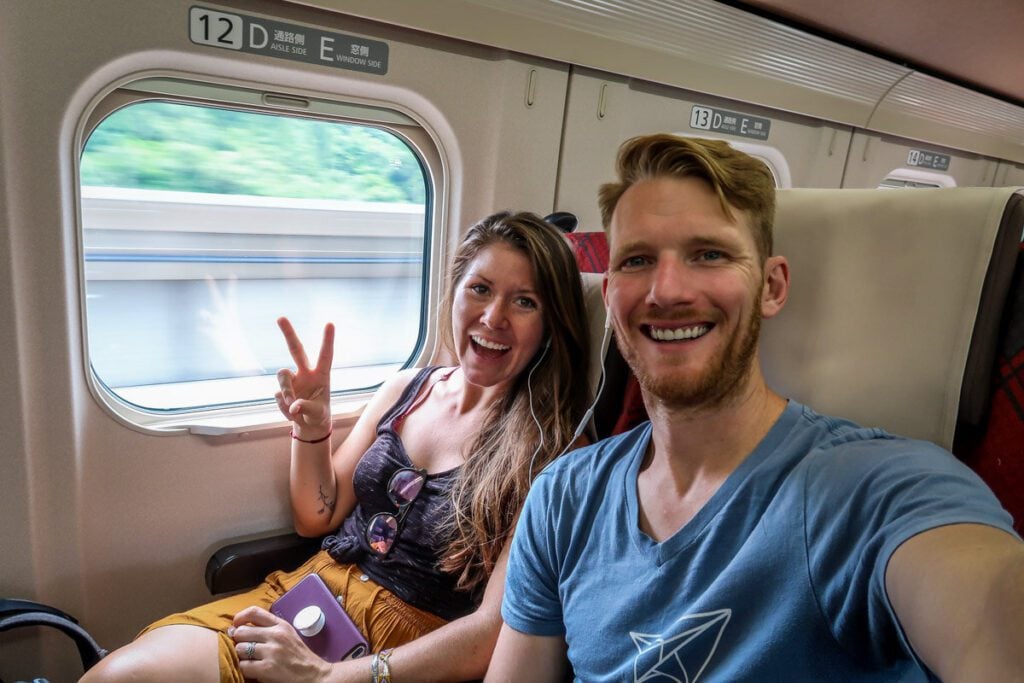
Many popular routes get fully booked up, so don’t wait until the last minute to reserve seats. For example, we had to stand for the 1.5-hour ride from Hiroshima to Osaka because we didn’t book our tickets in advance.
When you have the JR Pass , all train routes are free (there are a few lines that are not included, but you really don’t have to worry about those).
We’d recommend on your first day in Japan, to go to the JR ticket counter at the train station and reserve all your seats for your routes at once. You can always change your time and book another ticket later, but it’s good to have seats reserved.
If your route is fully booked, on every shinkansen train (bullet trains) there are a couple of cars that are for passengers that don’t have reserved seats. However, there is a high chance that you’ll be standing for that ride.
5. Do eat more than sushi and ramen
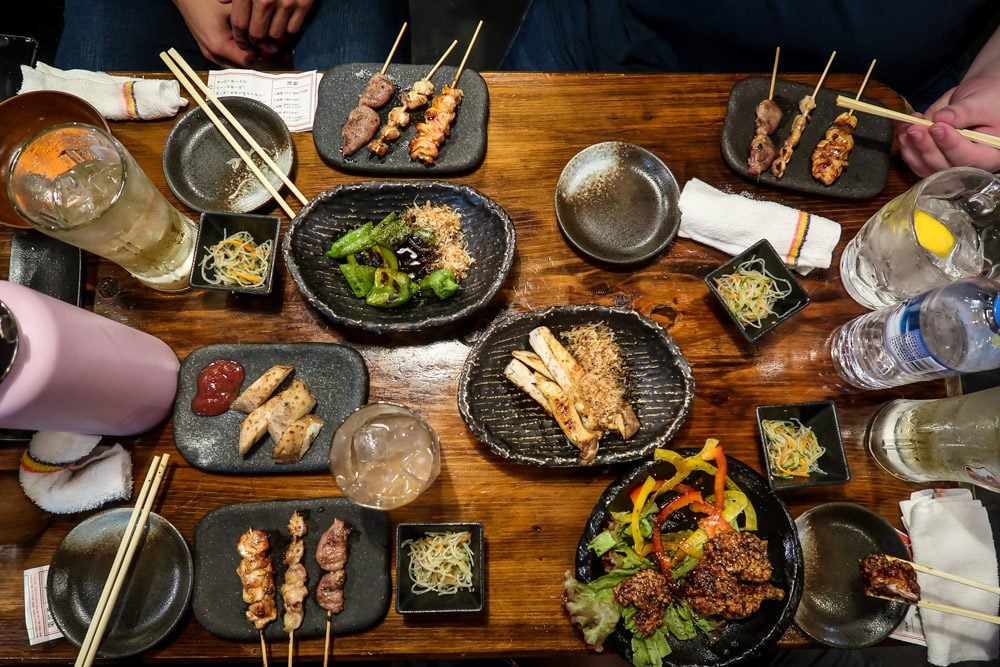
Before our first trip to Japan, our knowledge of Japanese cuisine started and ended with sushi and ramen. We didn’t know much else about it. But we’re here to tell you there is SO much more to this cuisine.
Check out our guide to the best foods to try in Japan , which even has a checklist you can download so you can make sure you don’t miss any foods! The more you know before your trip, the more you’ll be able to try.
6. Mind your manners
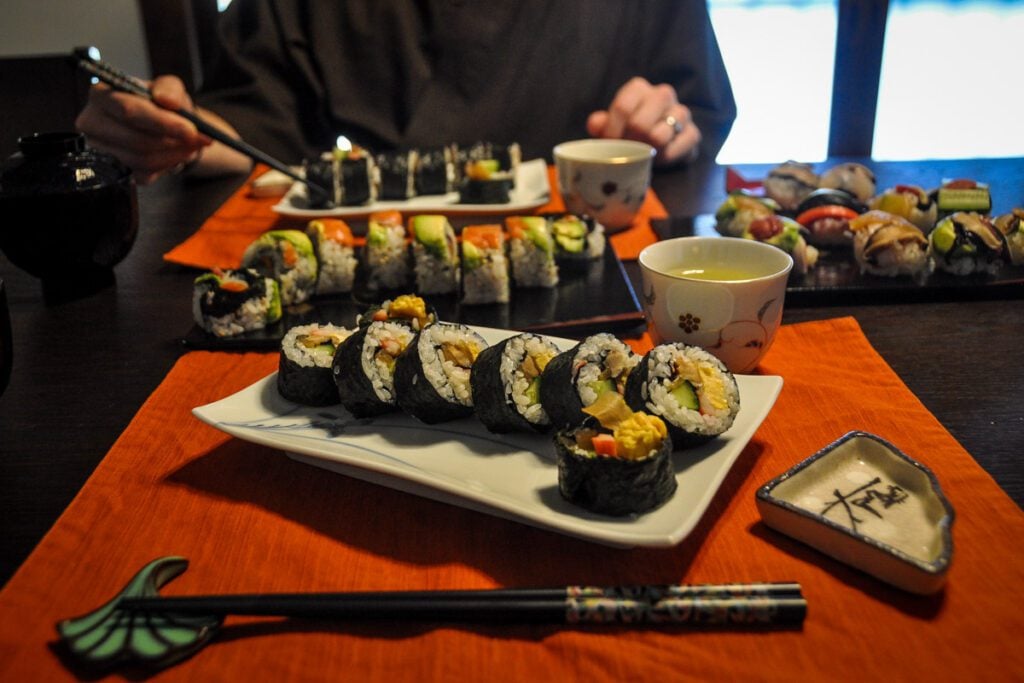
Manners are important in Japan, and it’s a good idea to read up on some Japanese etiquette before your trip so you don’t embarrass yourself or offend someone.
Here are a few manners to keep in mind:
- Instead of pointing with one finger, use your entire hand
- Avoid physical touch, like hugging, until you know if someone is comfortable with it. Also, public PDA is kind of a no-no
- Don’t eat while walking
- Be quiet on public transportation and avoid taking phone calls if possible
7. Don’t tip your server
While it is a common practice in North America, Europe and many other parts of the world, tipping is not part of Japanese culture and can be seen as mildly rude in some instances.
The Japanese believe that good service is expected (whether it be at a restaurant or tour) so there is no need to add extra money in the form of a tip.
Try to show your appreciation for a meal or tour by verbally thanking the staff, cook or guide. Leaving a review is always helpful so other travelers know what to expect.
8. Forks are few and far between
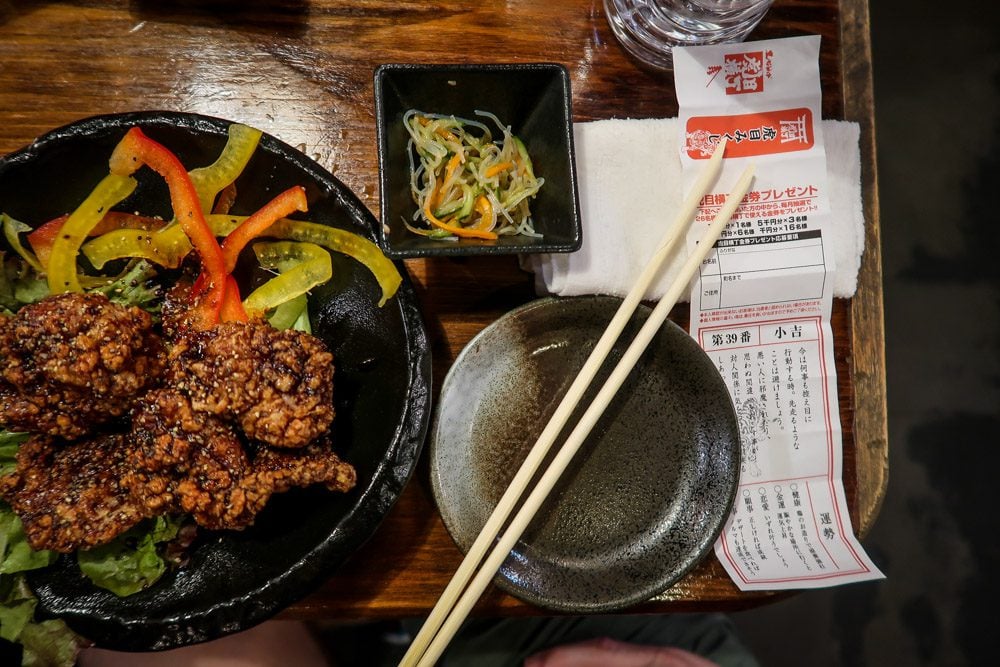
You’ll want to practice your chopstick skills before your trip to Japan because it is the utensil of choice, and very rarely will you find forks.
Hint: Chopsticks also make a great souvenir from Japan !
9. Do slurp your noodles
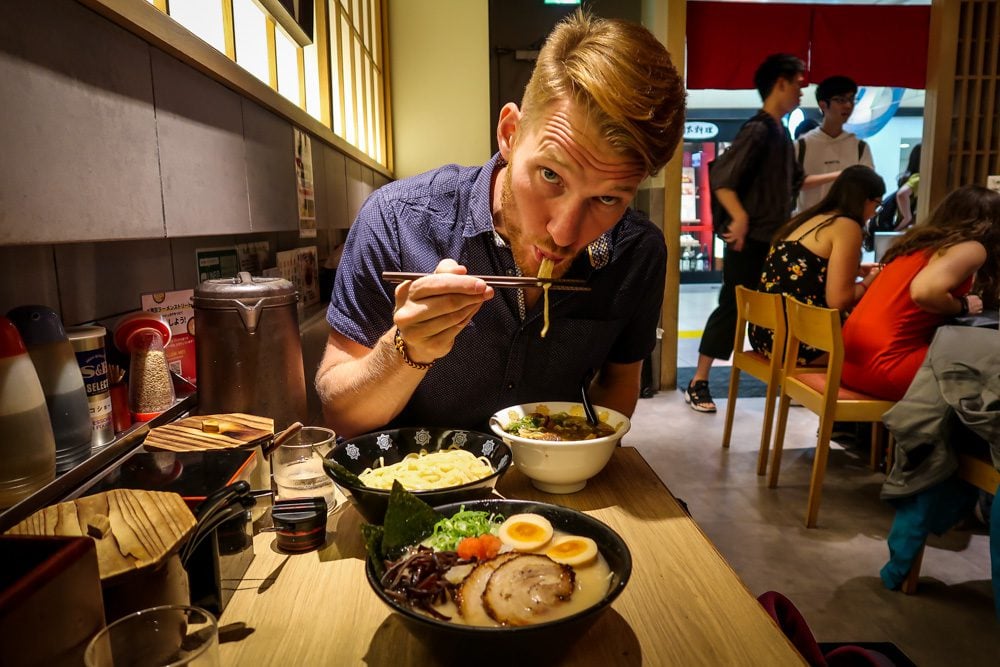
Everyone knows that slurping noodles is the best way to enjoy them , right? Well, here’s a fun fact about Japan you didn’t know you needed: it’s actually not considered rude!
In Japan, slurping your noodles is actually considered a sign of appreciation . It shows the restaurant or chef that you’re enjoying their food. Plus, slurping can even enhance the flavor!
10. Don’t forget to take your shoes off
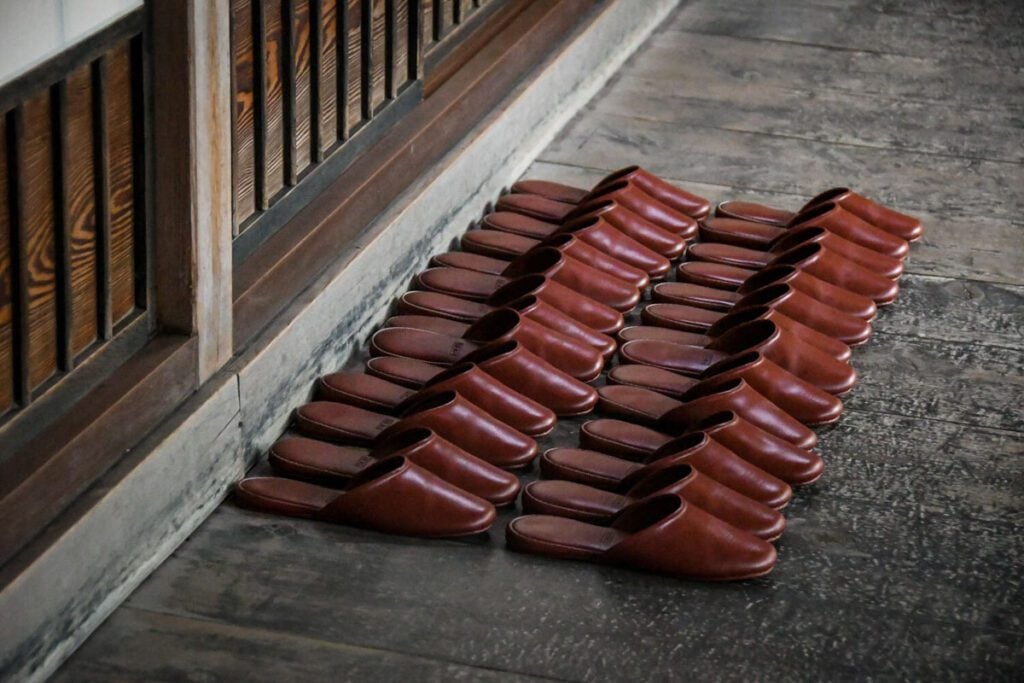
When entering guesthouses, homes, holy sites, and some stores, you will need to remove your shoes. This is typically indicated by floor that is different levels — either raised or lowered once you enter.
Usually there are indoor slippers that you can wear once you remove your shoes. The exception to this is in rooms where the floor is tatami mats — a delicate traditional flooring made of rice straw. These are common in traditional guesthouses and teahouses, inside which you can wear socks.
Also, some guesthouses have bathroom slippers. Yes, you read that right, shoes for the potty. Typically they will be sitting just inside the bathroom door and you’ll leave your indoor slippers outside of the bathroom.
11. Do learn onsen etiquette
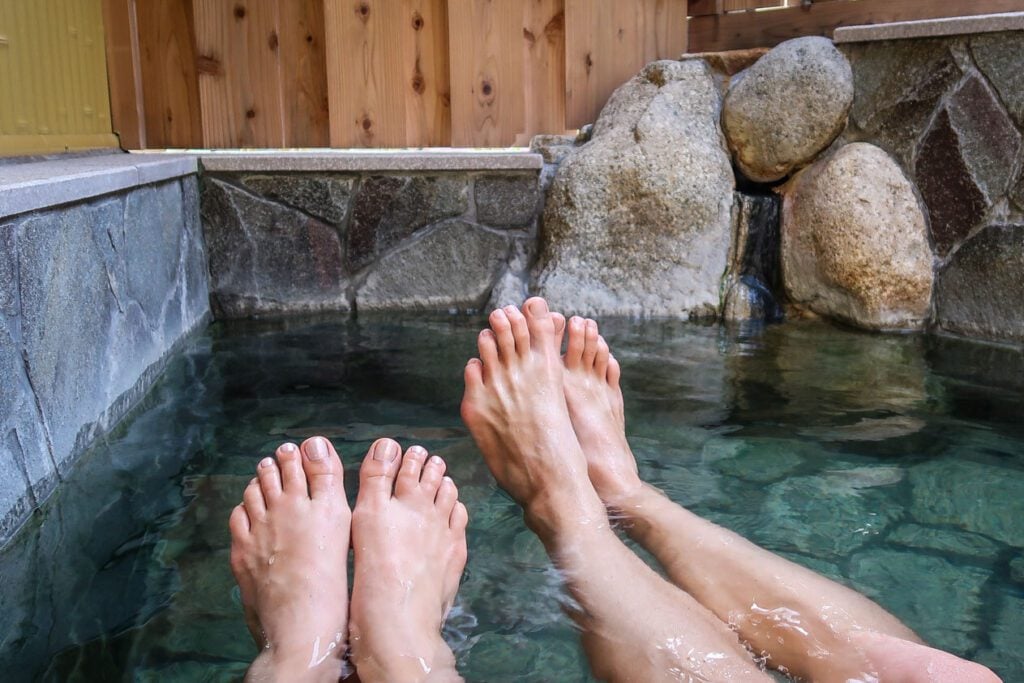
Soaking in an onsen should definitely be on your list of top things to do in Japan !
Hold up, what is an onsen, exactly?
An onsen is a Japanese hot spring with a bathing facility.
Japan has a lot of volcanic activity, meaning there are many onsens to choose from all around the country!
But before you start shedding your clothes, there are some important rules you should know so you don’t embarrass yourself…
Basic onsen etiquette
- Shower before you get in , oftentimes it’s at a shower where you will sit on a stool and rinse yourself off.
- Unless otherwise noted, do not wear a bathing suit.
- You can bring a towel into the bathing area, but don’t let it touch the water (many people put it on top of their head).
- Tie up your long hair so it doesn’t touch the water.
- Know the onsen’s policy on tattoos. Many onsen do not allow guests with tattoos, so you’ll have to seek out onsen where it is accepted or opt for a private onsen facility.
We go into more detail about onsen rules in our Japanese etiquette article.
Alternative: For those of you who just can’t get over the whole naked in public thing (I get it!), you may want to consider staying at a ryokan with a private onsen. This means you can reserve a time slot for yourself (and a travel partner if you wish).
11. Understand the difference between a shrine and a temple
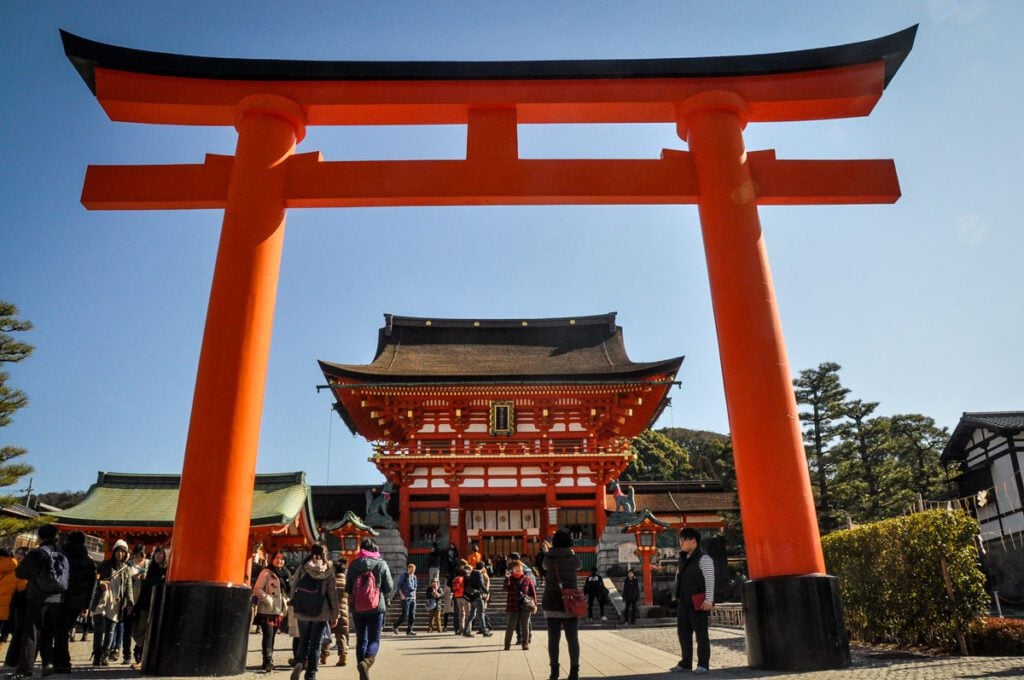
Before traveling to Japan, it’s very useful to know the difference between a shrine and a temple. Here is a general guide to help you:
Shinto Shrine:
- recognize them by the tori gates
- purification fountain (called chozuya ) with ladles
Buddhist Temple:
- large incense burner
- statues of Buddha
- sometimes a graveyard is attached
We have a whole section on how to visit a shine and a temple in our Japanese etiquette article.
12. Japan is not as expensive as you might think
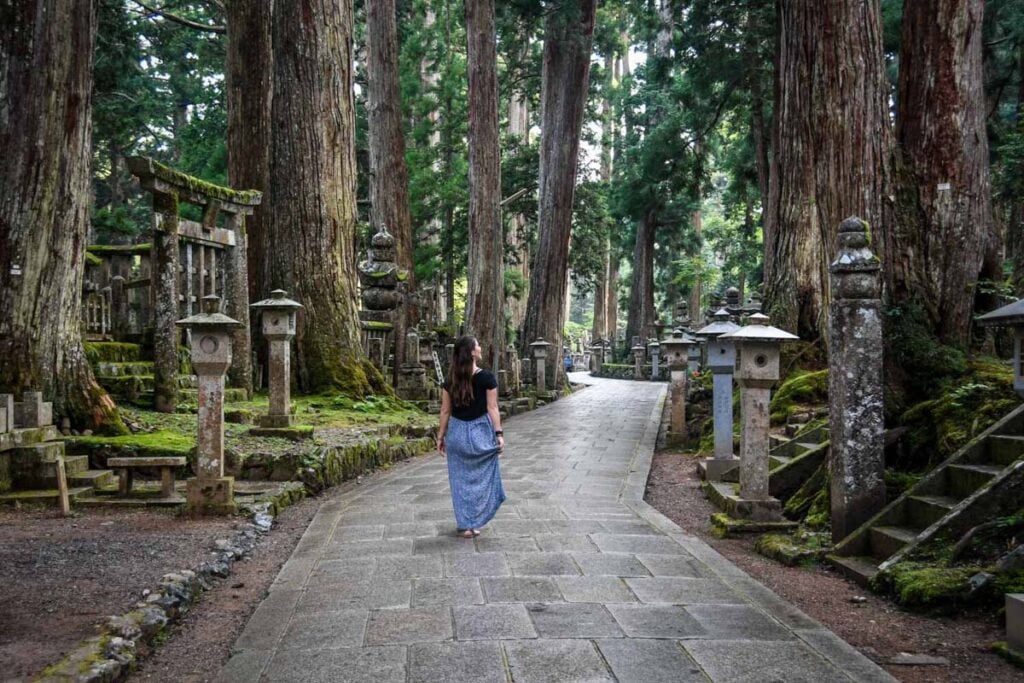
We’ve traveled extensively around Asia, and it’s true — Japan is one of the more expensive places we’ve visited in this region of the world. That said, it is still possible to travel Japan cheaply.
You can find budget accommodation in hostels, capsule hotels, or even Airbnbs . You can save money on food by eating at convenience stores, cooking some meals yourself, and planning out “splurge meals”. Cut transportation costs by getting the JR Pass , and enjoy all sorts of free things to do around the country.
Psst! We have loads of info on how to book Airbnbs , including red flags to watch out for when booking and our favorite Airbnbs.
Traveling to Japan doesn’t have to be crazy expensive. We’ve rounded up some of our top tips for traveling to Japan on a budget .
Moral of the story: If Japan is a country you’ve been dreaming of visiting, don’t let costs inhibit or deter you from making your dream a reality!
Related: We’ve got tons of super practical tips to show you how we afford to travel !
13. Do carry cash AND credit cards
Many places in Japan accept foreign credit cards with no problem. And if you have one with no foreign transaction fees that earns good rewards, you’ll definitely want to bring it along and use it as much as possible.
That said, there are still small shops, restaurants, and even guesthouses that only accept cash , so you’ll definitely want to have some Japanese yen on hand.
14. Withdraw cash from 7-eleven ATMs
The ATMs in 7-elevens are the most reliable ATMs in Japan with no fees for international cards. As a bonus, you can find 7-elevens everywhere! However, it’s good to note that some of the 7-eleven ATMs in popular spots do now charge a fee, so try to withdraw in less touristy areas.
Insider Tip: We always get foreign currency by withdrawing from ATMs, as it gives you the best exchange rate. To avoid those pesky ATM fees, we use our Charles Schwab debit card, which reimburses all ATM fees at the end of each month. It is the BEST card ever! Read more about which travel credit cards we recommend .
15. Don’t throw out your coins
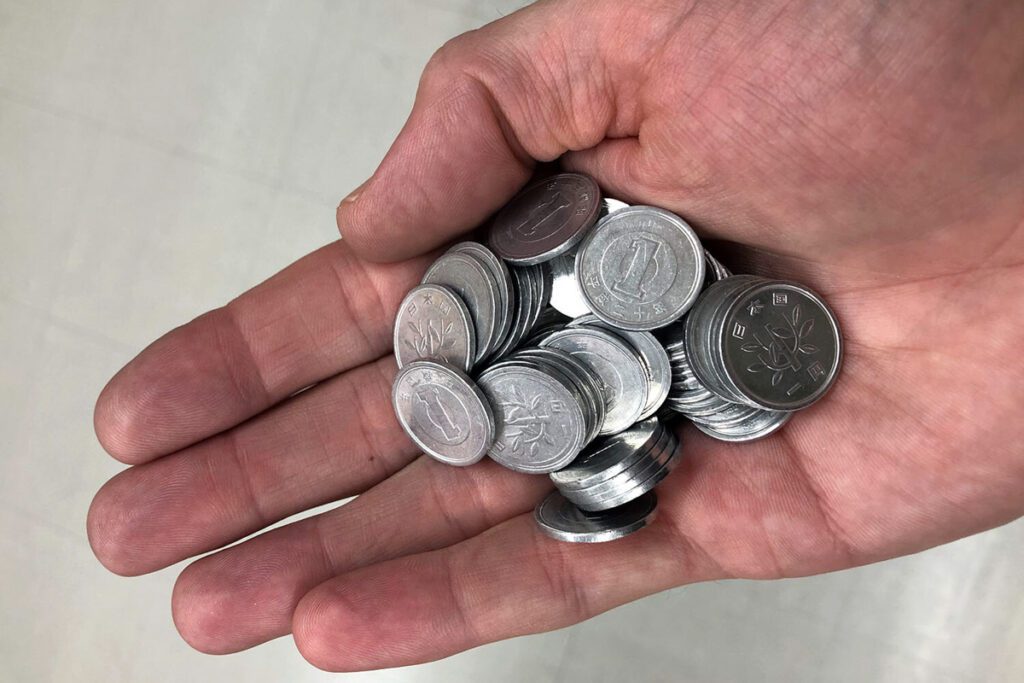
Some of those yen coins are worth almost $5 USD! I don’t know about you, but I typically throw coins around without much care — I mean, it’s no big deal if I misplace 12 cents… But in Japan, losing a handful of coins could add up to big money.
While on a train, a bunch of coins fell out of Ben’s pocket and we had to get down on our hands and knees to find them all before our stop. When we counted them all up we realized we nearly lost $24 USD in coins. Yikes!
When traveling in Japan it’s a good idea to have a coin case to keep them secure.
Tip: We met another traveler who had two coin purses — one for the large coins and one for the small ones to keep them organized.
16. Don’t get lost
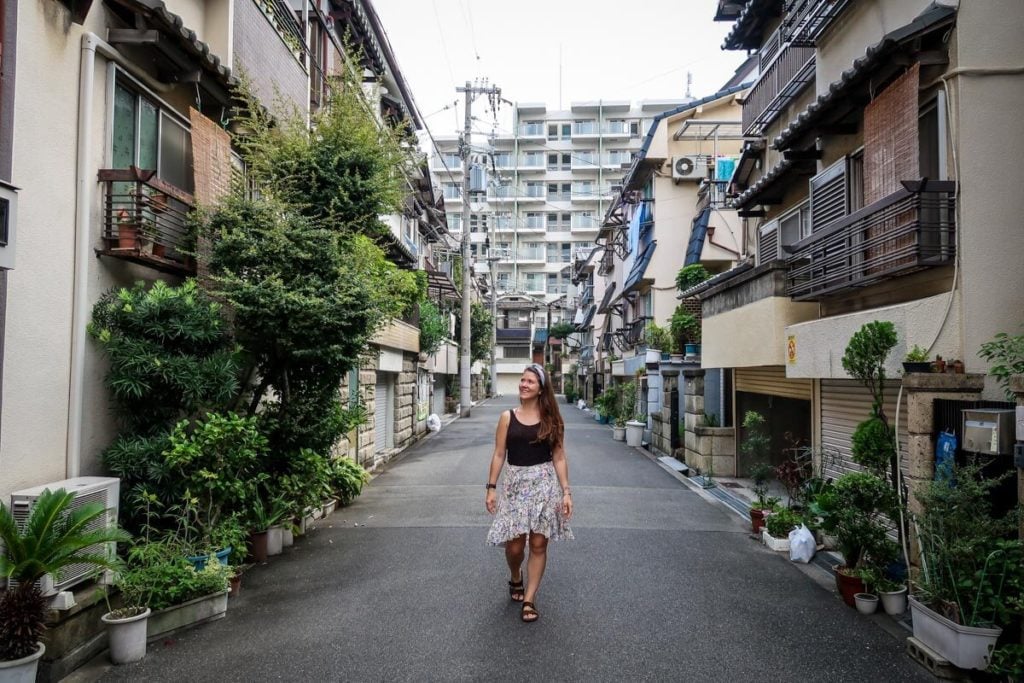
If you’re someone who’s not great with directions, you may find it alarming to find out that streets don’t have names in Japan… So how the heck are you supposed to find your way around?!
Although there are no street names, it isn’t a free-for-all. Addresses in Japan use an area-based system, where each area is divided into smaller areas .
The largest of these is called a prefecture. Prefectures are broken down into cities, and the cities are divided into wards.
Getting around and following directions in Japan is definitely a learning curve, so it’s worth studying some maps and taking time to research the numbering system before visiting.
17. Hold onto your trash
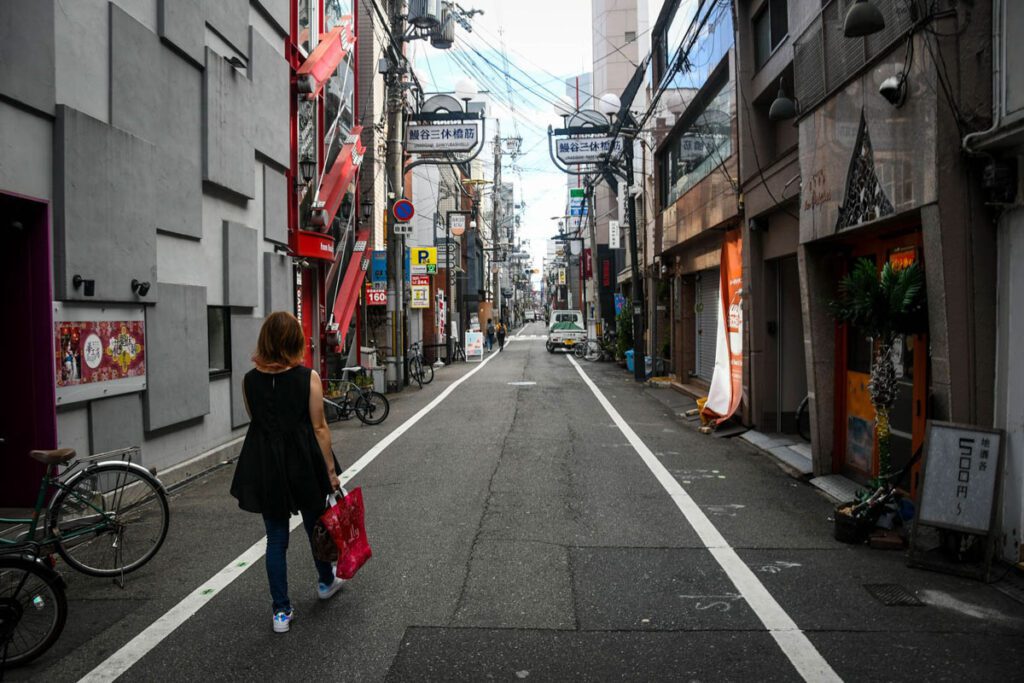
There are few trash cans on the streets in Japan. After hearing this, you might be surprised to learn that even though there is a shortage of garbage bins, there is very little litter in Japan.
Cleanliness is a big part of Japanese culture, which is reflected in the (mostly) litter-free streets.
So do as the Japanese do, and hold onto any wrappers until you find a bin. There are typically trash cans at convenience stores, meant for customers to dispose of their garbage.
18. Do the work to avoid plastic waste
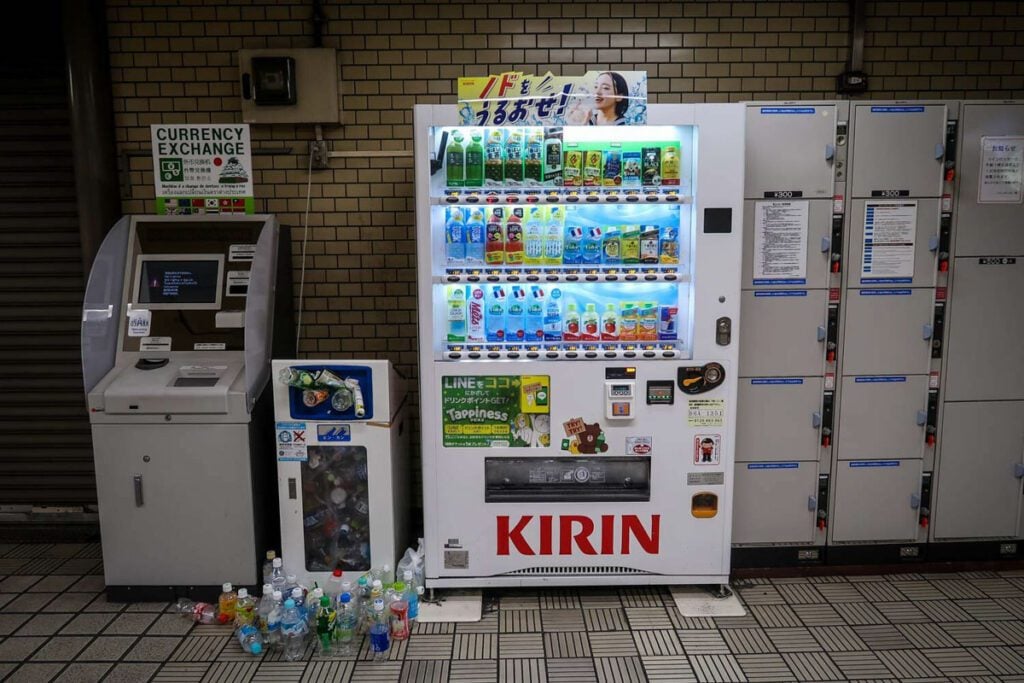
On the surface, Japan seems to be environmentally conscious: there are recycling bins every so often and the streets are very clean.
But as soon as you stop into a convenience store, you’ll notice that this country, like much of Asia, relies heavily on plastic packaging. And the super unnecessary kind, like plastic wrappers around single bananas.
As a traveler, there’s not too much you can do to change this, but you can reduce your own plastic waste by packing items that’ll help you turn down single-use plastic items.
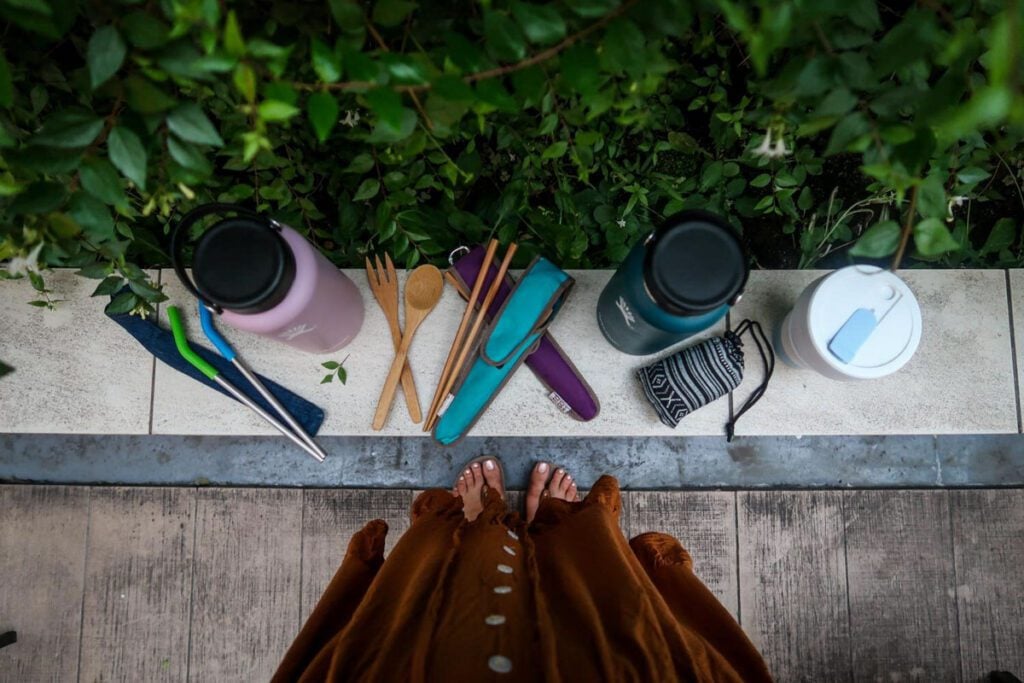
Here are some items we’d recommend packing:
- reusable utensils
- reusable straw
- water bottle *
- reusable bag
*Yes, you can fill up from the tap and drink the water in Japan! There’s an app called MyMizu that has a map of refill stations (mostly in larger cities, but I’m sure they’re expanding it as data is available).
Check out our eco-friendly packing list for some more ideas!
19. Choose an interesting hotel option
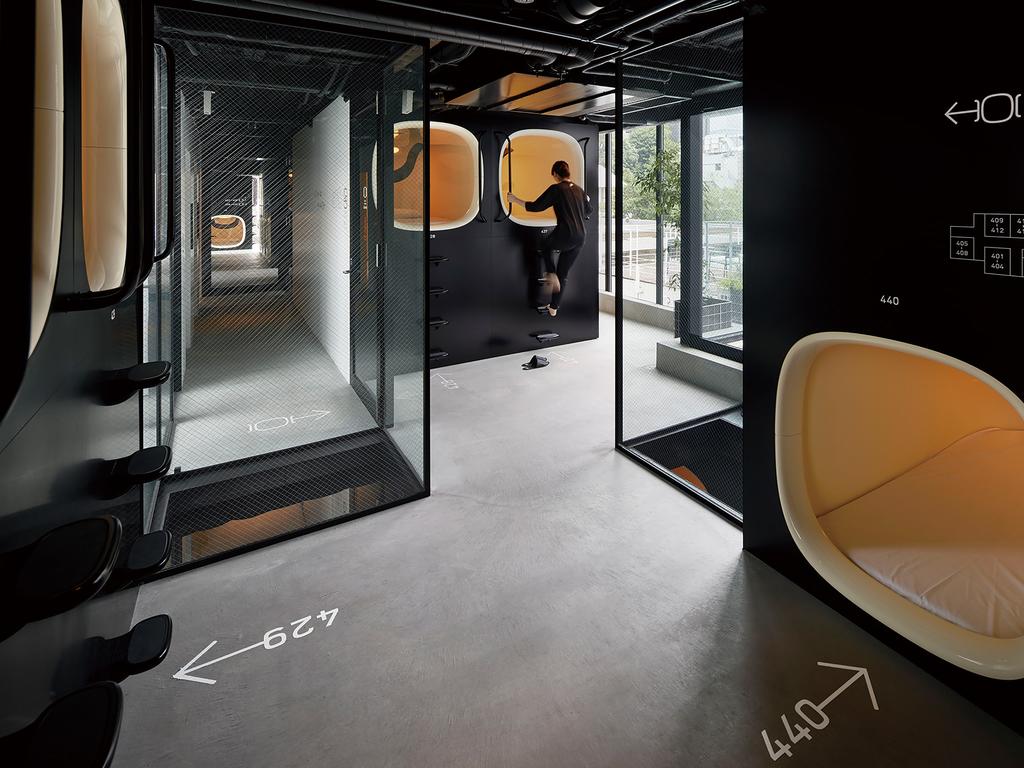
While traveling in Japan, you might want to try out a few unique hotel stays that you can find only in Japan.
- Ryokan: This is a traditional Japanese inn that typically provides guests with robes and meals. There is often a shared bathroom and onsite onsens that can be used by guests.
- Capsule Hotel: Made to maximize space in crowded cities, capsule hotels provide guests with privacy and an affordable stay. However, don’t expect to stand up in your pod! Staying in a capsule hotel is definitely a top Japanese experience to try out on your trip!
- Robot Hotel: There are even hotels run by robots! Like we said, #OnlyInJapan
20. Learn how to use a Japanese toilet
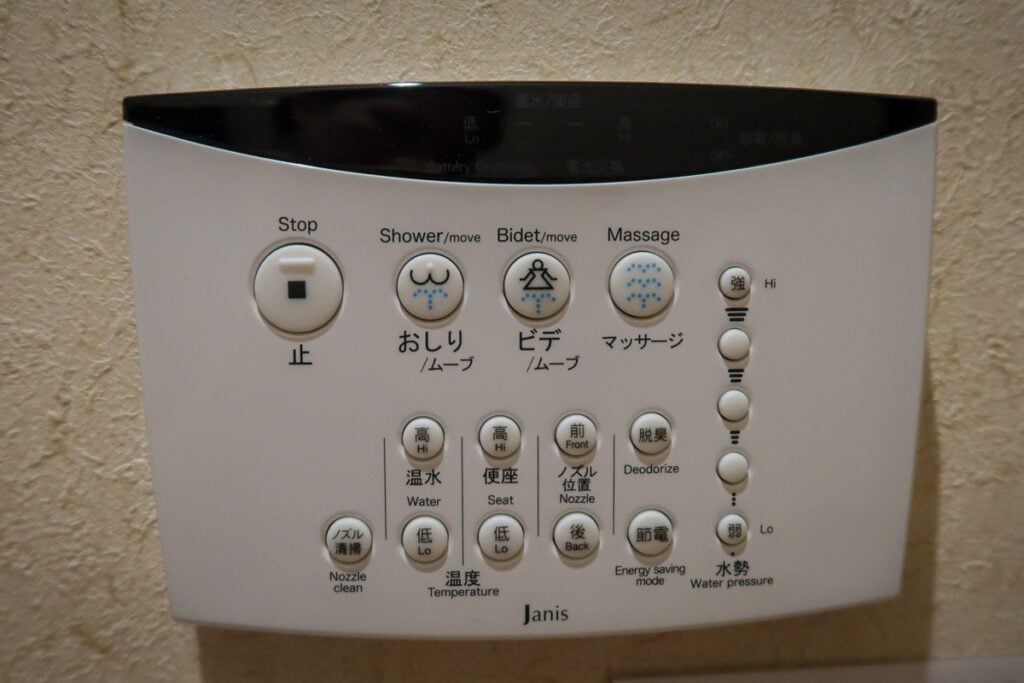
You’ve probably heard about Japanese toilets, and what the rumors say is true!
There are all sorts of buttons that perform different functions. For example, one button may play waterfall sounds or music to cover up— ehem —some other sounds you may not want the person in the next stall to hear. Other buttons will trigger a bum wash and can be set at varying pressure strengths.
All those buttons can be a little intimidating at first, but try them out (locate the STOP button first) and take advantage of those fancy toilets while you can. Because you surely don’t have those fun features at home!
21. Download these apps before you get to Japan
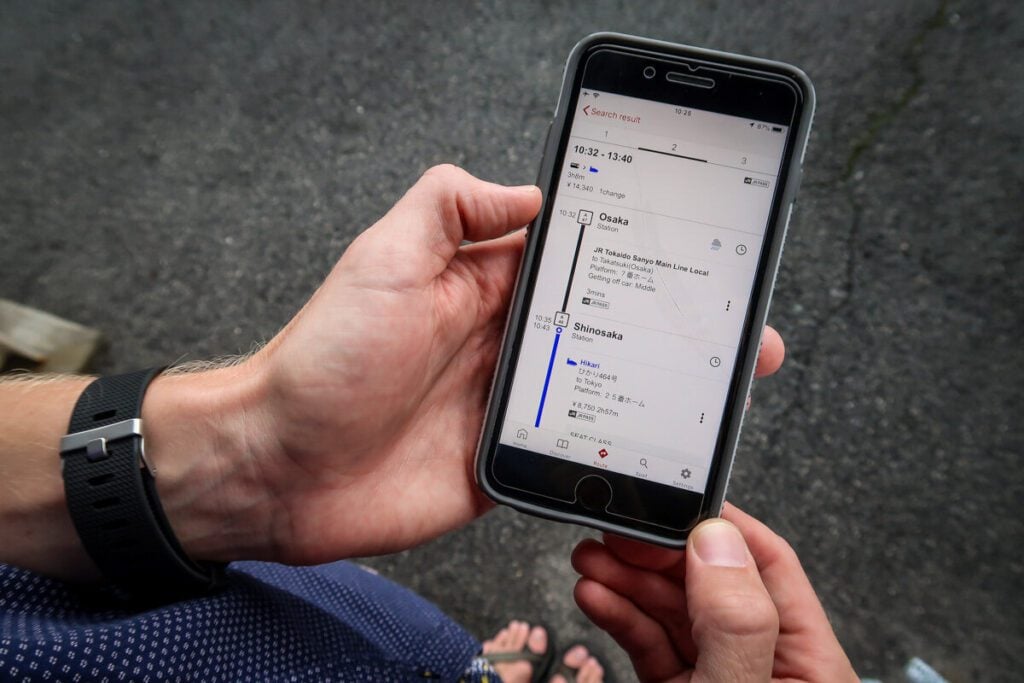
We have a whole article detailing all the best Japan travel apps you should download before your trip, but the 2 best ones that you NEED to download are:
- Japan Official Travel App
- Google Translate
You will thank us because they will come in so handy during your trip!
22. It’s difficult to be gluten-free in Japan
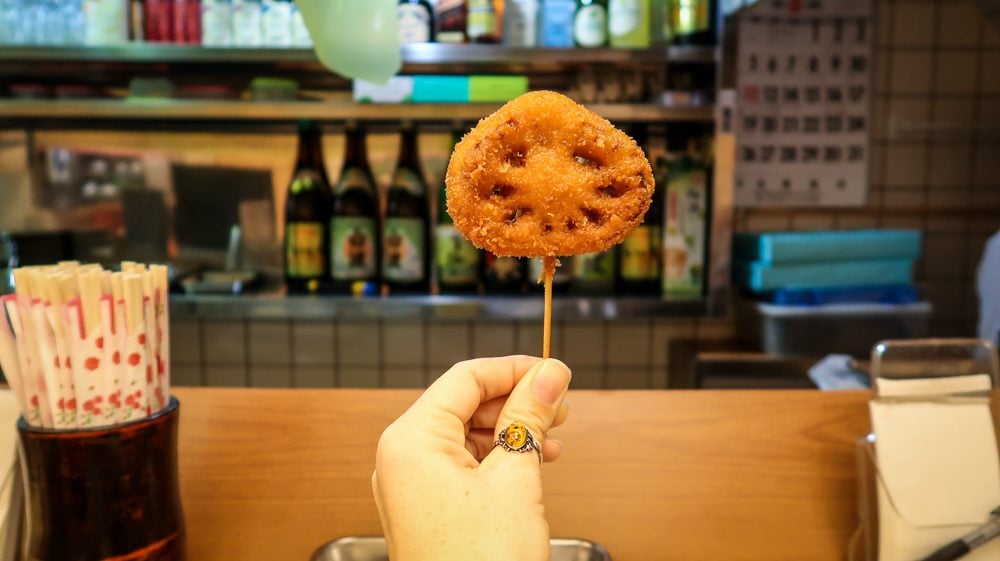
While the abundance of rice may make you think Japan would be an easy country for gluten-free travelers, that’s simply not the case. Soy sauce and other wheat-based seasonings are an integral part of Japanese cuisine, making it hard to avoid gluten.
Read this for more info on gluten-free travel to Japan .
23. Be on time
In Japan, it is seen as rude to be late, and thus, everything in Japan is run very strictly according to the clock.
This means trains leave exactly as scheduled and guests are often asked to show up to guided tours 15 minutes in advance. If you have a tendency to be late (I’m right there with ya!), be sure to pay extra careful attention to the time during your trip to Japan.
24. Utilize coin lockers to make things easy
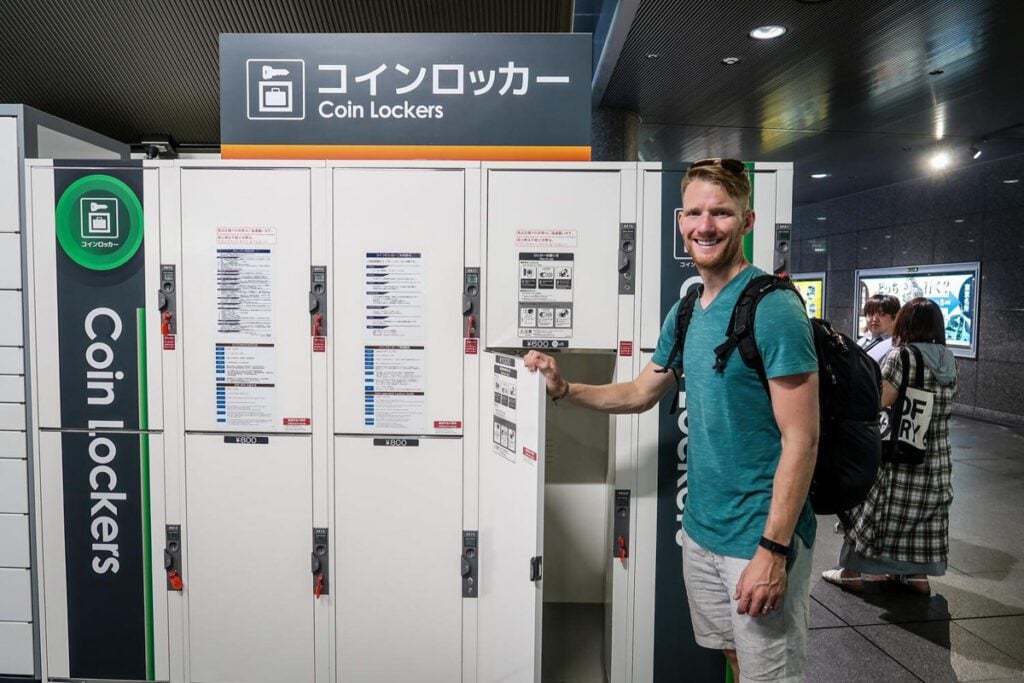
Nearly every train station has lockers which you can use to store belongings for a reasonable price. There are usually different sizes available, so you can store anything from a purse or small daypack to a large suitcase.
This is handy when you need to check out of your hotel but want to spend the day exploring.
Insider Tip: If you have a suitcase that you don’t want to bring with you on the train, there are luggage transport companies that can get it to your final destination for you!
25. Theme cafes are part of the experience
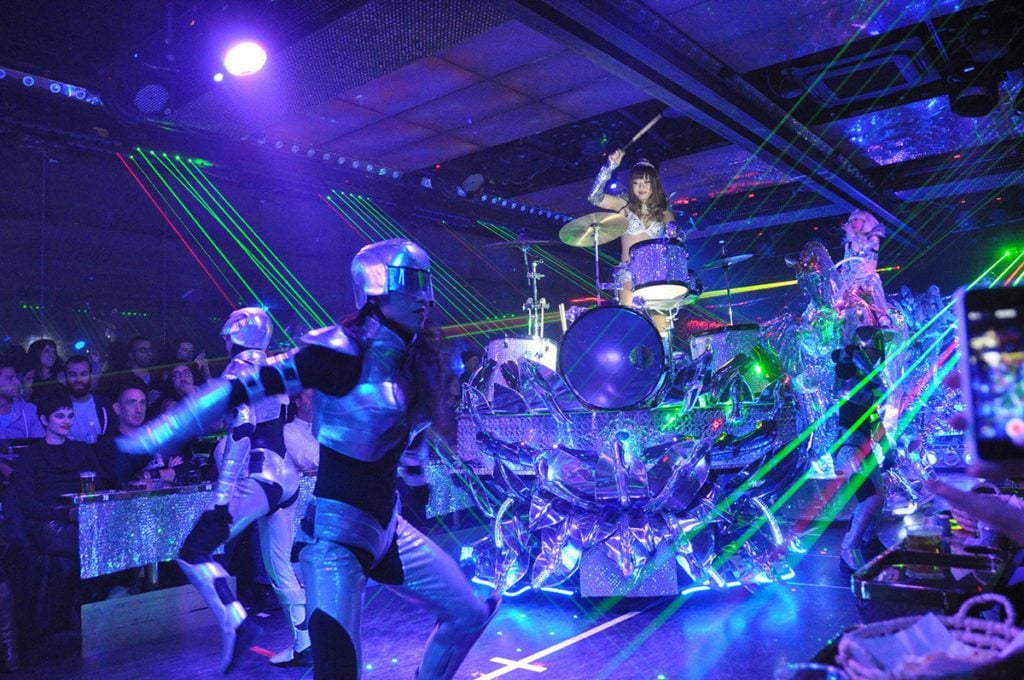
Japan is known for all things quirky, and this applies to restaurants and cafes.
The famous Robot Restaurant , with its laser beams, giant robots and scantily clad performers, is an example of something you can only find in Japan. But the theme restaurants don’t stop there. There are plenty of other over-the-top themed restaurants and cafes in Tokyo and Osaka you can visit to get the full experience.
However, it’s important to beware and do a little research before patronizing them.
Some of these theme cafes have a dark side. For example, many of the animal cafes (hedgehog, owls, sheep, etc.) do not have a safe and healthy environment for the animals. Also, there are anecdotes of young waitresses being exploited in the infamous “maid cafes”.
And no matter which cafe you go to, just remember, you’re not there for the food, which is usually sub-par. And it’s also worth noting, you’re paying for the experience as well!
26. Staying connected is easy
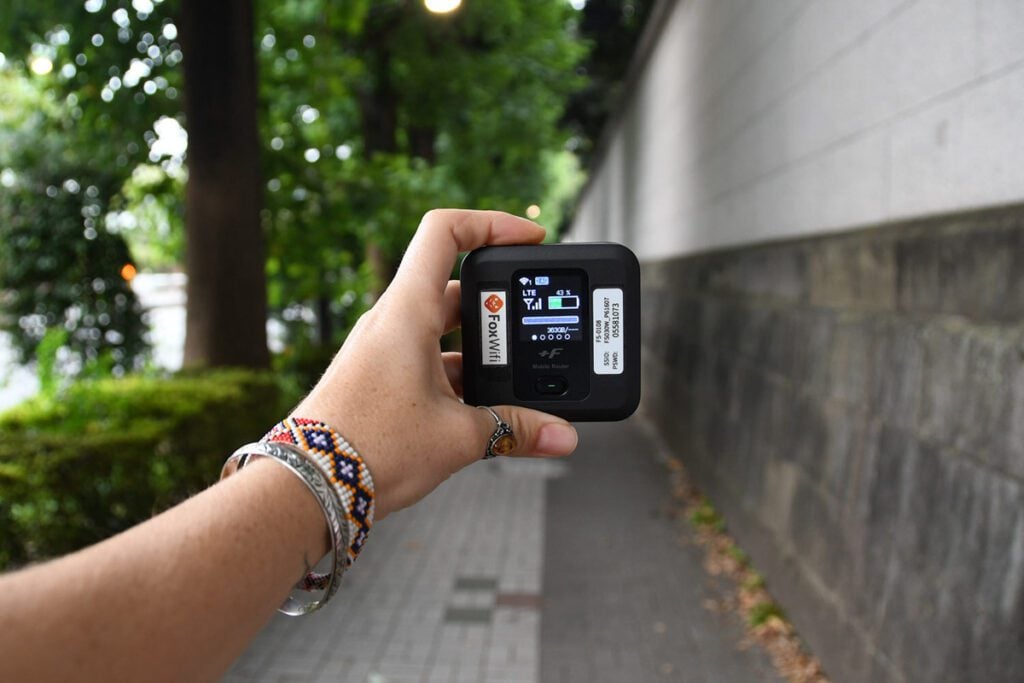
Staying connected to the Internet is very useful when traveling in Japan. And not just because you can post your pretty pictures to Instagram to make all your friends jealous…
Having an Internet connection will make your travels SO much easier when it comes to translating Japanese writing and getting directions for the notoriously confusing train and metro systems.
Trust me, having translating and navigating abilities in Japan is an absolute LIFESAVER.
The two best ways to stay connected is with a SIM card or via a hotspot. The best option is going to totally depend on your needs and budget, and we’ve compared them here so you can choose the best one for you.
27. Convenience store culture is a thing
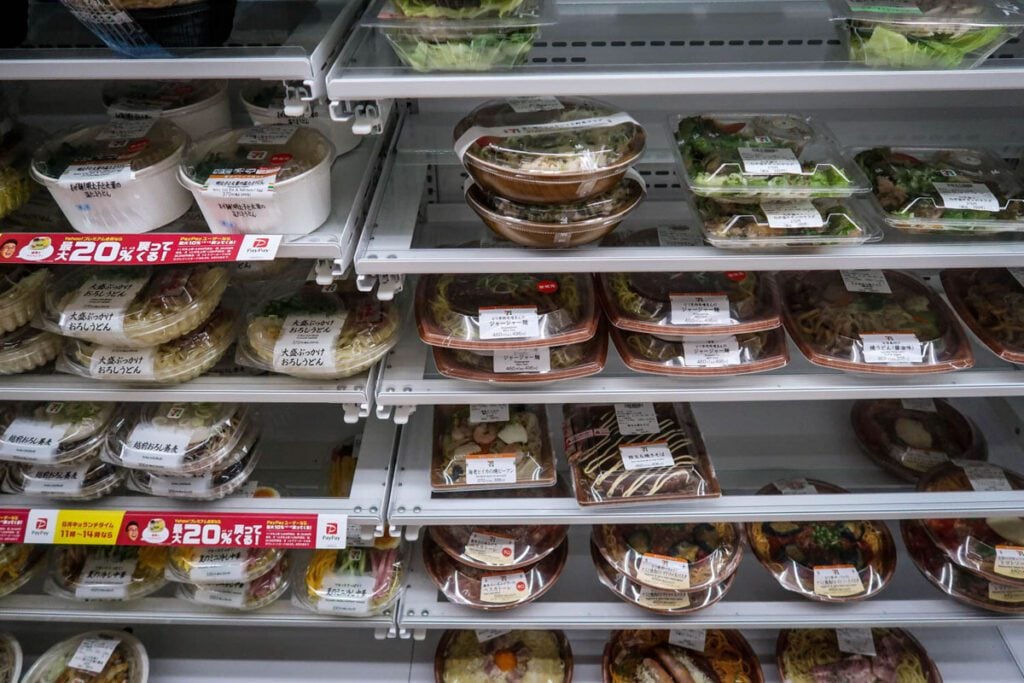
Convenience stores are a big deal in Japan.
And the food options in Japanese convenience stores are much larger — and less sketchy — than in most other places around the world. I mean, I would NEVER get sushi from a convenience store in the U.S., but I definitely did just that in Japan. And it was good!
You can literally eat breakfast, lunch, and dinner (and all your snacks too!) from convenience stores. The most popular chains are 7-Eleven, Lawsons, and Family Mart, and you can find them on just about every city block. No joke.
I will say that at the end of the day, the food you’ll find — while good — is still processed, packaged food. Some people claim they would live off of convenience store food in Japan. I am not one of those people!
I did enjoy it in moderation, and loved being able to try some super quirky treats, like Sugar Butter Sand Tree Cookies , which are weirdly delicious and familiar-tasting!
28. Don’t expect to eat lots of fresh fruits & veggies
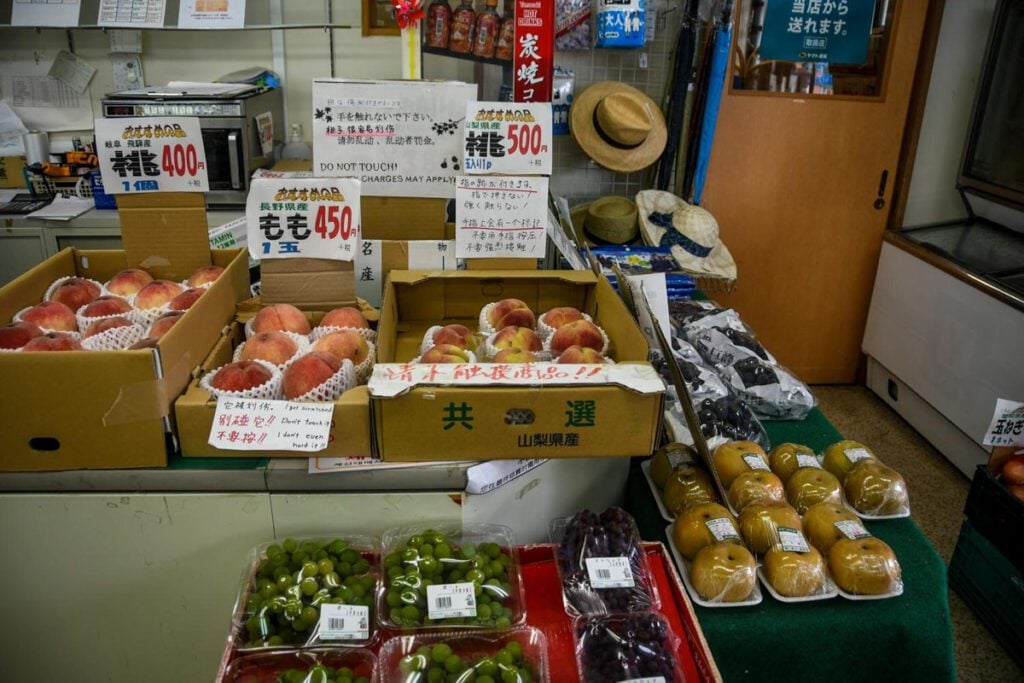
It might be good for some travelers to know that you should be prepared to go without a ton of fresh veggies and fruits for a while. We usually eat lots and lots of fresh vegetables and fruits, so we felt a bit “heavy/bloated” during our time in Japan.
You’ll find some vegetables cooked or fried in your meals or a shredded cabbage “salad” on the side, but not too much more than that. And fresh fruit is pretty expensive, so it’s more of a treat than a typical snack.
We had been living in Bali for 3 months before our trip to Japan, where our daily diet consisted of giant fresh salads and smoothie bowls. Let’s just say that Japan goes a lot heavier on the rice, noodles, meats and seafood than on fresh veg!
If you don’t eat that much fresh produce regularly, you might not notice too much of a difference.
Tip: Also, while convenience stores are great, and just that — super convenient! — I found it hard to find healthy snacking options. Next time I travel to Japan, I’ll pack some dried fruit (not covered in sugar), nuts, protein bars, etc.
29. Get a pre-paid transport card on the app
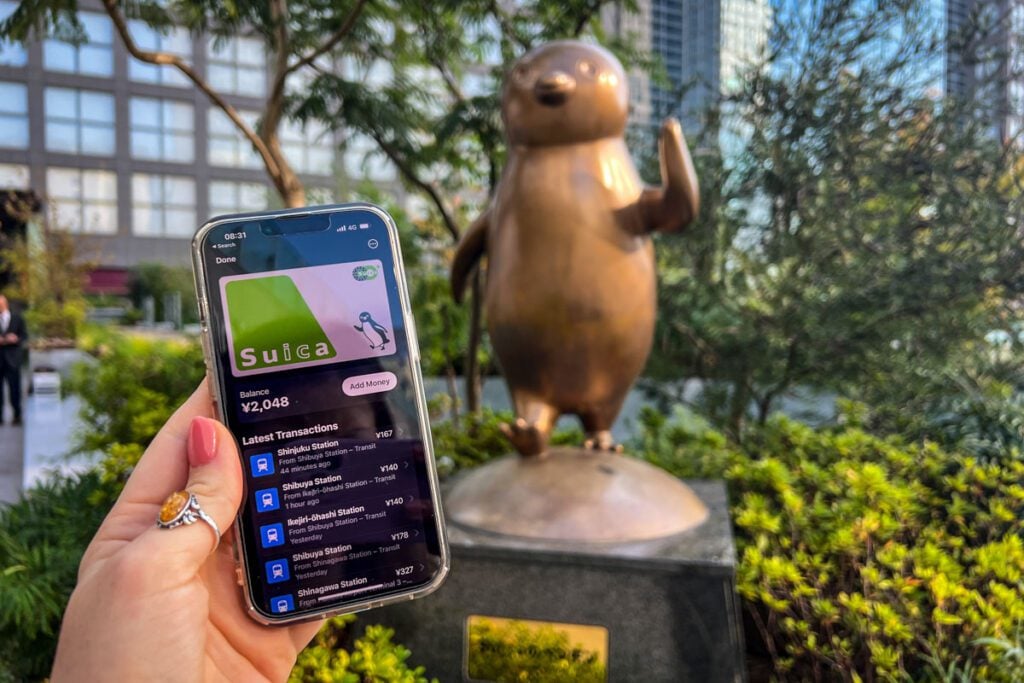
These are essentially the metro cards in Japan ( Suica is for Tokyo and the surrounding area, and ICOCA is for Kyoto/Osaka and the greater Kansai region).
They will save you money on each trip , and are more convenient than having to purchase a ticket each time.
Due to a shortage of physical cards, you are now required to get an app on your phone . Simply tap on and off, eliminating the hassle of purchasing individual tickets. Note that Visa isn’t accepted, so rely on Apple Pay, Mastercard, or American Express for top-ups.
You can use your card for purchases in convenience stores, which is handy when you don’t have cash.
30. Do pack light for Japan
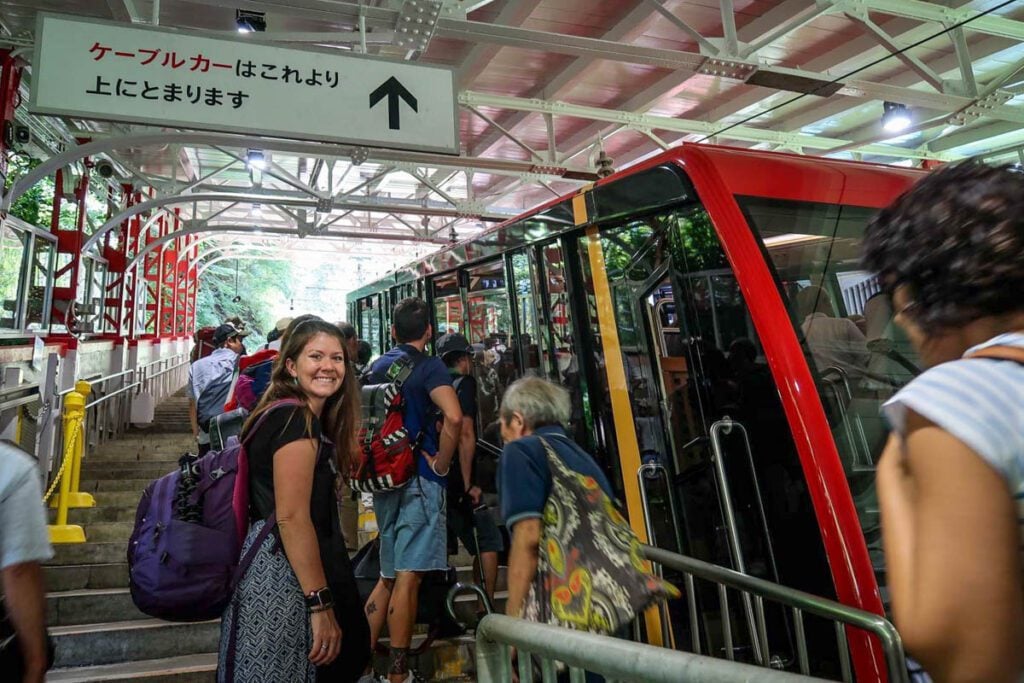
We actually broke this rule, as we had been living in Asia for a year and were in the midst of bringing all our stuff back to the U.S.
But trust me when I say that carrying big backpacks or suitcases through crowded metros, trains and intersections is NOT fun.
We found a luggage transfer service that was able to send the luggage we didn’t need from Osaka to our hotel in Tokyo and store it for us. It was super simple and cheap! I’m sure there are more services out there, but it was a little hard to find when we were searching.
Before you leave, check out these super helpful guides full of packing hacks and tips for traveling in Japan that you won’t find anywhere else:
- Our Japan packing guide lists all the essentials (many of which you might not think about), as well as what you should NOT pack for a trip to Japan.
- This article on what to wear in Japan will help you create a perfect capsule wardrobe for every season and let you in on some cultural taboos so you can be sure to dress appropriately.
- With this FREE Japan packing list PDF download , we’ll send checklists straight to your inbox for everything from clothing and toiletries (for both women and men!) to what shoes to pack and extra stuff you may want to have on-hand just in case. Click the image below to get your free copy!

31. Bring comfortable walking shoes
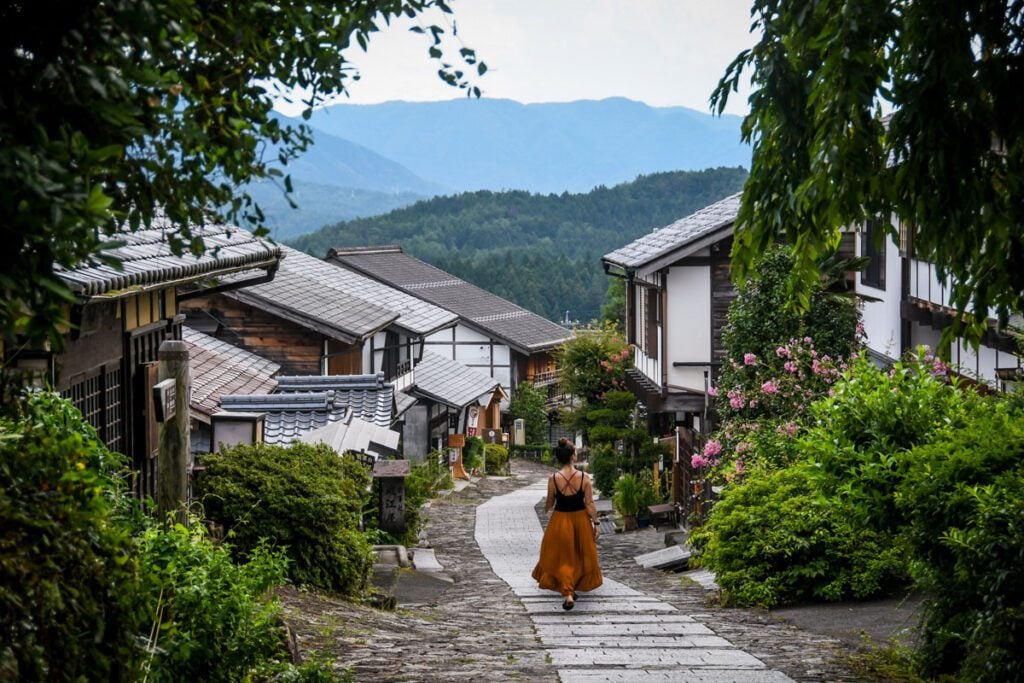
When people say you’ll be walking a lot in Japan, they ain’t lying! We walked an average of 10 miles (16 km) each day, so comfortable shoes are a MUST.
Psst! We have a list of must-see landmarks in Japan that’s sure to give you some inspiration for your itinerary!
32. Know about cover charges at Izakayas
Even though you’re not expected to pay gratuity in izakayas, it’s good to know that many establishments charge what’s called a otōshidai, or a “cover charge”.
Sometimes you’ll be given a small (aka TINY!) dish, otōshi , for which the charge is attributed on your bill. However, it’s really just an extra fee for the seat you are occupying.
Usually it’ll be between 200 – 500 yen. It’s good to expect this so you’re not confused when your final bill comes.
33. Don’t try to split the check
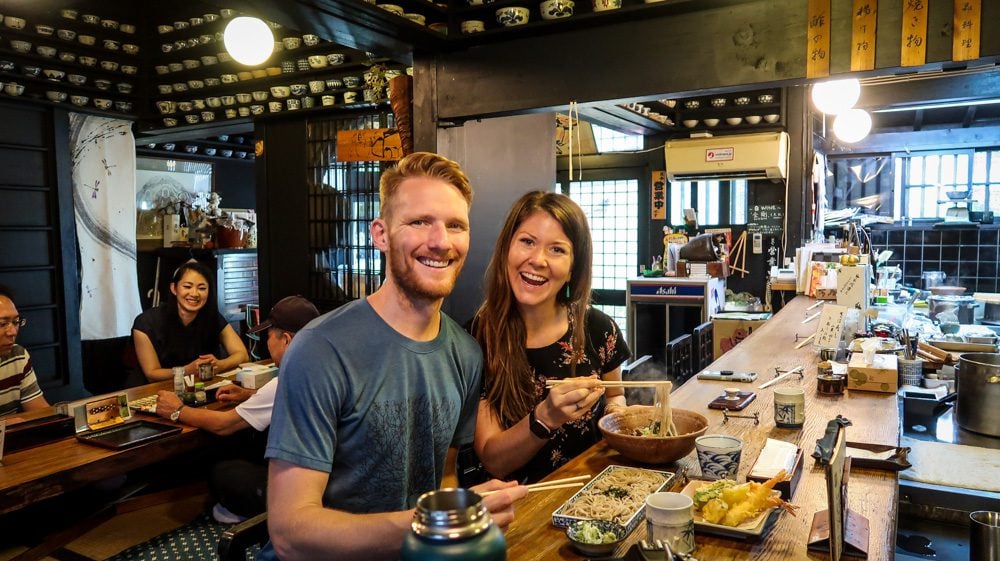
Sometimes when we’re traveling on a budget, we like to split one large meal. Often times, we don’t feel the need to order two full entrees, plus, it cuts our food costs in half.
However, this is usually considered rude in Japan since seating is often limited and you are taking up a spot in the restaurant.
So for instance, it would be frowned upon for two people to go into a ramen shop at a busy hour, and only order one bowl of soup. If one party doesn’t feel like eating, it would be best to wait outside (I know, I know!).
An exception to this would be if you go at an off-hour, say 3 in the afternoon, when a restaurant is less busy. You can ask if it’s okay to split one meal.
We did this once at a restaurant where they served large seafood dishes. The restaurant was pretty much empty in the middle of the afternoon and we just wanted a light meal, not 2 huge entrees. They said it was fine, but I wouldn’t have done this at a busy time of day.
Note: When we say this, we don’t mean you can’t try each other’s meals — we did this ALL the time — and find it the best way to taste as many dishes as possible.
34. Know you can’t see/do everything …
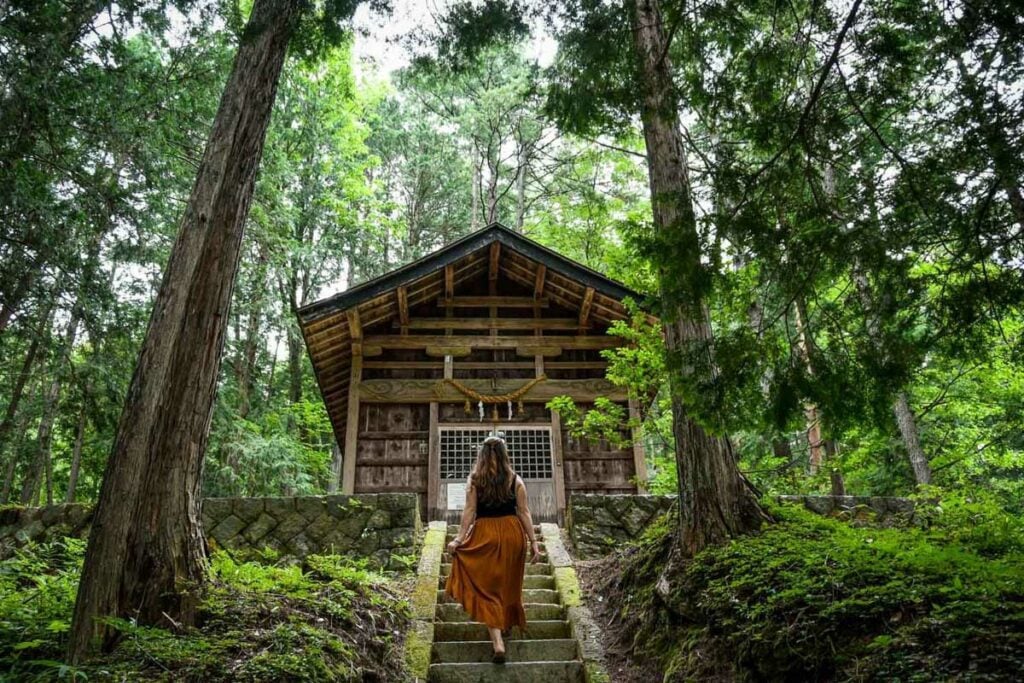
This can be a hard one to come to terms with, especially when you see all sorts of posts and advice. It can honestly get overwhelming (been there!). Just know that you’ll need to narrow down and prioritize the things you really want to do.
If you don’t get to everything — you likely won’t, there are ENDLESS cool things to do in Japan — you can always come back for a second, third, seventh visit down the road.
Need help deciding how long to plan your trip for? Our guide to how many days to spend in Japan will help you figure out how much time you need based on what you want to do.
35. Planning is your friend in Japan
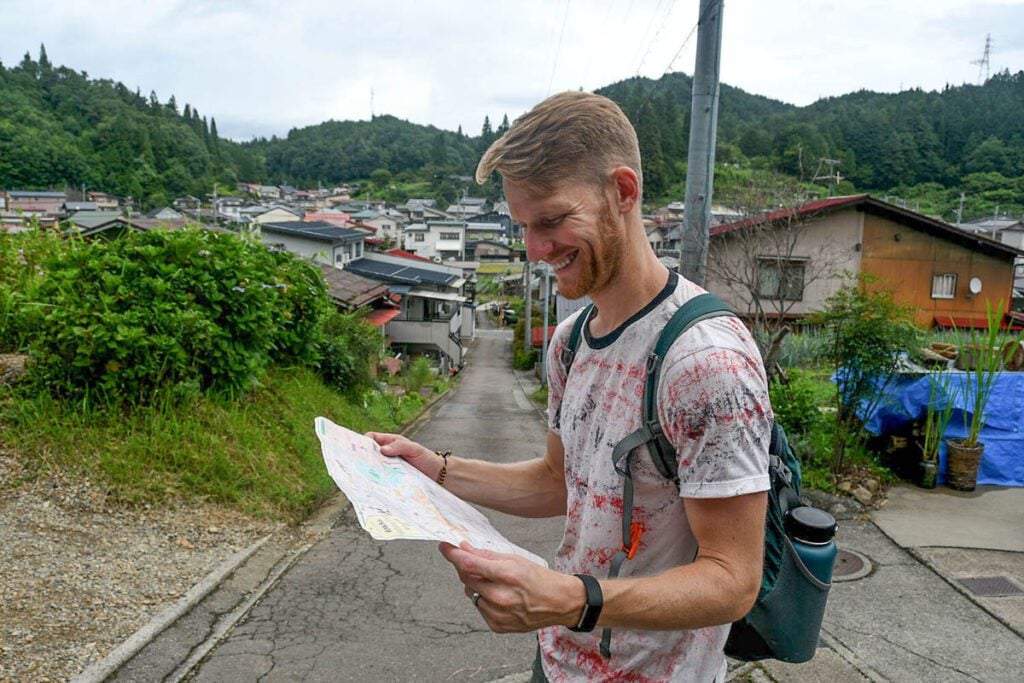
We usually love to travel with a lot of room for flexibility. However, unless you’ve got a lot of time to travel around Japan, planning your route and accommodation in advance is going to help you maximize your time.
Add in some “flexible” time where you can just wander or relax, but our advice would be to come with a pretty solid plan (even if you don’t usually travel this way).
Be sure to check out our ultimate Japan planning guide to help prepare for your trip!
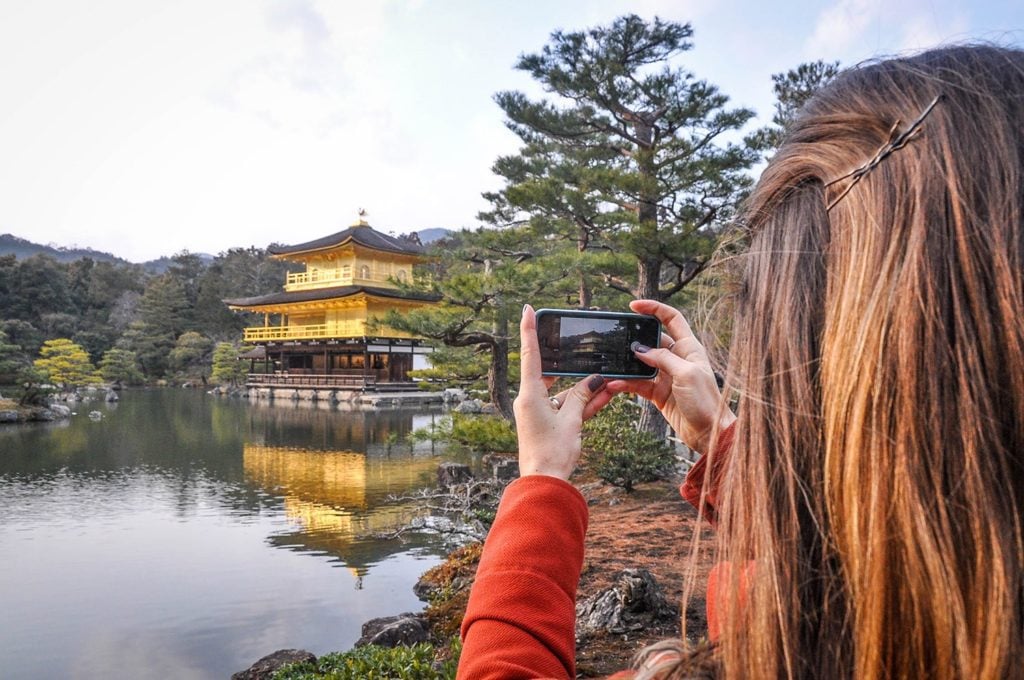
Japan Trip Planner: How to Plan Your First Trip to Japan
This information-packed Japan trip planner has the answers to all your questions. Find out the best places to visit, which Japanese foods to try, and how to ride the bullet trains. All the research is done for you to assist in planning a trip to Japan.
More resources for traveling in Japan
We have TONS of resources on travel in Japan and destinations throughout the country. Check out our Ultimate Japan Travel Guide for all the answers to your most burning questions, or read some of our favorite articles below!
- Best Time to Visit Japan: When to Go & When to Avoid
- Japan Rail Pass: Where to Buy & Is It Worthwhile?
- Renting a Car in Japan: Essential Driving Tips You Need to Know!
- Japan Travel Cost: Exactly How Much is a Trip to Japan?
- Japan on a Budget: Money-Saving Tips + Free Things to Do
- One Week in Japan: Best Itinerary for Your First Visit
- Japan Pocket Wifi vs. Japanese SIM Card: Review & Comparison
- Best Japan Travel Apps
- Foods to Eat in Japan: Guide to Japanese Cuisine
- Helpful Japanese Words & Phrases to Know for Traveling in Japan
Save this article to Pinterest for later!
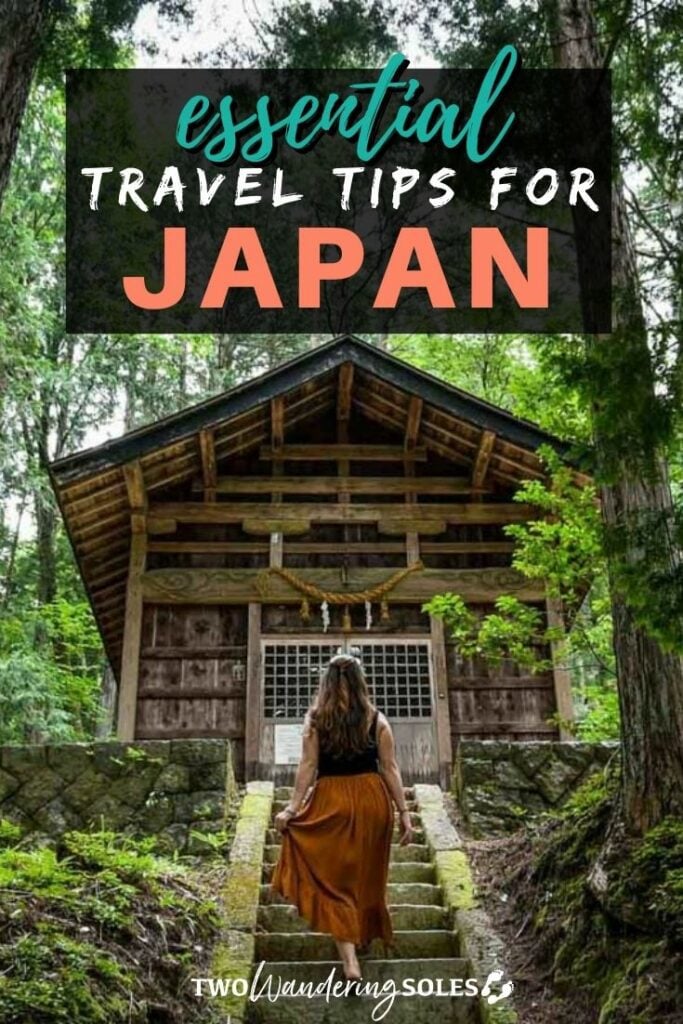
We want to hear from you!
Are any of these tips for visiting Japan surprising to you? Do you have any more Japan travel tips you think we missed? Let us know in the comments below!
Leave a Reply Cancel reply
Your email address will not be published. Required fields are marked *
Save my name, email, and website in this browser for the next time I comment.
15 things to know before going to Japan

Mar 31, 2024 • 7 min read
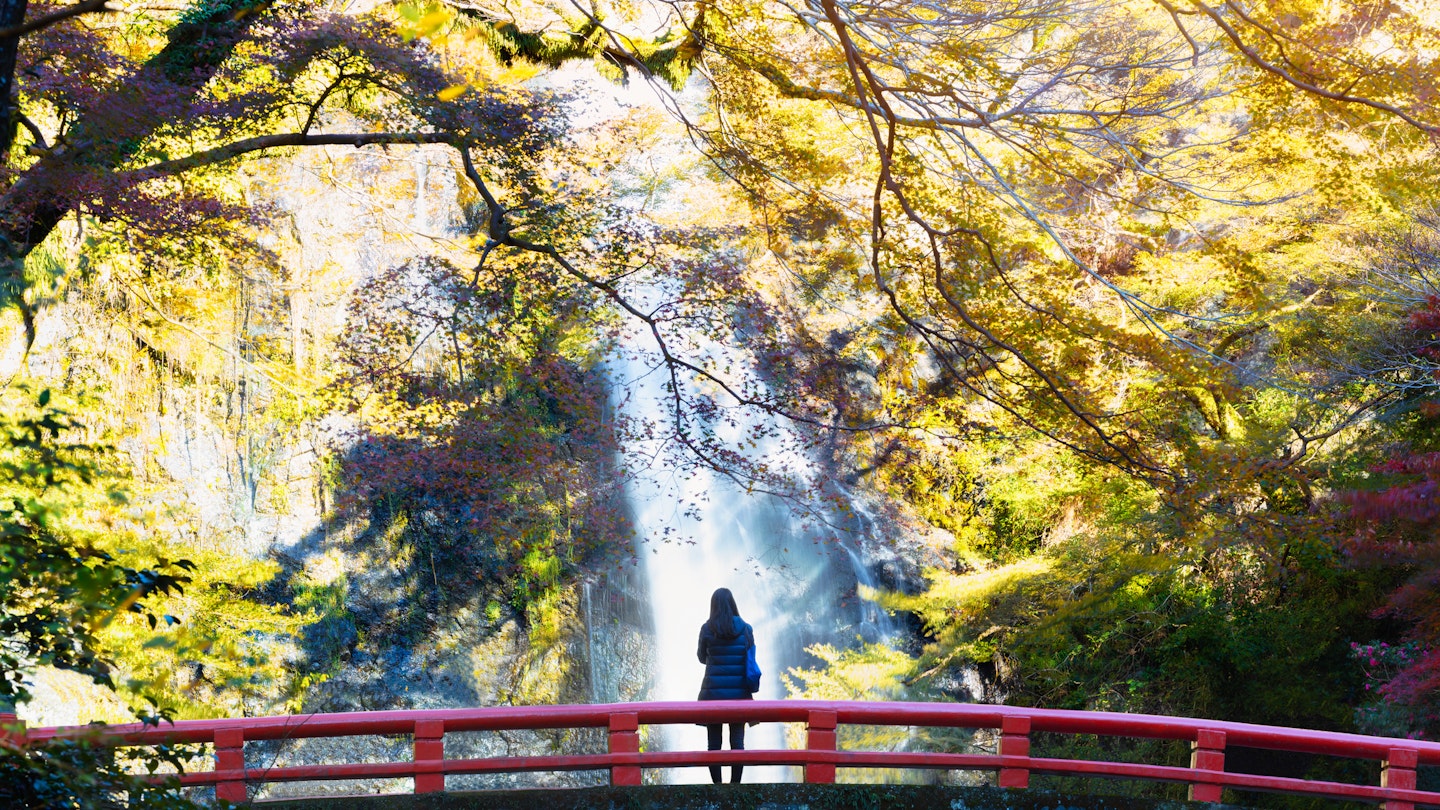
Be ready for a visit to Japan with these tips on health, safety and etiquette © pat138241 / Getty Images
Japan has a reputation as an etiquette-bound place that can be intimidating for first-time visitors.
The truth is, though, that the traditions here are no more formal or constricting than in many other destinations around the world. Moreover, most locals are more than willing to help out or give foreign travelers a pass for any perceived faux pas.
As with just about anything in life, expectation management is key. Put your mind at ease with our top tips for smooth traveling in Japan .
1. Book accommodation in advance (and arrive at the right time)
You can probably get a room at a basic business hotel without a reservation in a pinch, but why risk it? Top accommodations can book up weeks or even months in advance, so it's best to plan ahead.
Particularly busy travel periods include the first week of January, cherry blossom season (late March through April, depending on the destination), “Golden Week” (April 29 to May 5) and August.
You should also keep in mind that smaller inns or ryokan (traditional Japanese inns) often have fixed check-in times outside of which staff won’t be present, and rooms won’t be made up. Coordinate your arrival time in advance.
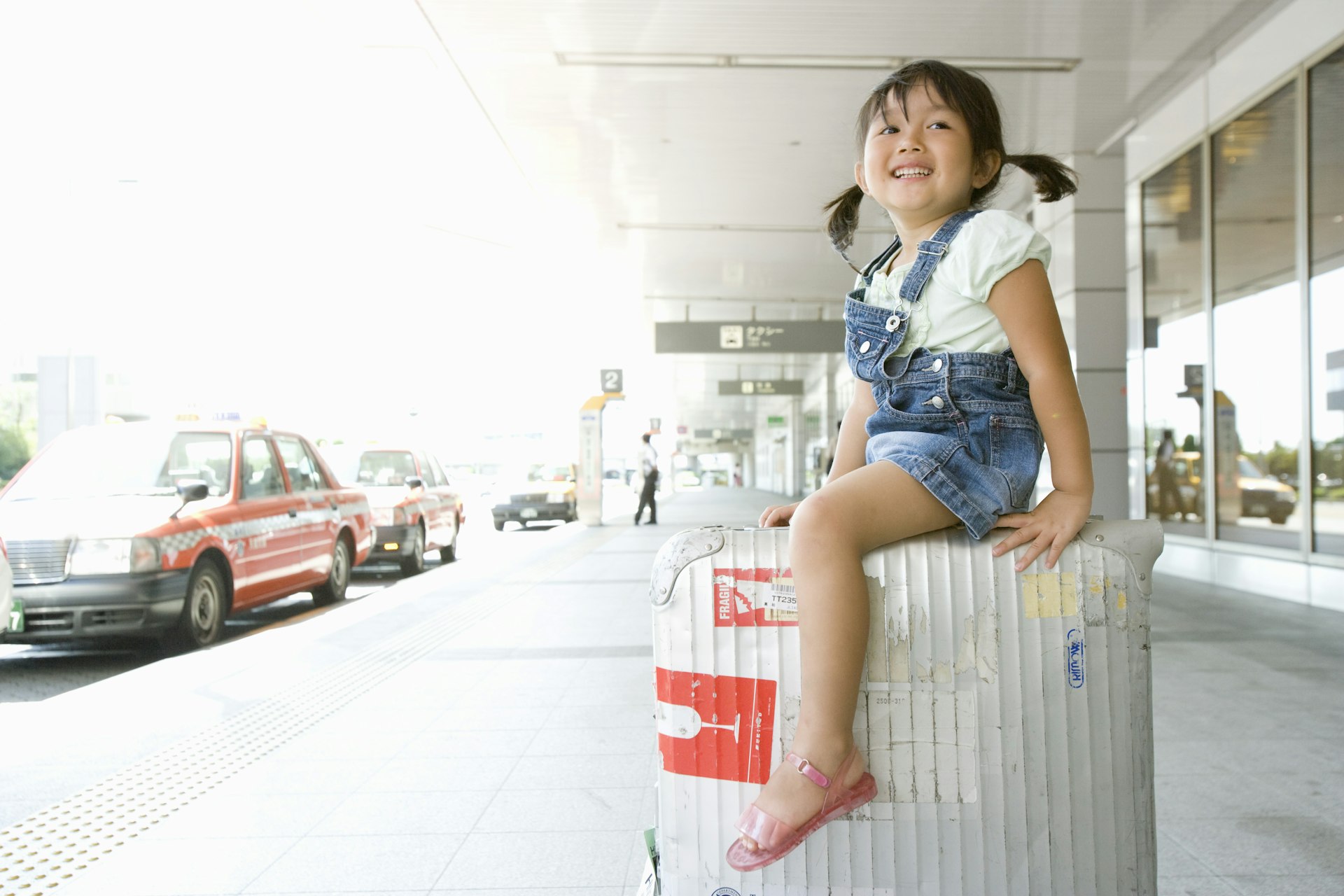
2. Pack light for a visit to Japan
Since hotel rooms in Japan tend to be small, especially in cities, there is little room for large suitcases – which can also be a pain to wrangle on public transport . Packing on the lighter side is always a good idea, but especially advisable for Japan.
Note that religious sites such as Buddhist temples and Shintō shrines don’t have dress codes. High-end restaurants, bars and clubs sometimes do, but that usually just means no sleeveless shirts or sandals on men.
Keep in mind that you might find yourself sitting on the floor when dining out, which can be uncomfortable in short (or tight) clothing.
3. Buy a data-heavy SIM card at the airport
Finding your way around in Japan can be tricky. The address system is notoriously difficult to navigate – even for locals – so smartphones with navigation apps have been a real boon for travelers.
This means you're likely to be using a substantial amount of data getting from place to place, so buy a data-heavy SIM card at the airport upon arrival.
Ready to go to Japan? Here are 24 of the best things to do when you get there

4. Bring shoes you can easily slip on and off
Comfortable walking shoes are a must. You’ll also likely have to take your shoes off frequently at religious sites, traditional inns and some restaurants – you’ll thank yourself later if you pack shoes that are easy to slip on and off.
Since you’ll be slipping into a pair of communal slippers when you take your own shoes off, many visitors prefer to wear socks.
5. Learn how to use a bidet toilet
Called “washlets,” Japan’s high-tech, electronic bidet toilets will wash and dry your delicate parts with the touch of a button. (Don’t worry about any language barrier; the pictograms on the buttons are easy to understand).
Other toilet customs in Japan might throw you for a loop. Motion-sensor-activated sound machines are intended to conceal, um, sensitive noises. Also expect dedicated toilet slippers in shoes-off establishments.
Note that there is frequently a lack of towels and hand dryers (locals carry small cloths with them for this reason).
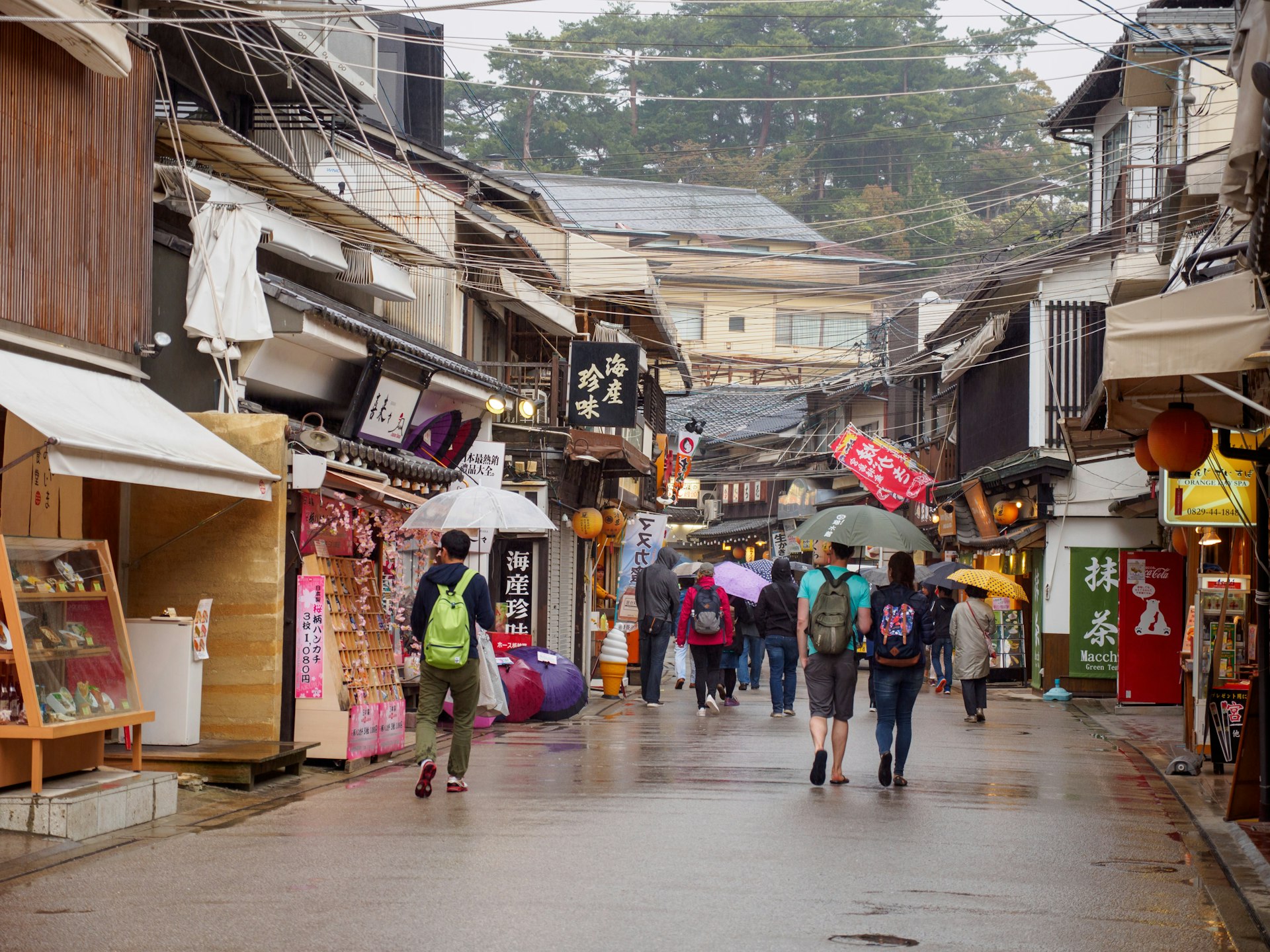
6. Come prepared for the weather
Summers in Japan are hot and humid, which can mean a real risk of heatstroke. Carry water with you, and a folding umbrella with UV blocking is useful – and does double duty in case of a sudden shower.
Late June is the start of the annual rainy season, when it can rain without end for days; this can last a few weeks or through most of July.
Rains, as well as punishing winds, are likely again during typhoon season , which runs from September through October (earlier in Okinawa ).
Typhoons can cause serious travel disruption; monitor the situation with the Japan Meteorological Agency ’s storm and other weather warnings, which are available in English. Winters can get chilly, and Tōhoku and Hokkaidō up north can get huge dumps of snow.
Japan’s ubiquitous convenience stores are handy for weather-related necessities like umbrellas, hats, cooling wipes and pocket warmers.
7. Make sure to carry cash...
In rural Japan and at older family-run businesses in cities, credit cards may not be accepted. It’s wise to assume you’ll need to pay cash at country ryokan and smaller restaurants and shops; stock up when you’re in a town with an ATM (cashpoint).
To pay as the Japanese do, place your cash or card in the small tray at the register rather than handing either to the cashier.
8. ...But don’t worry about tipping
Though tour guides who regularly take foreign tourists around might expect extra, Japan has no custom of tipping, and an attempt to add to your bill will more often than not fluster or embarrass staff.
In lieu of tipping, some bars and restaurants will charge a flat-rate service fee, usually around ¥300–500 per person; others, typically fancy ones, will automatically add a 10% service charge to the bill.
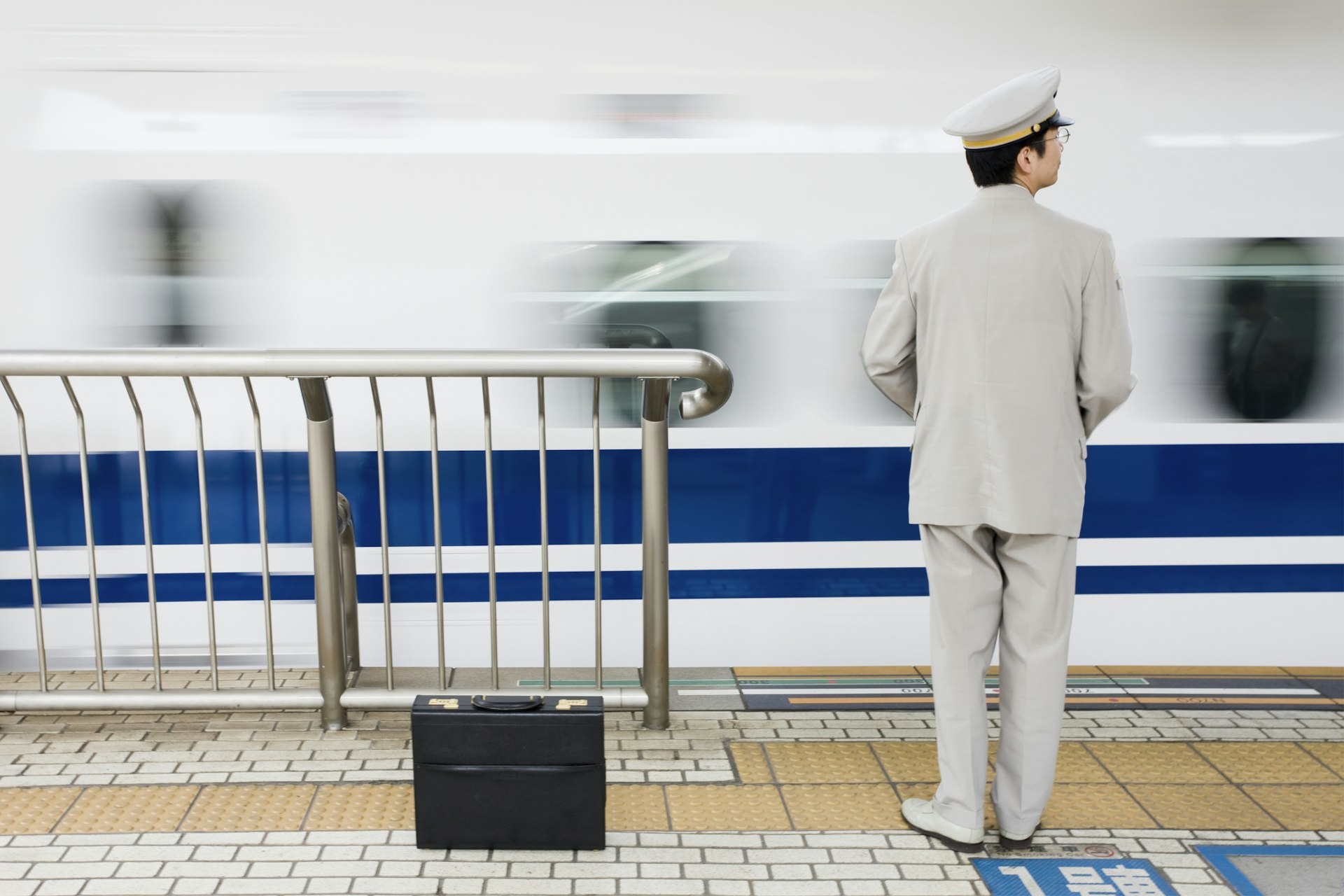
9. Learn the art of queueing in Japan
The Japanese are big on queues, forming neat lines everywhere from check-out counters to train platforms. (Regarding the latter: after the train doors open, it’s everyone for themselves when it comes to scoring a seat.)
10. Stand to the left (or to the right)
Always ride on one side of the escalator – but which side depends on where you are. In Kanto and eastwards, it’s to the left; in Kansai and westwards, it’s to the right. (The dividing point is somewhere just west of Nagoya ).
Incidentally, train operators want passengers to stand on both sides of the escalator and refrain from walking altogether, even if commuters have so far shrugged at these guidelines.
11. Note when the last train leaves
City subways run until 1am at the very latest. If you miss the last train for the night, the alternative is to catch a taxi, which can be expensive.

12. Avoid the morning commute in Tokyo
For Tokyoites , the morning commute is a contact sport. On weekdays from 7:30am to 9am, millions squeeze into trains across the city, sometimes helped along by station staff who make sure everyone’s packed in.
Shinjuku Station, the busiest in the world, sees an average of over 3.5 million commuters daily; there are more than 200 exits leading in and out of the complex.
13. Eating in public is generally a no-no in Japan
It’s considered bad form to eat in public, especially while walking. Exceptions include the shinkansen (bullet train) and other reserved-seat limited-express trains, where it is customary to eat a bentō (boxed meal) on board; plus at festivals or market streets with food vendors; on a picnic; and of course if you're eating ice cream.
It’s also okay to take sips from a resealable beverage container, like a water bottle.
14. Know what to do in an earthquake or tsunami
Japan is one of the most seismically active places on the planet. While strong earthquakes are rare, minor temblors happen all the time. If this occurs during your time here, stay calm and take your cue from those around you.
Head under a table or stand in a doorway if the shaking picks up; strict building codes generally keep harm to a minimum.
Rarer but more dangerous tsunami can follow a significant quake. Should this occur, listen for tsunami warnings and get to higher ground fast if you are near the coast.
15. Learn some Japanese lingo
English is widely spoken in cities and around major tourist attractions; in rural areas, though, it can be hit or miss. Some Japanese words that will come in handy when dining out:
• omori (large portion, often free at ramen stalls) • okawari (refill) • mochikaeri (takeaway) • tennai de (eat-in) • onegai shimasu (please). Follow up any of your orders or requests with this; for example, if you want tea, say, “O-cha onegai shimasu.” • sumimasen (excuse me) • arigato gozaimasu (thank you). Because it’s a bit of a mouthful, it’s tempting to shorten it to simply arigato . Think of it as the difference between “thank you” and “thanks” and go for the politer “arigato gozaimasu.” • toire (toilet; pronounced “to-ee-rey”)
This article was first published Apr 6, 2022 and updated Mar 31, 2024.
Explore related stories
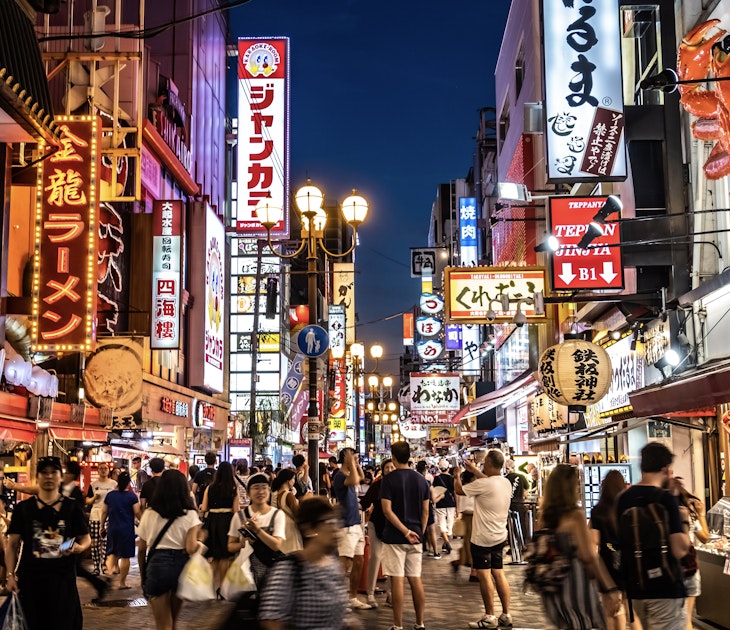
Art and Culture
May 1, 2024 • 9 min read
This four-day Osaka and Kyoto itinerary is a perfect add-on to any trip to Japan.

Apr 14, 2024 • 6 min read

Apr 3, 2024 • 17 min read

Mar 28, 2024 • 7 min read

Mar 28, 2024 • 6 min read

Mar 26, 2024 • 8 min read

Mar 25, 2024 • 6 min read
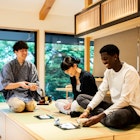
Mar 23, 2024 • 7 min read
Update April 12, 2024
Information for u.s. citizens in the middle east.
- Travel Advisories |
- Contact Us |
- MyTravelGov |
Find U.S. Embassies & Consulates
Travel.state.gov, congressional liaison, special issuance agency, u.s. passports, international travel, intercountry adoption, international parental child abduction, records and authentications, popular links, travel advisories, mytravelgov, stay connected, legal resources, legal information, info for u.s. law enforcement, replace or certify documents.
Before You Go
Learn About Your Destination
While Abroad
Emergencies
Share this page:
Travel Advisory January 8, 2024
Japan - level 1: exercise normal precautions.
Japan – Level 1: Exercise Normal Precautions
Reissued after periodic review without changes.
Exercise normal precautions in Japan.
Read the country information page for additional information on travel to Japan.
If you decide to travel to Japan:
- Enroll in the Smart Traveler Enrollment Program (STEP) to receive Alerts and make it easier to locate you in an emergency.
- Follow the Department of State on Facebook and Twitter .
- Follow Embassy Tokyo’s American Citizen Services section on Facebook and Twitter .
- Review the Country Security Report for Japan.
- Visit the CDC page for the latest Travel Health Information related to your travel.
- Prepare a contingency plan for emergency situations. Review the Traveler’s Checklist .
Embassy Messages
View Alerts and Messages Archive
Quick Facts
Duration of intended period of stay. Please note you cannot travel on a passport you have previously declared as lost or stolen even if you subsequently locate it
One page required for entry stamp
Amounts equivalent to ¥1,000,000 or above subject to declaration
Embassies and Consulates
U.S. Embassy Tokyo 1-10-5 Akasaka, Minato-ku, Tokyo 107-8420 Japan Telephone: 81-3-3224-5000 Emergency After-Hours Telephone: 81-3-3224-5000 Fax: 81-3-3224-5856 Our Navigator Assistant will guide you to the information you need.
U.S. Consulate General Osaka-Kobe 2-11-5, Nishitenma, Kita-ku, Osaka 530-8543, Japan Telephone: 81-6-6315-5900 Emergency After-Hours Telephone: 81-3-3224-5000 Fax: 81-6-6315-5914 Our Navigator Assistant will guide you to the information you need.
U.S. Consulate General Naha 2-1-1 Toyama, Urasoe City, Okinawa, Japan Telephone: 81-98-876-4211 Emergency Telephone: 81-3-3224-5000 Fax: 81-98-876-4243 Our Navigator Assistant will guide you to the information you need.
U.S. Consulate General Sapporo Kita 1-jo Nishi 28-chome, Chuo-ku, Sapporo 064-0821, Japan Telephone: 81-11-641-1115 Emergency After-Hours Telephone: 81-11-641-1115 Fax: 81-11-643-1283 Our Navigator Assistant will guide you to the information you need. All assistance at the Consulate General Sapporo is by appointment only.
U.S. Consulate Fukuoka 5-26 Ohori 2-chome, Chuo-ku, Fukuoka 810-0052, Japan Telephone: 81-92-751-9331 Emergency After-Hours Telephone: 81-3-3224-5000 Fax: 81-92-713-9222 [email protected] Our Navigator Assistant will guide you to the information you need. Routine services are provided by appointment only.
U.S. Consulate Nagoya Nagoya International Center Bldg. 6th floor, 1-47-1 Nagono, Nakamura-ku, Nagoya 450-0001, Japan Telephone: 81-52-581-4501 Emergency After-Hours Telephone: 81-3-3224-5000 Fax: 81-52-581-3190 Our Navigator Assistant will guide you to the information you need. Emergency services are provided by U.S. Consulate General Osaka-Kobe.
Destination Description
See the Department of State’s Fact Sheet on Japan for information on U.S-Japan relations.
Entry, Exit and Visa Requirements
Visit the Embassy of Japan website for the most current visa information.
There are no COVID-related entry requirements for U.S. citizens.
Entry & Exit:
- You must have a valid passport and an onward/return ticket for tourist/business "visa free" stays of up to 90 days. Your passport must be valid for the entire time you are staying in Japan.
- You cannot work on a 90-day "visa free" entry.
- "Visa free" entry status may not be changed to another visa status without departing and then re-entering Japan with the appropriate visa, such as a spouse, work, or study visa.
- Visit the Embassy of Japan website for the most current information on all visa categories.
- Japanese immigration officers may deny you entry if you appear to have no visible means of support.
- All foreign nationals are required to provide fingerprint scans and to be photographed at the port of entry. Exceptions to this requirement include diplomatic and official visa holders, minors, and individuals covered under SOFA Article IX.2. For further information about landing procedures, please visit the Immigration Bureau of Japan’s website .
- Make sure your passport is valid. Note you cannot travel on a passport you have previously declared as lost or stolen even if you subsequently locate it. Japanese authorities will likely deny you entry into Japan if you attempt to do so. If you have reported your passport lost or stolen, you must apply for a new passport before travel.
Transiting Japan:
- Ensure that your passport and visa are valid and up-to-date before you leave the United States. Passport services are not available at the airport.
- Airlines in Japan may deny you boarding for transit if you do not have the required travel documents for an onward destination in another country or if your passport does not have six months of validity remaining. For the entry requirements of the country you are traveling to, visit the State Department's Country Specific Information website.
Military/SOFA Travelers: While active-duty U.S. military personnel may enter Japan under the Status of Forces Agreement (SOFA) with proper Department of Defense (DoD) identification and travel orders, all SOFA family members, civilian employees, and contractors must have valid passports to enter Japan. Please consult the DOD Foreign Clearance Guide before leaving the United States.
See the Immigration Bureau of Japan’s website for various immigration procedures.
HIV/AIDS Restrictions: The U.S. Department of State is unaware of any HIV/AIDS entry restrictions for visitors to or foreign residents of Japan.
Find information on dual nationality , prevention of international child abduction and customs regulations on our websites.
Safety and Security
For police services in Japan, dial 110. For fire or ambulance services, dial 119.
Crime: Crime against U.S. citizens in Japan is generally low and usually involves personal disputes, theft, or vandalism. In addition:
- Robberies committed after a victim has been drugged from a spiked drink can occur, especially in nightlife districts.
- Sexual assaults are not often reported, but they do occur, and victims may be randomly targeted. Victim's assistance resources or shelters are difficult for foreigners to access.
- Hate-related violent crimes rarely occur, although some U.S. citizens have reported being the target of discrimination because of their nationality or their race.
- Pick pocketing can occur in crowded shopping areas, on trains, and at airports.
- Police reports must be filed before leaving Japan, as Japanese police will not accept reports filed from overseas.
- In instances involving credit card theft or fraud, Japanese police often provide a report number rather than a police report. You can provide this report number to your credit card company to confirm the incident with the police.
Entertainment and Nightlife Districts in Tokyo:
- Exercise caution in all entertainment and nightlife districts throughout Japan, especially Roppongi, Kabuki-cho, Shibuya, and Ikebukuro.
- Incidents involving U.S. citizens in these areas include physical and sexual assaults, drug overdoses, theft of purses, wallets, cash and credit cards at bars or clubs, and drugs slipped into drinks.
- Drink spiking at bars and entertainment venues, especially in areas such as Roppongi and Kabuki-cho, near Shinjuku, has led to robbery, physical and sexual assaults, and credit card fraud. Some victims regain consciousness in the bar or club; other victims may awaken on the street or other unfamiliar locations.
- U.S. citizens have reported being threatened with gun or knife violence in such venues so that they will pay exorbitant bar tabs or withdraw money. U.S. citizens have also reported being beaten when they have refused to pay or hand over money.
- There have been reports of U.S. citizens being forcibly taken to ATMs and robbed, or made to withdraw funds after being unable to pay exorbitant bar tabs.
- Please be aware that Roppongi, Kabuki-cho, and other entertainment and nightlife districts have also been the scenes of violence between criminal syndicates.
See the Department of State and the FBI pages for information on scams.
Police reports must be filed at the nearest police station prior to departure from Japan. The Japanese police cannot accept reports filed from overseas. Report crimes to the local police at 110 and contact the U.S. Embassy at 03-3224-5000 (011-81-3-3224-5000 from overseas). Remember that local authorities are responsible for investigating and prosecuting the crime.
See our webpage on help for U.S. victims of crime overseas .
- help you find appropriate medical care;
- assist you in reporting a crime to the police;
- contact relatives or friends with your written consent;
- explain the local criminal justice process in general terms;
- provide a list of local attorneys;
- provide information on victim’s compensation programs in the U.S. ;
- provide an emergency loan for repatriation to the United States and/or limited medical support in cases of destitution
- help you find accommodation and arrange flights home; and/or
- replace a stolen or lost passport.
Contacting Police, Fire and Ambulance Services: You can reach the police throughout Japan by dialing 110. Fire and ambulance services can be contacted by dialing 119. Note that English-speaking dispatchers may not be available. Please review advice on “Calling for Help” on our website . If you need assistance, you should be able to describe your address/location in Japanese or find someone who can do so, since few police officers speak English.
Domestic Violence: Victim's assistance resources or battered women's shelters exist in major urban areas, but are difficult for foreigners to access. These types of resources are also generally unavailable in rural areas. Investigations of sexual assault crimes are often conducted without female police officers present, and police typically ask about the victim's sexual history and previous relationships.
Tourism: The Victim's assistance resources or battered women's shelters exist in major urban areas, but are difficult for foreigners to access. These types of resources are also generally unavailable in rural areas. Investigations of sexual assault crimes are often conducted without female police officers present, and police typically ask about the victim's sexual history and previous relationships.
See our webpage for more information on insurance providers for overseas coverage.
Local Laws & Special Circumstances
Criminal Penalties: You are subject to Japanese law while you are in Japan. If you violate Japanese laws, even unknowingly, you may be arrested, imprisoned, or deported. If you are arrested in Japan, even for a minor offense , you may be held in detention without bail for several months or more during the investigation and legal proceedings.
Some offences are also prosecutable in the United States, regardless of Japanese law. For examples, see our website on crimes against minors abroad and the Department of Justice website.
The vast majority of arrests of U.S. citizens in Japan are for drug-related offenses. Japanese authorities aggressively pursue drug smugglers and users, including recreational users with sophisticated detection equipment, "sniffing" dogs, blood tests, “stop and frisk” tactics, and other methods. Penalties for possessing, using, or trafficking a drug that is illegal in Japan are severe, and convicted offenders can expect long jail sentences and fines. Please note that some drugs which may be legal in certain jurisdictions outside of Japan, including marijuana and synthetic drugs, remain illegal in Japan. This also applies to certain prescription drugs that doctors in the United States may prescribe. Japanese law makes no distinction between medical and recreational marijuana; therefore, having a prescription for medical marijuana will not help you avoid arrest or prosecution. Even possession of a small amount of marijuana for personal medical or recreational use can result in a long jail sentence and fine. Japanese customs officials carefully screen incoming packages, and individuals who are mailed drugs can be arrested and prosecuted as drug traffickers.
Confiscation of Prescription Drugs and Other Medication: It is important to note that some medications that are routinely prescribed in the United States, including Adderall and marijuana, are strictly prohibited in Japan. The Japanese government decides which medications may be imported legally into Japan. The Embassy and Consulates of Japan in the United States have limited information available and do not have a comprehensive list of specific medications or ingredients. Please see more information on importing medicines into Japan.
You must carry your U.S. passport or Japanese Residence Card (Zairyu Kado) with you at all times. In Japan, you may be taken in for questioning if you do not have your passport or Japanese residence card to show your identity and status in Japan (e.g., as a visitor, student, worker, or permanent resident).
It is illegal to work in Japan while in tourist or visa-waiver status. Overstaying your visa or working illegally may lead to fines of several thousands of dollars, and in some cases, re-entry bans as long as 10 years, or indefinitely for drug offenders. For additional information, please see Japan’s Immigration Control and Refugee Recognition Act and contact the Japanese Embassy or nearest Japanese Consulate in the United States for more information.
Driving under the influence of alcohol could also land you immediately in jail. The blood-alcohol limit in Japan is 0.03%. Punishments can be up to 10,000 USD in fines and up to five years in prison.
Possession of a gun or ammunition is a crime in Japan. Carrying a knife with a locking blade, or a folding blade that is longer than 5.5 cm (a little more than two inches), is illegal in Japan. U.S. citizens and U.S. military personnel have been arrested and detained for more than 10 days for carrying pocket knives that are legal in the United States but illegal in Japan. The possession of lock-picking tools is illegal in Japan.
Establishing a Business : Individuals establishing a business or practicing a profession that requires additional permits or licensing should seek information from the competent local authorities, prior to practicing or operating a business.
A list of English-speaking lawyers located throughout Japan is available on our website .
Arrest Notification : If you are arrested or detained, ask police or prison officials to notify the U.S. Embassy immediately. See the Department of State’s webpage and the Embassy’s website for additional information.
Counterfeit and Pirated Goods: Although counterfeit and pirated goods are prevalent in many countries, they may still be illegal according to local laws. You may also pay fines or have to give them up if you bring them back to the United States. See the U.S. Department of Justice’s website for more information .
Faith-Based Travelers: See our following webpages for details:
- Faith-Based Travel Information
- International Religious Freedom Report – see country reports
- Human Rights Report – see country reports
- Hajj Fact Sheet for Travelers
- Best Practices for Volunteering Abroad
LGBTQI+ Travelers: There are no legal restrictions on same-sex sexual relations or the organization of LGBTI+ events in Japan.
Laws governing rape, sexual commerce, and other activity involving sexual relations do not apply to same-sex sexual activity. This leads to lower penalties for perpetrators of same-sex rape and sexual assault and greater legal ambiguity surrounding same-sex prostitution.
See our LGBTQI+ Travel Information page and section 6 of our Human Rights report for further details.
Travelers with Disabilities: The law in Japan prohibits discrimination against persons with disabilities. Japanese disability laws require the public sector to provide reasonable accommodations and the private sector to make best efforts in employment, education, access to health care, or the provision of other services; however, there are no penalties for noncompliance. Social acceptance of persons with disabilities in public is not as prevalent as in the United States.
Although Japan’s accessibility laws mandate that new construction projects for public use include provisions for persons with disabilities, older buildings are not likely to have been retrofitted for accessibility. At major train stations, airports, and hotels, travelers with disabilities should encounter few accessibility problems. Note that many smaller stations are inaccessible to those who cannot climb stairs. Information on travel in Japan for travelers with disabilities is available at Accessible Japan .
Travelers with disabilities can learn more about resources available in country from the Japan National Tourism Organization’s traveling with a disability page .
Students: See our Students Abroad page and FBI travel tips .
Women Travelers: See our travel tips for Women Travelers .
Conditions at Prisons and Detention Facilities: Japanese prisons and detention facilities maintain internal order through a regime of very strict discipline. U.S. citizen prisoners often complain of stark, austere living conditions and psychological isolation. Heating in winter can be inadequate in some facilities, food portions can be significantly smaller than what many may be accustomed to, and access to specialized medical care, particularly mental health care, at detention facilities and prisons is sometimes limited. Additional information on arrests in Japan is available on our embassy website.
Customs Regulations: Please contact the Japanese Embassy or nearest Japanese consulate in the United States, or visit the Japanese Customs website for specific information regarding import restrictions and customs requirements.
Japanese customs authorities encourage the use of an Admission Temporaire/Temporary Admission (ATA) Carnet in order to temporarily import professional equipment, commercial samples, and/or goods for exhibitions and trade fairs into Japan. For additional information, please call (212) 354-4480, or email the U.S. CIB for details.
Pets: The Japanese Animal Quarantine Service (AQS) sets procedures for importing pets. At a minimum, the process will take seven to eight months, though the process can take up to a year before a pet may enter Japan. Advance planning is critical. You can find more information about importing a pet into Japan or information about exporting a pet from Japan on our Embassy website.
Employment Issues: U.S. citizens should not come to Japan to work without having the proper employment visa arranged ahead of time. Teaching English, even privately, and serving as hosts/hostesses are both considered "work" in Japan and are illegal without the proper visa.
Some U.S.-based employment agencies and Japanese employers do not fully or correctly represent the true nature of employment terms and conditions. A minimum requirement for effectively seeking the protection of Japanese labor law is a written and signed work contract. If there is no signed contract, Japanese authorities are not able to act on behalf of foreign workers. If you are coming to Japan to work, carefully review your contract and the history and reputation of your Japanese employer before traveling to Japan. Complaints against U.S.-based employment agencies or recruiters may be directed to the Better Business Bureau or the Office of the Attorney General in the relevant state(s).
Disaster Preparedness : Japan is prone to natural disasters, including earthquakes, typhoons, tsunamis, and landslides. See the Embassy’s webpage for recommendations and steps you can take to prepare for an emergency. The Japan Tourism Organization’s Safety Tips app and NHK World app provide Japanese government emergency “J-Alerts” to your cell phone in English through push notifications. “J-Alerts” can provide early warning emergency alerts on earthquakes predicted in a specific area, sometimes seconds before an earthquake hits.
Radiation: Fukushima Daiichi Nuclear Power Plant : The Government of Japan continues to closely monitor the conditions at and around the Fukushima Daiichi Nuclear Power Plant. You should comply with all travel restrictions and cautions put into place by the Government of Japan for areas surrounding the plant. For more information, contact the Japan Nuclear Regulation Authority .
For police service in Japan, dial 110. For fire or ambulance, dial 119.
Ambulance services are widely available but receiving hospitals may decline to accept inbound patients unless they can provide proof of funds to pay for services.
COVID-19 Testing:
- Travelers should contact Japanese local health providers to determine the location of testing facilities within Japan. A non-comprehensive list of some COVID-19 testing facilities can be found here on the Embassy website.
COVID-19 Vaccines:
- The COVID-19 vaccine is available for U.S. citizens to receive in Japan.
- Review the Government of Japan’s English language website on COVID-19 vaccinations in Japan.
- Visit the FDA's website to learn more about FDA-approved vaccines in the United States.
The Department of State does not pay medical bills. Be aware that U.S. Medicare/Medicaid does not apply overseas. Most hospitals and doctors overseas do not accept U.S. health insurance.
Medical Insurance: Make sure your health insurance plan provides coverage overseas. Some care providers in Japan only accept cash payments. See our webpage for more information on insurance providers for overseas coverage. Visit the U.S. Centers for Disease Control and Prevention for more information on type of insurance you should consider before you travel overseas.
We strongly recommend supplemental insurance to cover medical evacuation.
If traveling with prescription medication, check with the government of Japan’s Ministry of Health website to ensure the medication is legal in Japan; possession, use, or importation of a prescription drug that is illegal in Japan may result in arrest and criminal prosecution. Always carry your prescription medication in original packaging with your doctor’s prescription. U.S. prescriptions are not honored in Japan, so if you need ongoing prescription medicine, you should arrive with a sufficient supply for your stay in Japan or enough until you are able to see a local care provider.
Vaccinations: Be up-to-date on all vaccinations recommended by the U.S. Centers for Disease Control and Prevention.
Further health information:
- World Health Organization
- U.S. Centers for Disease Control and Prevention (CDC)
Japan has a national health insurance system which is available only to those foreigners with long-term visas for Japan. National health insurance does not pay for medical evacuation. Medical caregivers in Japan may require payment in full at the time of treatment or concrete proof of ability to pay before they will treat a foreigner who is not a member of the national health insurance plan.
U.S.-style and standard psychological and psychiatric care can be difficult to locate outside of major urban centers in Japan and generally is not available outside of Japan's major cities. Extended psychiatric care can be very difficult to obtain.
Air Quality: Visit AirNow Department of State for information on air quality at U.S. Embassies and Consulates.
Travel and Transportation
Road Conditions and Safety : Driving in Japan can be complicated and expensive. Traffic moves on the left side of the road. Those who cannot read the language will have trouble understanding road signs. Highway tolls can be very high, and city traffic is often very congested. A 20-mile trip in the Tokyo area may take two hours. There is virtually no legal roadside or curbside parking; however, traffic is commonly blocked or partially blocked by those illegally parked curbside. In mountainous areas, roads are often closed during the winter, and cars should be equipped with tire chains. Roads in Japan are much narrower than those in the United States.
Traffic Laws : Japanese law provides that all drivers in Japan are held liable in the event of an accident, and assesses fault in an accident on all parties. Japanese compulsory insurance (JCI) is mandatory for all automobile owners and drivers in Japan. Most short-term visitors choose not to drive in Japan. Turning right or left on red lights is not permitted in Japan, and all passengers are required to fasten their seat belts.
Japan has a national 0.03 percent blood-alcohol-level standard for driving, and drivers stopped for driving under the influence of intoxicants will have their licenses confiscated. If you are found guilty of driving under the influence, speeding, or blatantly careless driving resulting in injury, you are subject to up to 15 years in prison.
See our Road Safety page for more information. The National Police Agency (NPA) oversees the administration and enforcement of traffic laws in Japan. You can find further information in English on the NPA English website . Information about roadside assistance, rules of the road, and obtaining a Japanese driver's license is available in English from the Japan Automobile Federation (JAF) web site . See the Japan National Tourism Organization’s website for car rental and driving in Japan.
Emergency Assistance : For roadside assistance, please contact the Japan Automobile Federation (JAF) at 03-5730-0111 in Tokyo, 072-645-0111 in Osaka, 011-857-8139 in Sapporo, 092-841-5000 in Fukuoka, or 098-877-9163 in Okinawa.
International Driving Permits (IDPs): An international driving permit (IDP) issued in the United States by the American Automobile Association (AAA) or the American Automobile Touring Alliance (AATA) is required of short-term visitors who drive in Japan. You must obtain an IDP issued in your country of residence prior to arriving in Japan. The U.S. Embassy andU.S. consulates do not issue IDPs. IDPs issued via the Internet and/or by other organizations are not valid in Japan.
Foreign residents in Japan who use an IDP may be fined or arrested. In practice, the term “resident” involves more than simply visa status or length of stay in Japan and is determined by the police. In short, a driver license from country outside Japan is not a substitute for a valid Japanese license for foreign residents. See the U.S. Embassy’s website for more information on driving in Japan.
Aviation Safety Oversight : The U.S. Federal Aviation Administration (FAA) has assessed the government of Japan’s Civil Aviation Authority as being in compliance with International Civil Aviation Organization (ICAO) aviation safety standards for oversight of Japan’s air carrier operations. Further information may be found on the FAA's safety assessment page .
Maritime Travel : Mariners planning travel to Japan should also check for U.S. maritime advisories and alerts in the Alerts section of the Embassy’s messages. Information may also be posted to the U.S. Coast Guard homeport website , and the National Geospatial-Intelligence Agency (NGA) broadcast warnings website portal select “broadcast warnings.”
For additional travel information
- Enroll in the Smart Traveler Enrollment Program (STEP) to receive security messages and make it easier to locate you in an emergency.
- Call us in Washington, D.C. at 1-888-407-4747 (toll-free in the United States and Canada) or 1-202-501-4444 (from all other countries) from 8:00 a.m. to 8:00 p.m., Eastern Standard Time, Monday through Friday (except U.S. federal holidays).
- See the State Department’s travel website for the Worldwide Caution and Travel Advisories .
- Follow us on Twitter and Facebook .
- See traveling safely abroad for useful travel tips.
Review information about International Parental Child Abduction in Japan . For additional IPCA-related information, please see the International Child Abduction Prevention and Return Act ( ICAPRA ) report.
Travel Advisory Levels
Assistance for u.s. citizens, learn about your destination, enroll in step.

Subscribe to get up-to-date safety and security information and help us reach you in an emergency abroad.
Recommended Web Browsers: Microsoft Edge or Google Chrome.
Make two copies of all of your travel documents in case of emergency, and leave one with a trusted friend or relative.
Afghanistan
Antigua and Barbuda
Bonaire, Sint Eustatius, and Saba
Bosnia and Herzegovina
British Virgin Islands
Burkina Faso
Burma (Myanmar)
Cayman Islands
Central African Republic
Cote d Ivoire
Curaçao
Czech Republic
Democratic Republic of the Congo
Dominican Republic
El Salvador
Equatorial Guinea
Eswatini (Swaziland)
Falkland Islands
France (includes Monaco)
French Guiana
French Polynesia
French West Indies
Guadeloupe, Martinique, Saint Martin, and Saint Barthélemy (French West Indies)
Guinea-Bissau
Isle of Man
Israel, The West Bank and Gaza
Liechtenstein
Marshall Islands
Netherlands
New Caledonia
New Zealand
North Korea (Democratic People's Republic of Korea)
Papua New Guinea
Philippines
Republic of North Macedonia
Republic of the Congo
Saint Kitts and Nevis
Saint Lucia
Saint Vincent and the Grenadines
Sao Tome and Principe
Saudi Arabia
Sierra Leone
Sint Maarten
Solomon Islands
South Africa
South Korea
South Sudan
Switzerland
The Bahamas
Timor-Leste
Trinidad and Tobago
Turkmenistan
Turks and Caicos Islands
United Arab Emirates
United Kingdom
Vatican City (Holy See)
External Link
You are about to leave travel.state.gov for an external website that is not maintained by the U.S. Department of State.
Links to external websites are provided as a convenience and should not be construed as an endorsement by the U.S. Department of State of the views or products contained therein. If you wish to remain on travel.state.gov, click the "cancel" message.
You are about to visit:
Best Places to Visit in All 47 Prefectures of Japan
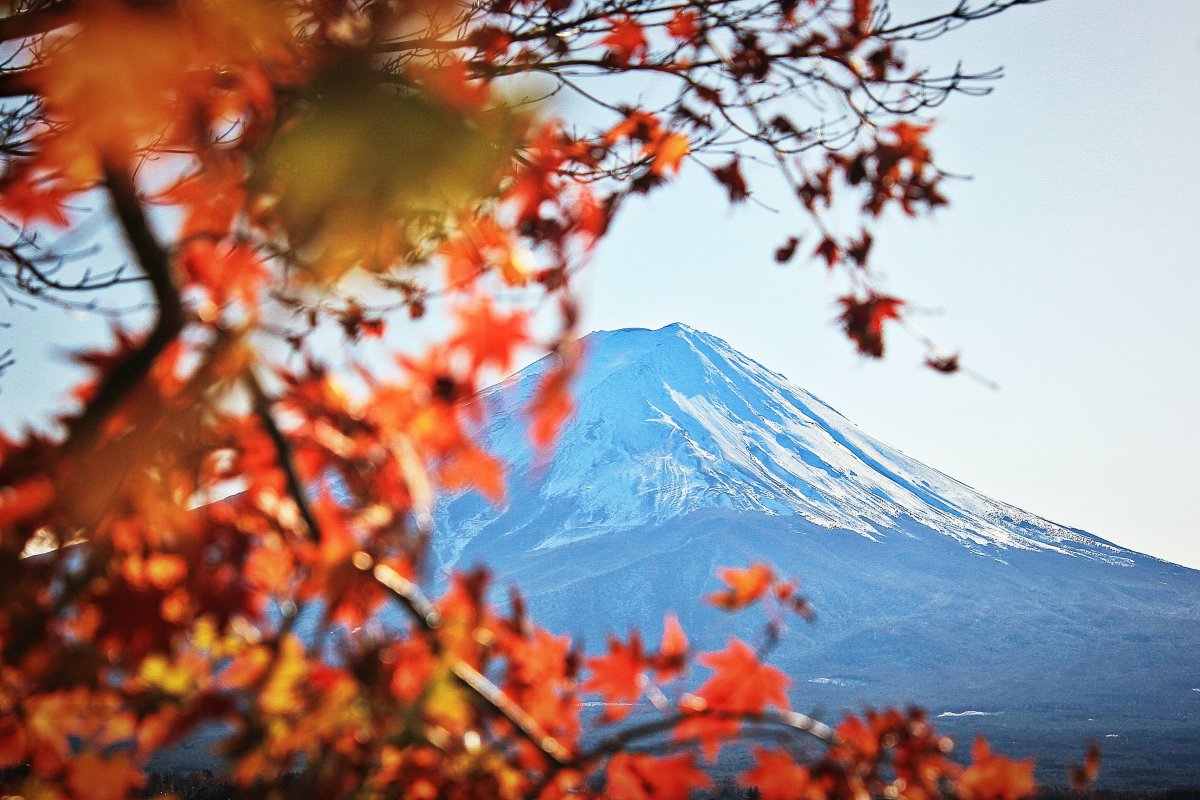
Japan is a surprisingly large country, stretching over 3,000 km in length from top to bottom. The island country consists of 47 prefectures with a wide range of (tourist) attractions and different characteristics when it comes to culture , history and nature . The locals of each prefecture often strongly identify with their home prefecture and its culture, food, and dialect. Visiting each prefecture is its own unique experience and they are all different and beautiful in their own special way.
You can decide on your destinations depending on your own interests and preferences. Learning about each prefecture prior to your visit will help you plan a memorable trip both easily and smoothly. Here is our list of the best places to visit all 47 prefectures of Japan that we think you should consider visiting!
Hokkaido – 北海道
Aomori prefecture, iwate prefecture, miyagi prefecture, akita prefecture, yamagata prefecture, fukushima prefecture, tokyo prefecture, kanagawa prefecture, chiba prefecture, saitama prefecture, gunma prefecture, tochigi prefecture, ibaraki prefecture, niigata prefecture, aichi prefecture, shizuoka prefecture, mie prefecture, yamanashi prefecture, nagano prefecture, gifu prefecture, toyama prefecture, ishikawa prefecture, fukui prefecture, shiga prefecture, kyoto prefecture, wakayama prefecture, nara prefecture, osaka prefecture, hyogo prefecture, okayama prefecture, hiroshima prefecture, yamaguchi prefecture, tottori prefecture, shimane prefecture, kochi prefecture, ehime prefecture, kagawa prefecture, tokushima prefecture, fukuoka prefecture, saga prefecture, nagasaki prefecture, kumamoto prefecture, oita prefecture, miyazaki prefecture, kagoshima prefecture, okinawa – 沖縄, japan wonder travel tours .
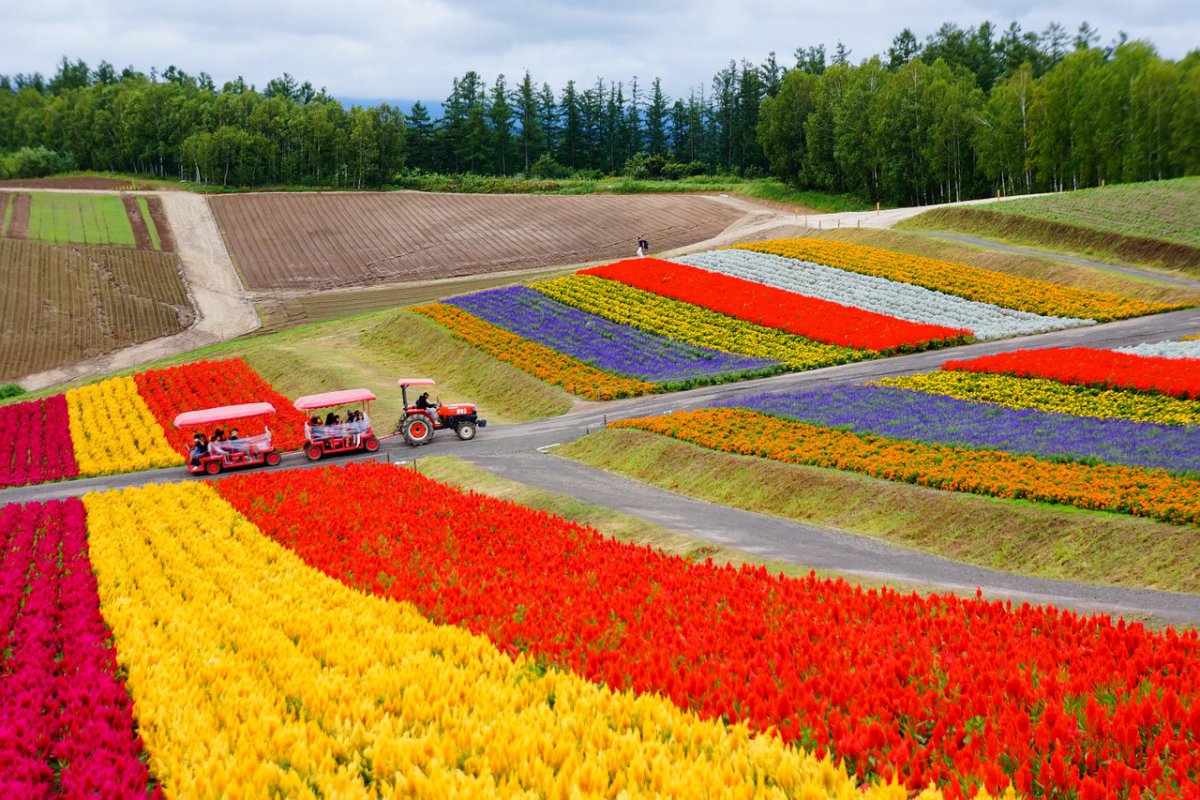
Hokkaido is the northmost, and second largest island in Japan, with no bordering prefectures. It is actually its own region and a prefecture at the same time! It is popular for it’s beautiful nature, onsen , tasty food, and the powder snow in the winter season . Hokkaido is the perfect ski destination that caters to everyone’s tastes and levels! Visit Hakodate , a big city boasting a number of great restaurants which serve fresh seafood and other local cuisines. For a taste of nature, visit Goryokaku Fort Park , a -must-visit cherry blossom viewing spot in spring, or Shiretoko National Park for amazing hiking options. Noboribetsu Onsen offers a relaxing hot spring experience all year around with stunning scenery. Head to Furano to admire popular seasonal flower fields such as lavender that cover a vast area with gorgeous wave of purple!
Tohoku Region – 東北地方
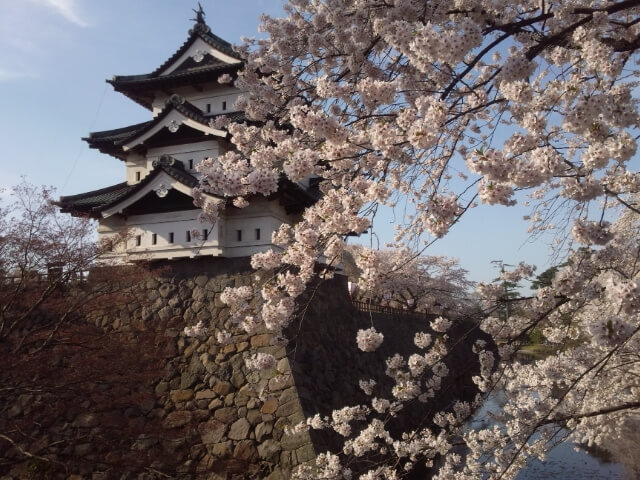
Aomori , on the northern tip of the main island Honshu, welcomes tourists with a beautiful natural landscape and fascinating attractions such as Hirosaki Castle , a symbolic castle listed among the 12 original castles in Japan . Join the Nebuta Festival , one of the biggest summer festivals in Japan to understand the nation deeply through an exciting cultural event. Don’t forget to visit Lake Towada , the third largest lake in Japan at which you will experience a beautiful scenery in the peaceful atmosphere!
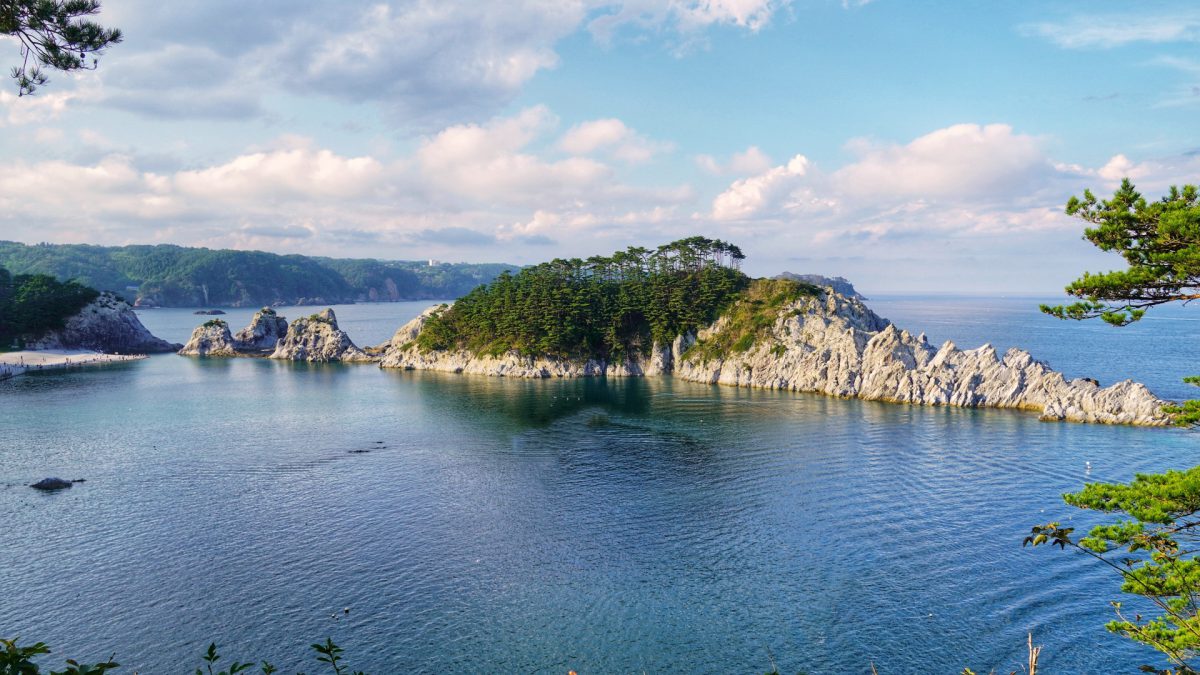
Iwate , facing the Pacific Ocean, is blessed with fresh seafood such as oysters , which are rich in nutrients and have a unique flavor. Chuson-ji Temple is a historical temple famous for the luxurious golden pavilion officially designated as a UNESCO World Heritage Site . The temple is the most popular tourist attraction in the prefecture. Take your children to Koiwai Farm to play with cute animals while enjoying the dairy products made from locally produced milk! In the summer , visit Jodogahama Beach , a beautiful beach that is perfect for a little swim. Unwind and take a relaxing stroll on the scenic sandy beach !

Miyagi plays a role as a business center in the Tohoku region , with a large population and popular tourist attractions. Sendai is the prefectural capital, and is also known as the Forest City because of it’s abundance of nature as well as relaxing spots such as Aoboyama Park and Hirose River in the urban area. Zuihoden Temple is a mausoleum complex dedicated to the famous warrior Date Masamune, the first feudal lord of the Sendai clan which ruled the area from the Sengoku to the Edo period . Matsushima is a scenic spot with 260 rocky islands topped with pine trees located in the Matsushima Port, creating a truly stunning view!

Akita is a mountainous prefecture facing the Sea of Japan, famous for its rice farming and sake production. Visit Kakunodate , a historical district packed with traditional Japanese houses that were originally residences of Samurai back in the old days. Walking around the peaceful area gives you a relaxing experience while immersing yourself in cultural and historical aspects of Japan. The beautiful Lake Tazawa is the deepest lake in Japan (423 m), with an iconic golden statue called Tatsuko-zo , displaying a symbol of a local legend. Drive to the Oga Peninsula for some breathtaking sunset views alongside Godzilla Rock , an iconic rock with a unique shape resembling the world-famous character Godzilla.
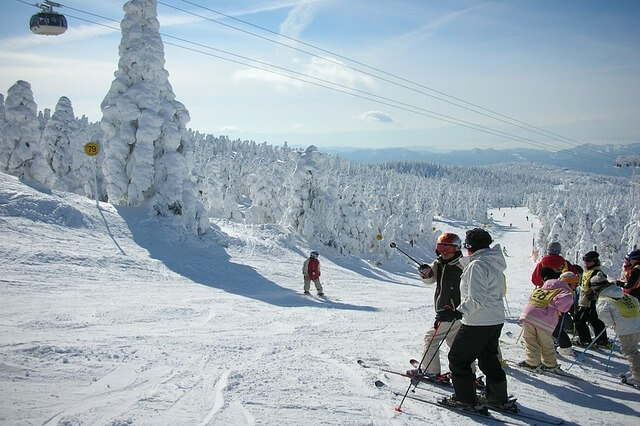
Yamagata boasts a number of tourist spots with beautiful nature and unique features. Zao Onsen is located in the Zao Mountain Range, and is a famous hot spring spot which also offers a range of outdoor activities such as hiking in summer and skiing in winter. The snow monster of Zao Onsen is a natural phenomenon created by snow that sticks around trees, making them look like a giant white monster! Release all of your fatigue at Ginzan Onsen , a famous hot spring resort completely covered with beautiful snow during the winter . Go for a refreshing hiking experience at Hoshuyama Risshaku Temple with a spectacular panoramic view from the top of the mountain!
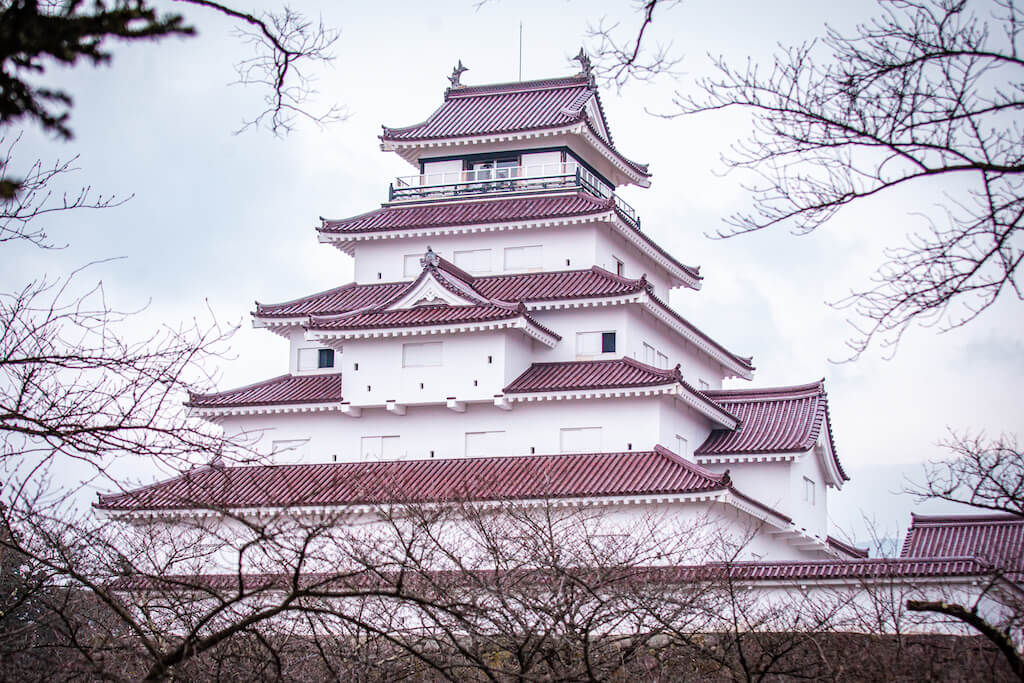
Fukushima suddenly became known worldwide when the disastrous earthquake and tsunami hit the area in 2011. In spite of the unimaginable damage it has received, it has been recovering with the support of locals who are hoping to rebuilt their loses. TEPCO Decommissioning Archive Center is where you can learn about the earthquake and how they managed to decommission the Fukushima Daiichi Nuclear Power Plant , with informative exhibits. Visit Tsuruga Castle , a symbolic historical site located in the heart of Aizu Wakamatsu city . Ouchi-juku refers to a historical area full of traditional Japanese buildings with peaceful surroundings!
We also arrange a special tour that takes you to the disaster areas affected in 2011 to help you understand the impact of the disaster with your own two eyes, as well as learn the truth behind everything that happened. Our 2-day tour is aimed at supporting the locals that are rebuilding the area, as well as spreading awareness about Fukushima. Find out more about this tour that may just change your perspective on life.
Kanto Region – 関東地方
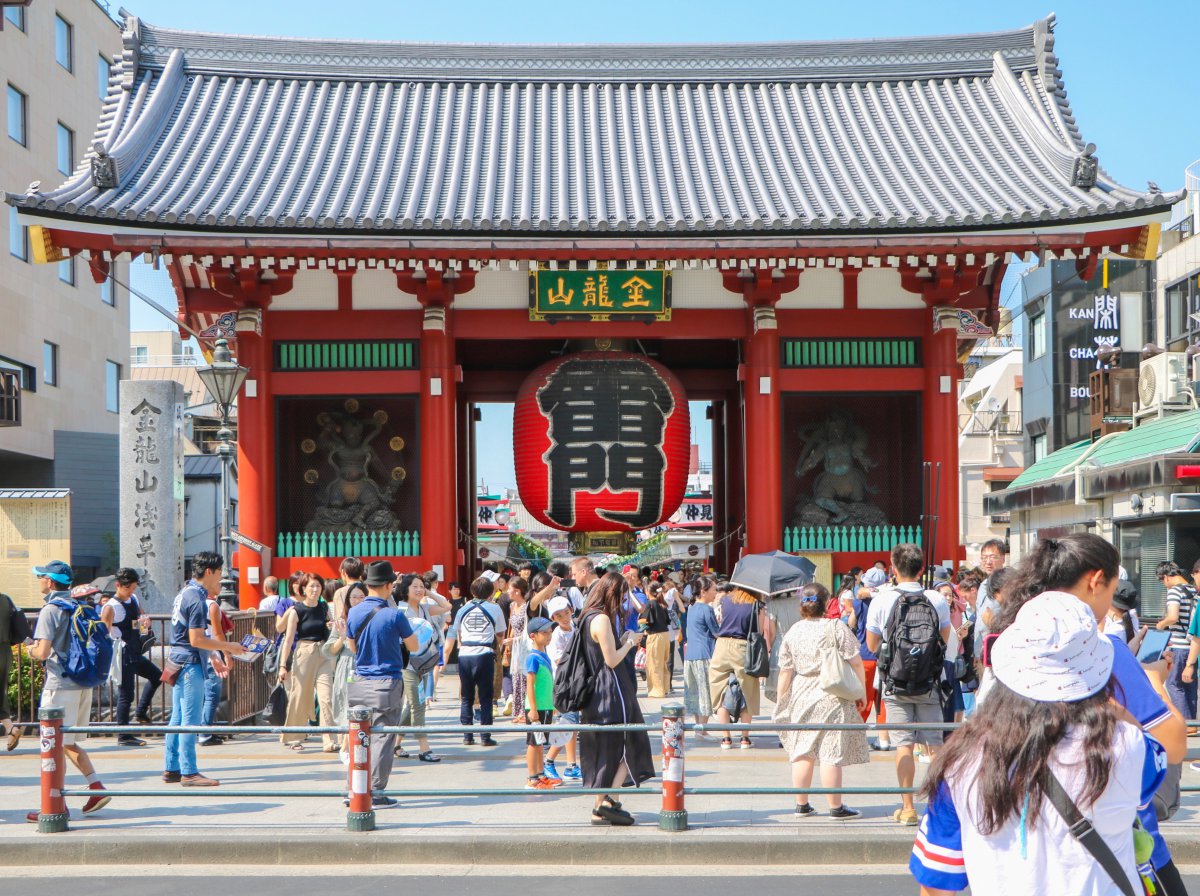
Tokyo , the capital of Japan, can be always found on the top of the ‘where-to-visit-lists’ among tourists. It can be divided into 23 wards, and each of them will always keep you entertained with a variety of tourist attractions ! Shibuya Crossing is the busiest crossing in the world with an average of 2,500 people walking across at the same time. Meiji-jingu is another highlight in Shibuya that attracts a large number of visitors, especially on New Year’s Day for the first shrine visit of the year. Asakusa is an old town which has Senso-ji , the oldest Buddhist temple in Tokyo, and many stalls selling local dishes and small gifts. Akihabara is heaven for manga and a nime fans where you can immerse yourself in Japanese pop culture while exploring electronic stores selling cool gadgets. From bustling nightlife to peaceful gardens, Tokyo nevers ceases to amaze!
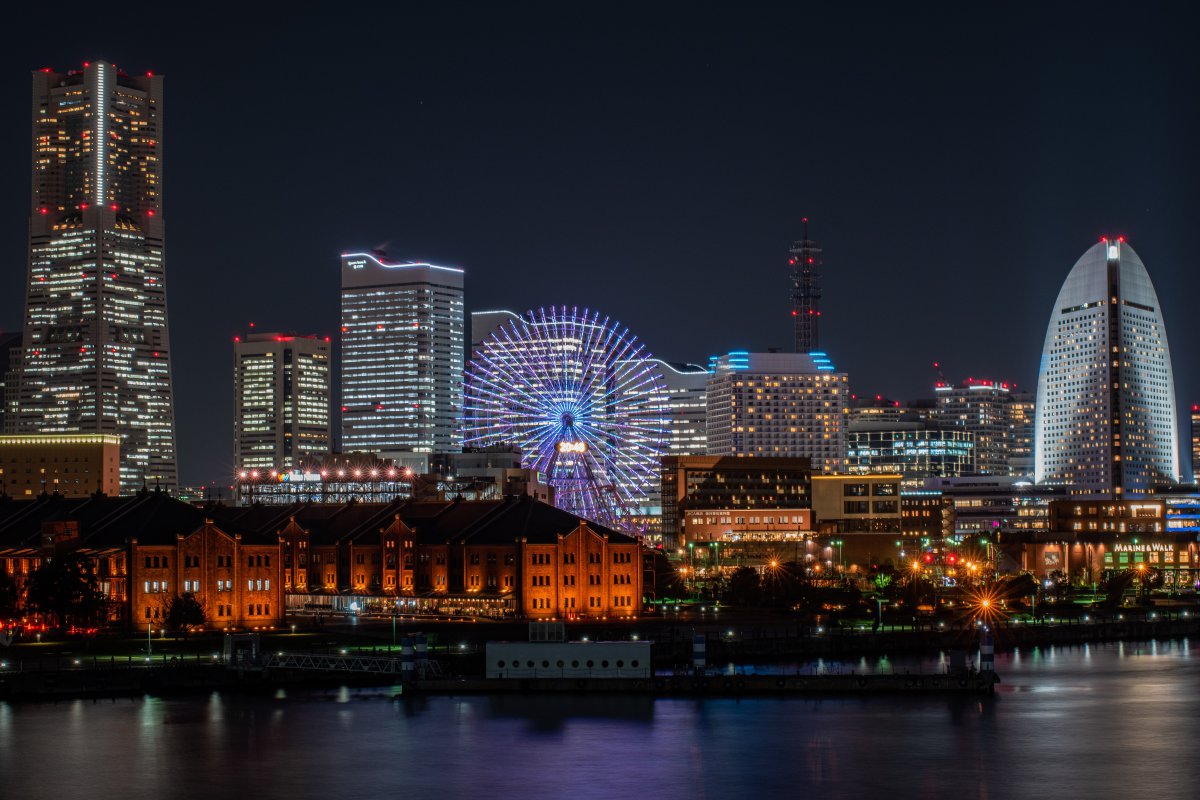
Kanagawa is often chosen as a day trip destination from Tokyo with wonderful (nature) spots. Yokohama is an ideal option for those who want to visit big cities other than Tokyo, with different entertaining spots and attractions. Try some Chinese spots at one of the biggest Chinatowns in the world with hundreds of restaurants and shops. Kamakura , the capital city of Japan from 1185 to 1333, is a beautiful city with a number of historical shrines and temples . Located less than an hour by train from Tokyo, it is a great day trip for those who are interested in Japanese history and culture. Visit Hakone , a famous hot spring resort with dynamic nature spots such as the active volcanic Hell Valley and Lake Ashinoko which offers magnificent views of Mt. Fuji!
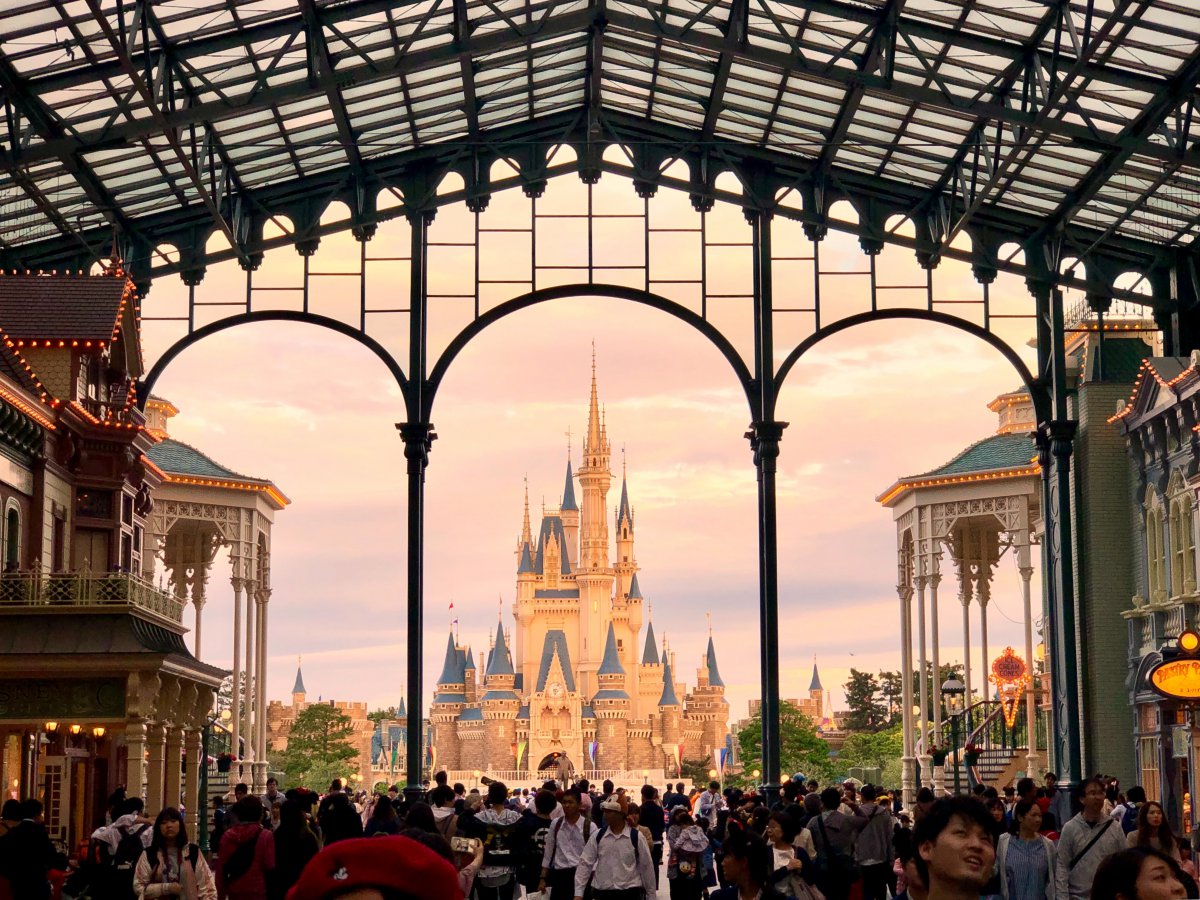
Chiba is a prefecture located east of Tokyo and faces the Pacific Ocean. Many people find it a perfect place to live while commuting to Tokyo for work, as it is well connected to Tokyo but offers a more peaceful environment. Kujukuri Beach is a sandy beach stretching over 60 km on the northeast coast of the Boso Peninsula . It is a popular beach where you can enjoy watersports such as surfing and enjoy the refreshing sea breeze. Tokyo Disney Resort is undoubtedly the most popular place to visit in Chiba and also the most popular theme park in Japan. For a more spiritual experience visit Naritasan Shinshoji Temple , a sacred temple complex with a history of almost 1,100 years. It takes only 10 minutes to get there from Narita International Airport by train!
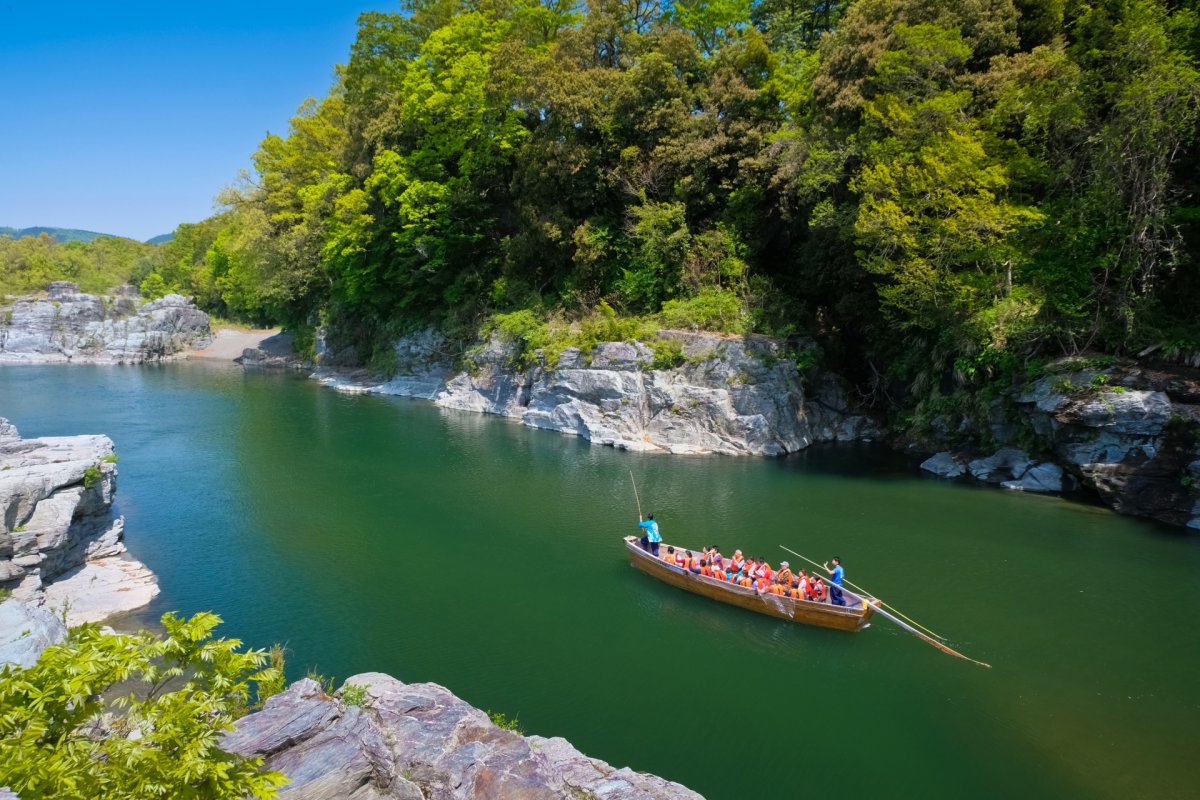
Saitama is another popular commuter town sharing a border with Tokyo. Nagatoro is a peaceful town with the population of 7,000 that is a popular location in Saitama with a number of scenic nature spots. Enjoy a calming river cruise on Arakawa river or go white water rafting on the Nagatoro River . Don’t miss a chance to try Nagatoro’s kakigori , shaved ice made with natural ice which is surprisingly soft and refreshing! Saitama’s most popular place is Kawagoe , an old town known as Little Edo , as there are a number of historical buildings dating back to the Edo period.
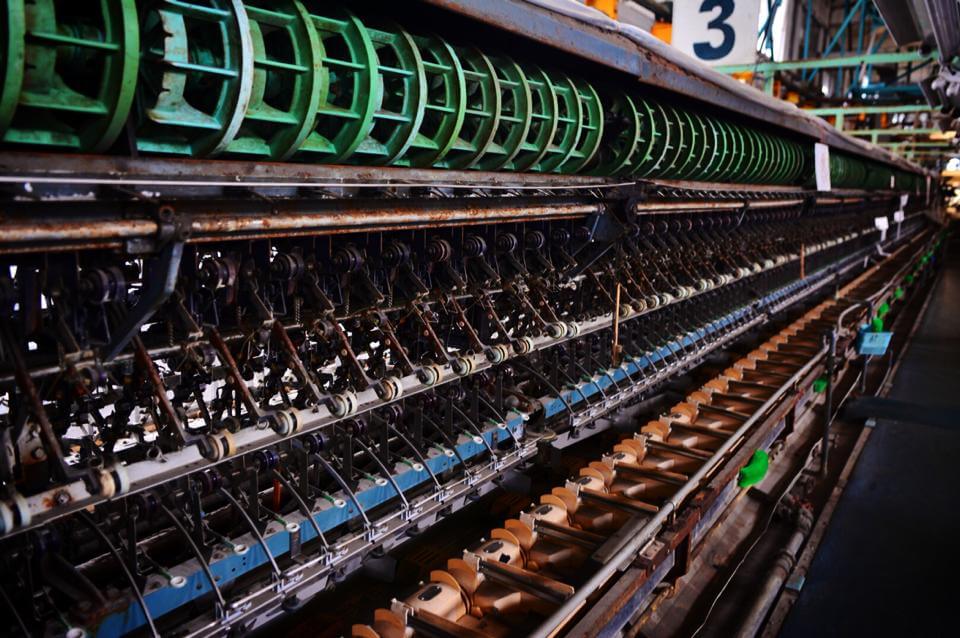
Gunma is a small prefecture that you can easily reach in less than an hour from Tokyo by Shinkansen . Kusatsu is one of the most popular hot spring resorts in Japan with the high-quality water that is said to have a lot of health benefits. Tomioka Silk Mill is a silk factory which was originally started by the Japanese government in 1872, and later designated as a UNESCO World Heritage Site in 2014. Pay a visit to Haruna Shrine , a spiritual spot with a unique scenery of a historical shrine and giant rocks that was established about 1,400 years ago.
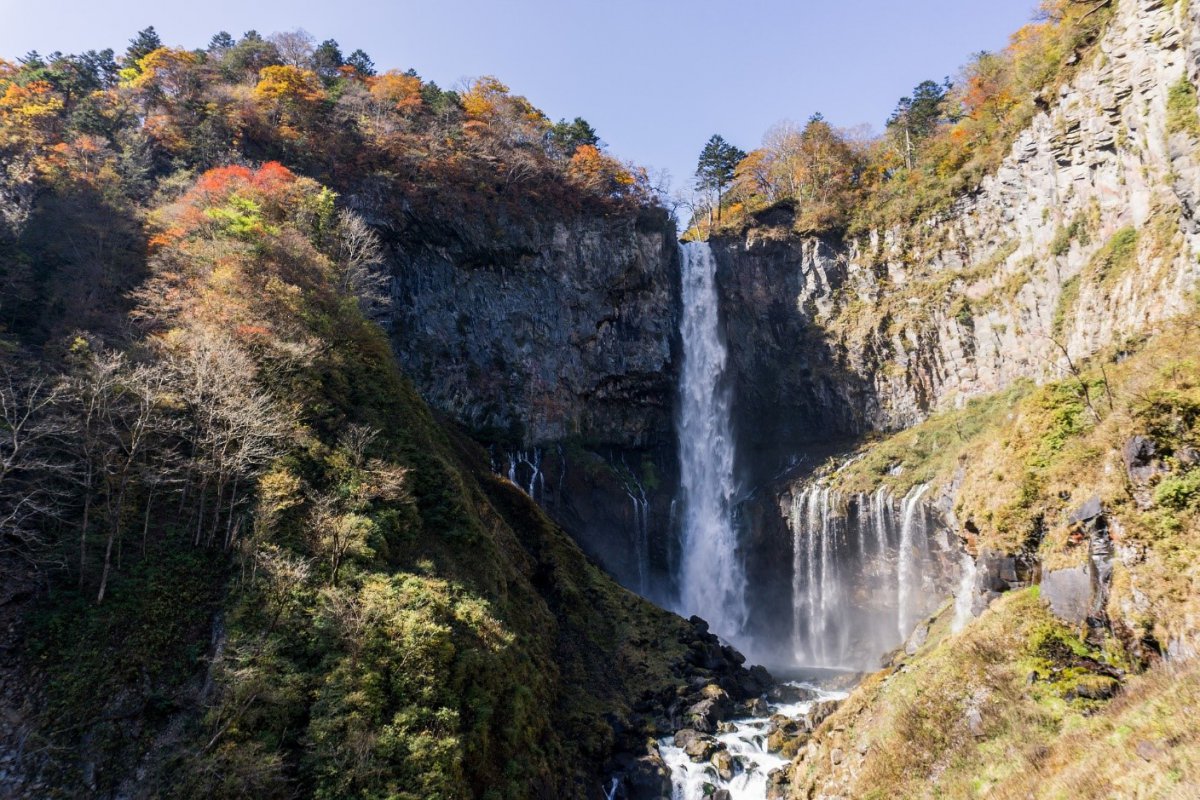
Tochigi is another perfect spot to spend a day or weekend away from the bustle in Tokyo. Nikko is the most popular sightseeing spot that is definitely worth visiting at least once in a lifetime! Toshogu Shrine is a mausoleum of Tokugawa Ieyasu, who was the first Shogun of the Tokugawa Shogunate which ruled Japan during the Edo period. The shrine covers a vast area with a number of impressive historical structures, and is officially listed as a UNESCO World Heritage Site. The beautiful details and designs of each structure are extraordinary! Kegon Falls is a scenic waterfall , claimed as one of the three most beautiful waterfalls in Japan. The 97-meter waterfall creates a stunning view especially in autumn , when the leaves turn red, green, and yellow and make for a beautiful view!

Ibaraki is in the north part of the Kanto area , and offers a range of relaxing experiences in nature. The prefecture is also easily accessible from Tokyo by train or car. Hitachi Seaside Park is a national public park which welcomes visitors with a large collection of flowers including Nemophila (also known as baby blue eyes), an adorable tiny flower that blooms in the spring. Renting a bike and exploring the park’s flower fields is a fun activity with changing scenery all year round. Mount Tsukuba is a small mountain with two peaks, and has several relatively easy hiking trails. Or you can take the cable car up to the summit from which you have a great view of the area! Don’t miss Fukuroda Falls that is known as one of the three most beautiful waterfalls in Japan along with Kegon falls in Nikko!
Chubu Region – 中部地方

Niigata is a prefecture widely known as the largest producer of rice and scenic rice fields. The heavy snowfall and long winter season due to the high elevation, make Niigata an ideal destination for winter sports fanatics. Enjoy the soft snow at Gala Yuzawa with several ski courses. Try fresh seafood caught and directly delivered from the Sea of Japan at Teradomari Fish Market . Niigata boasts a number of local sake brands which you can taste at Ponshu-kan sake museum located at Niigata station. Take a scenic drive through Hoshitoge Rice Terraces to catch the photogenic scenery with the sunset.

Aichi is the most developed prefecture of the Chubu region and has a population of over 7.5 million. Most of the people live in Nagoya , the prefectural capital with skyscrapers and business districts. Nagoya Castle is a landmark built by Tokugawa Ieyasu during the Edo period. Outside the castle gates, Kinshachi Yokocho attracts a number of visitors as a perfect spot to try local dishes. Inuyama Castle is another symbolic castle listed among the 12 original castles in Japan. Visit some remote islands such as Himakajima and Sakushima to explore the beautiful nature of Aichi. Chubu Airport is a gateway for domestic and international travelers and also an exciting shopping spot with a number of shops and restaurants available even for those who don’t have travel plans.

Shizuoka is a large prefecture located between Kanagawa and Aichi, and is famous for green tea and it’s mild climate, as there’s hardly any snowfall in the winter season. Mt. Fuji , Japan’s tallest iconic mountain with sacred historical sites and deep forests at the base, is definitely the highlight of the prefecture. Shuzenji is a peaceful area known as a hot spring resort with several traditional inns and free foot bathes around the city. Let your children spend some time at Fuji Safari Park , which houses a variety of animals that you can get close to from your car. Yume no Tsuribashi is a 90-meter suspension bridge located in Sumatakyo Gorge . Take a memorable photo with the scenic surroundings and the emerald green water!

Mie is home to Ise Grand Shrine , one of Japan’s most sacred Shinto shrines dating back over 2,000 years. Enjoy a refreshing hiking experience in Magome Pass , part of a famous network of ancient pilgrimage trails known as Kumano Kodo . Head to Nabana no Sato , a huge garden with a variety of seasonal flowers and plants fascinating visitors all year round especially in winter with impressive illuminations!
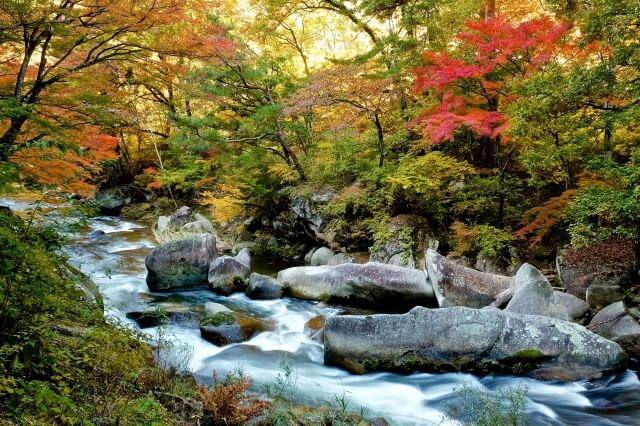
Yamanashi is a landlocked prefecture located north of Shizuoka, home to the northern half of Mount Fuji and the Fuji Five Lakes . Fuji Five Lakes refers to a set of beautiful lakes situated around Mt. Fuji. There are hotels, camping sites, hot spring resorts, and more to explore. Shosenkyo Gorge is a scenic gorge with a peaceful hiking trail taking you to other tourist attractions around the area. Oshino Hakkai is a small village with traditional Japanese buildings and beautiful ponds. It is always packed with tourists hoping to take a great picture of Mt. Fuji that can be found in the distance on a sunny day.
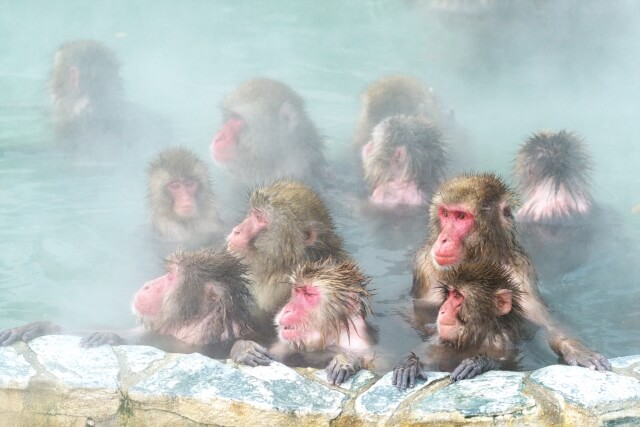
Nagano is a mountainous prefecture known as a large producer of several kinds of fruit such as apples and grapes. In 1998, the Winter Olympics were held in Nagano, boosting the areas’ popularity amongst snow activity fanatics. Hakuba , Shiga Kogen and Nozawa Onsen are some its most popular ski resorts . Matsumoto Castle is an iconic landmark which is also listed among the 12 original castles in Japan. Not only is this castle of historical value, it also is widely recognized as a popular cherry blossom viewing spot in spring. Zenkoji Temple is a Buddhist temple which dates back in the 7 th century. At the Snow Monkey Park you can watch Japanese Macaques, better known as Snow Monkeys, relax in natural hot springs. It may surprise you how smart they are to survive the severe winter season by soaking their body in the warm, refreshing bath!
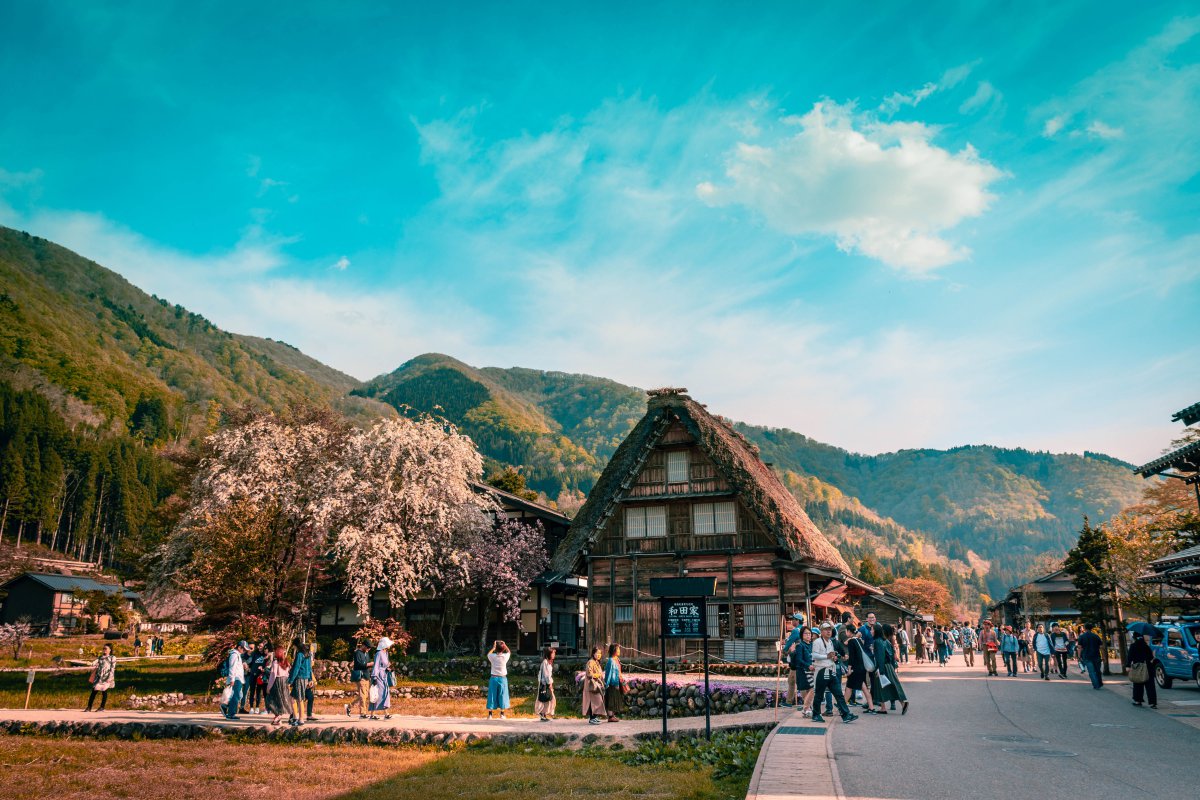
Gifu is another mountainous prefecture home to a world-famous tourist attraction known as Shirakawago , a small village designated as a UNESCO World Heritage Site. There are a number of traditional Japanese houses preserved in perfect condition. They have survived centuries thanks to the significant effort of local people to preserve the impressive landscape. Gassho-zukiri is a Japanese architecture style with thatched-roofs, preventing the house from collapsing under the heavy snow during the winter season. Hida Takayama is another famous spot full of traditional buildings lining the narrow streets, creating a beautiful townscape. Enjoy local specialties such as Hida Beef while walking around the historical area. Another famous spot in Gifu Prefecture is Gero Onsen , one of the greatest hot springs in Japan.
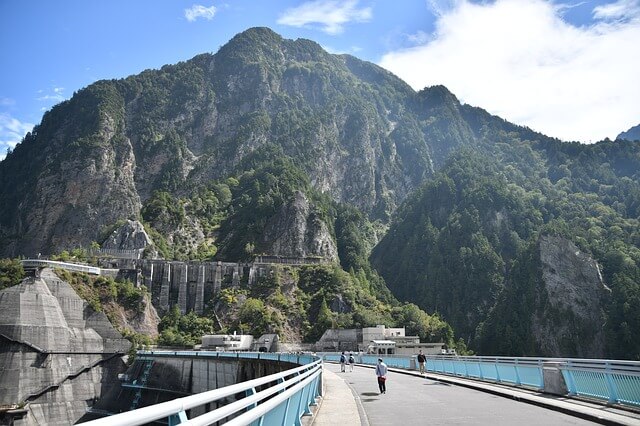
Toyama is a prefecture facing the Sea of Japan. It boasts Kurobe Dam , the biggest artificial dam in Japan located deep in the mountains. The 186-meter-tall dam attracts a lot of tourists especially in the summer, when the water stored in the dam is discharged to entertain visitors! Autumn is a great season to visit Toyama as the mountains become beautiful autumn leaves and colors. Amaharashi Beach is a scenic beach stretching along the Toyama bay . During the winter season, you may have the chance to see the beach with Tateyama mountain range partly covered with snow, creating a stunning view! Gokayama is a small village with a number of Japanese traditional houses, which is also officially designated as a UNESCO World Heritage Site.
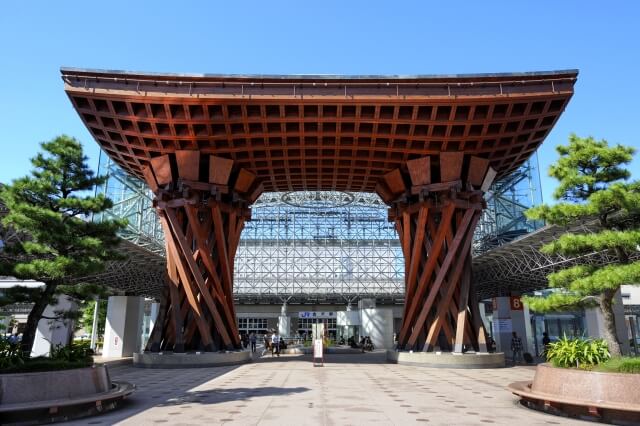
Ishikawa is located to the west of Toyama, and accessible from Tokyo in 2.5 hours on the Hokuriku Shinkansen. Kanazawa is the prefectural capital which is sometimes referred to as Little Kyoto , with a number of historical spots such as the townscape of Higashi Chaya District . Kanazawa Castle is a symbolic structure located at the heart of the city, once used as a residence for feudal lords who ruled the area from the 16th to 18th centuries. Visit Kenrokuen , one of the three greatest gardens in Japan located right next to the castle. Exploring the huge garden with a variety of plants and historical structures gives you an opportunity to feel at ease.
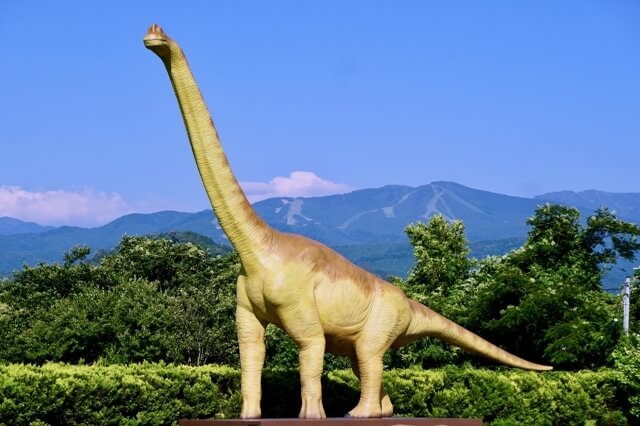
Fukui is a relatively small prefecture which borders Ishikawa, Gifu, Shiga and Kyoto. It has a world-famous dinosaur museum which houses a large collection of exhibits including valuable fossils of dinosaurs excavated there. Tojinbo Cliff refer to a series of giant rock formations along the steep coastline. You can walk around on the rocks along a safe pathway, while taking amazing pictures of the sea. If you want to visit somewhere historical, head to Eihei-ji Temple, a sacred Buddhist temple which dates back to the 13 th century!
Kansai Region – 関西地方
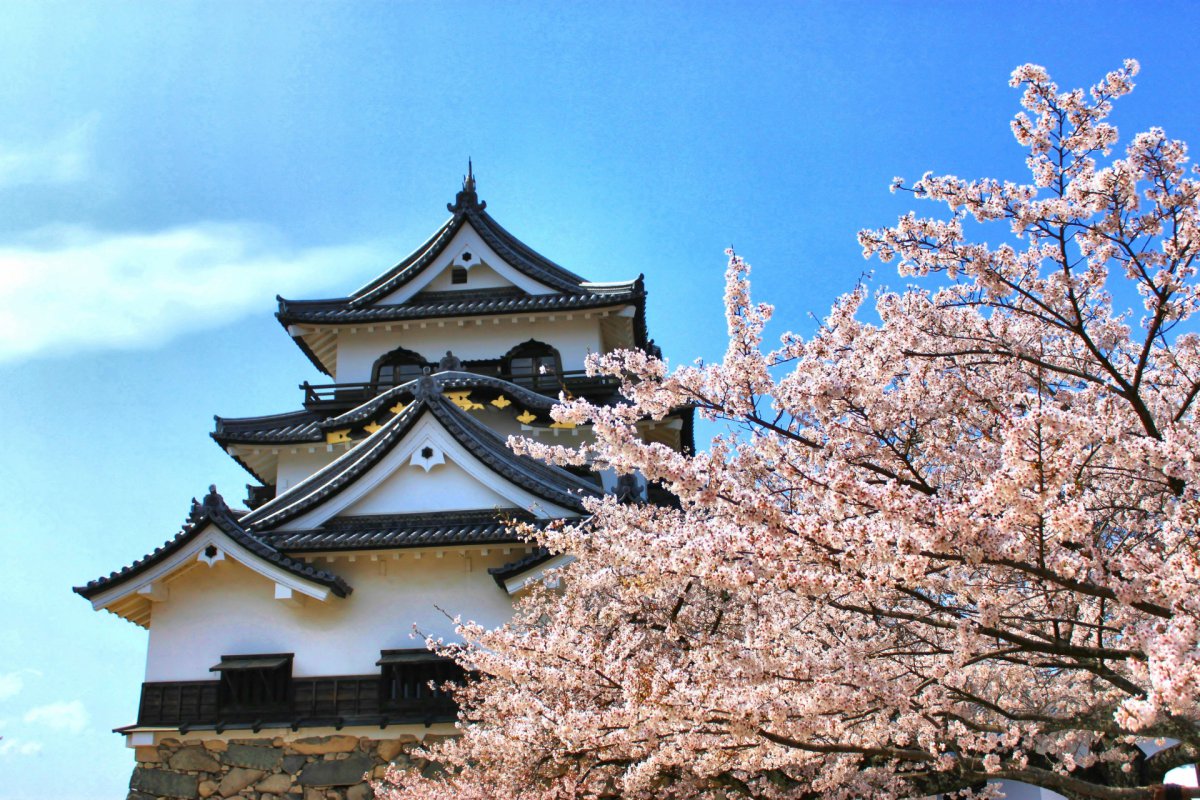
Shiga is a prefecture east of Kyoto widely known for Lake Biwa , the largest freshwater lake in Japan. Hikone is a beautiful city near Lake Biwa and known for its castle, the most popular tourist destination in the prefecture. Visit Hikone Castle , one of the 12 original castles in Japan, to learn about the history and get a panoramic view of the entire city from the observation deck on the top floor. Hieizan Enryakuji, a Buddhist temple also known as the head temple of the Tendai Sect of Japanese Buddhism, is also a must-visit.

Kyoto is the ancient capital of Japan with a number of famous historical spots such as temples and shrines. F ushimi-inari Taisha Shrine is the most visited tourist attraction in Japan with thousands of red torii gates. Kinkakuji Temple is the golden temple completely covered with gold leaf, creating a stunning scenery with a beautiful Japanese garden around. Arashiyama is a scenic area which is world-famous for the bamboo forest where you can relax walking through countless numbers of beautiful, green bamboo and visit some of Japan’s most beautiful zen gardens. Stroll through the Gion district , where you can experience the history and the geisha culture , and continue your way uphill to the stunning Kiyomizudera Temple .

Wakayama is a prefecture located to the south of Osaka. It welcomes tourists with a number of scenic and sacred spots such as Kumano Nachi Taisha , a Shinto shrine designated as a UNESCO World Heritage Site along with Kumano Hongu Taisha and Kumano Hayatama Taisha . The nearby waterfall provides a spectacular backdrop. Kumano is also where you can have a memorable hiking experience along the old pilgrimage routes called Kumano Kodo . Explore the holy shrines while walking through sacred forests. Spend a refreshing summer break at Shirahama Beach , stretching 600 meters with great hotels and inns nearby.

Nara is often visited along with Kyoto, as they are well connected by train and because of the similarity represented by old temples and shrines. At Nara Park , more than 1,200 deer welcome visitors and you can feed them with crackers sold in the park. Todaiji is a Buddhist temple built in the 8 th century, officially listed as a UNESCO World Heritage Site. It houses a huge Daibutsu (Great Buddha), which stands 15 meters tall and has a peaceful smile on its face. Nara boasts several other historically important sites including Horyuji Temple , Omiwa Shrine , and Kashihara Jingu Shrine .

Osaka , known as the second largest metropolitan city in Japan, has more than what you might be able to imagine. Osaka Castle is a landmark that is definitely worth a visit. It houses a large collection of valuable exhibits, and takes visitors with an elevator up to the top floor that offers a panoramic view of the city. Try local specialties at the food stalls and restaurants in Dotonbori and Namba area, you can easily understand why Osaka is known as the culinary capital of Japan. Osaka has a unique food culture that is totally different from Tokyo. Visit Osaka Bay Area which is home to modern tourist attractions such as Universal Studio Japan and Osaka Aquarium Kaiyukan .
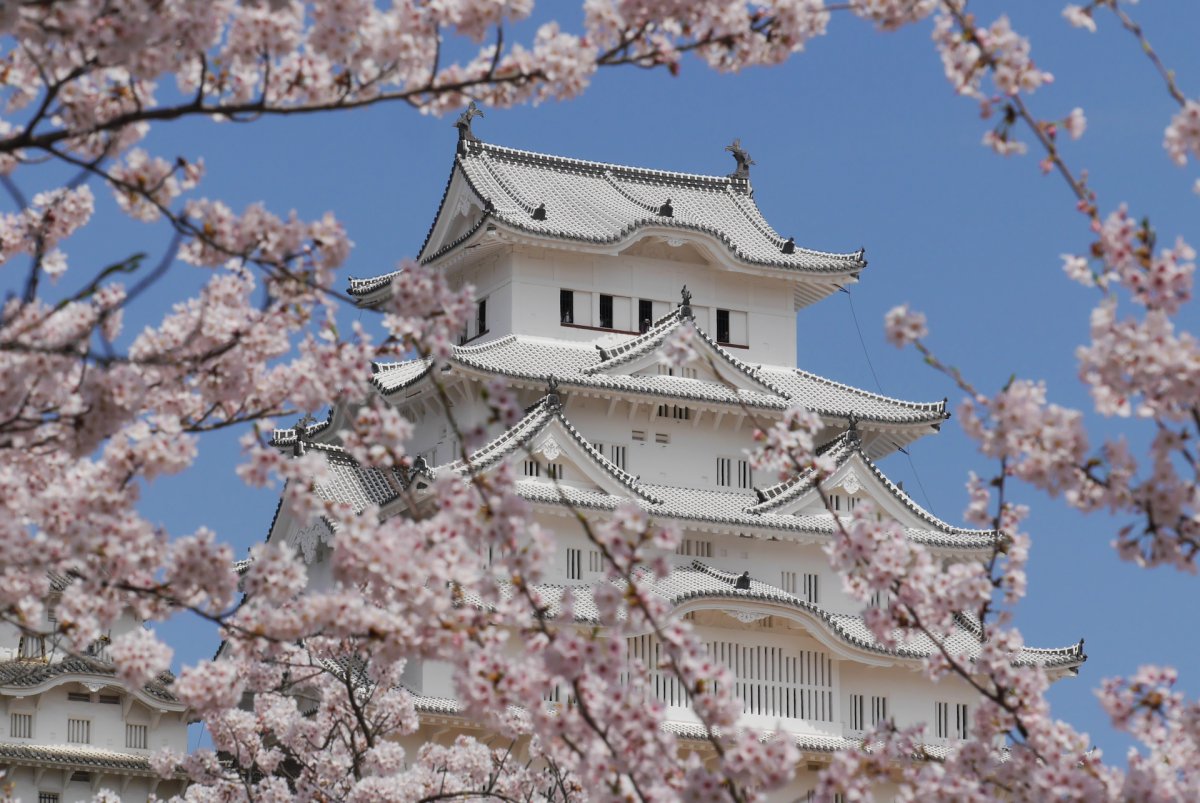
Hyogo is a prefecture that also attracts a high number of tourists to the Kansai region . Himeji Castle is an iconic castle widely known for the beauty of the white walls. Enjoy relaxing hot springs at Arima Onsen , one of the oldest Onsen resorts in Japan with beautiful nature around. Takeda Castle Ruins refers to a castle ground with no buildings, but it fascinates visitors with the unique scenery when it looks like it is floating on a sea of clouds during the autumn and winter seasons! Don’t forget to try Kobe beef which is incredibly tender and flavorful!
Chugoku Region – 中国地方
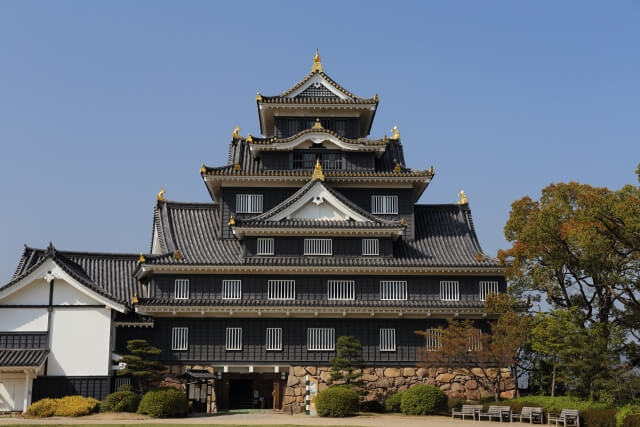
Okayama is a peaceful prefecture nicknamed the Land of Sun . It boasts a large produce of fresh peaches and other juicy fruits . Kurashiki Bikan Area , once a flourishing merchant town, is where most tourists visit. The beautiful landscape with a number of traditional Japanese buildings in perfect condition, make visitors feel as if they traveled back to the Edo period. Okayama Castle dates back to around the 16 th century and is another must-visit if you have any interest in Japanese history. Right next to the castle, you can find Okayama Korakuen Garden , one of the three most beautiful gardens in Japan!

Hiroshima is a business and economical center in the Chugoku region with a population of over 2.8 million people. Partly because of the tragic history of the atomic bomb dropping during WWII in 1945, it has served as a popular tourist destination with great tourist attractions. the Peace Memorial Museum houses a large collection of exhibits including pictures taken soon after the bomb attack. The Atomic Bomb Dome is located within walking distance from the informative museum in the Peace Memorial Park . Miyajima is another popular spot famous for the big red torii gate that appears to be floating on water during high tide. The small island is full of exciting experiences: visit Itsukushima Shrine , try local specialties such as Momiji-Manjyu , hike to the summit of Mount Misen and take a memorable photo with cute free roaming deer!

Yamaguchi is located at the western tip of the main island in Japan. It is famous for fresh blowfish caught at Shimonoseki , a port town known as the largest blowfish harvester in Japan. Tsunoshima is a beautiful island connected to the main island by a 1,780-meter bridge completed in 2000. Many people flock to Tsunoshima to escape from the summer heat and enjoy sea bathing in the crystal-clear water. At Motonosumi Shrine, 123 red torii gates line up on the cliff make for a beautiful contrast with the blue ocean. Kintai Bridge is a historical wooden bridge which attracts crowds especially in the spring, when the cherry blossoms along the river are in full bloom!

Tottori is a home to Tottori Sakyu , the largest sand dunes in Japan. They stretches about 16 km along the Sea of Japan, creating a unique scenery. You can explore the desert riding on a camel or go paragliding . For some amazing, unique sand art such as life-sized statues, visit the nearby Sand Museum . Enjoy a refreshing boat cruise at Uradome Coast which has a white sandy beach, giant cliffs created by wave erosion, and other scenic spots. Hakuto Shrine is a small, peaceful shrine where you can spot a number of statues of white rabbits!
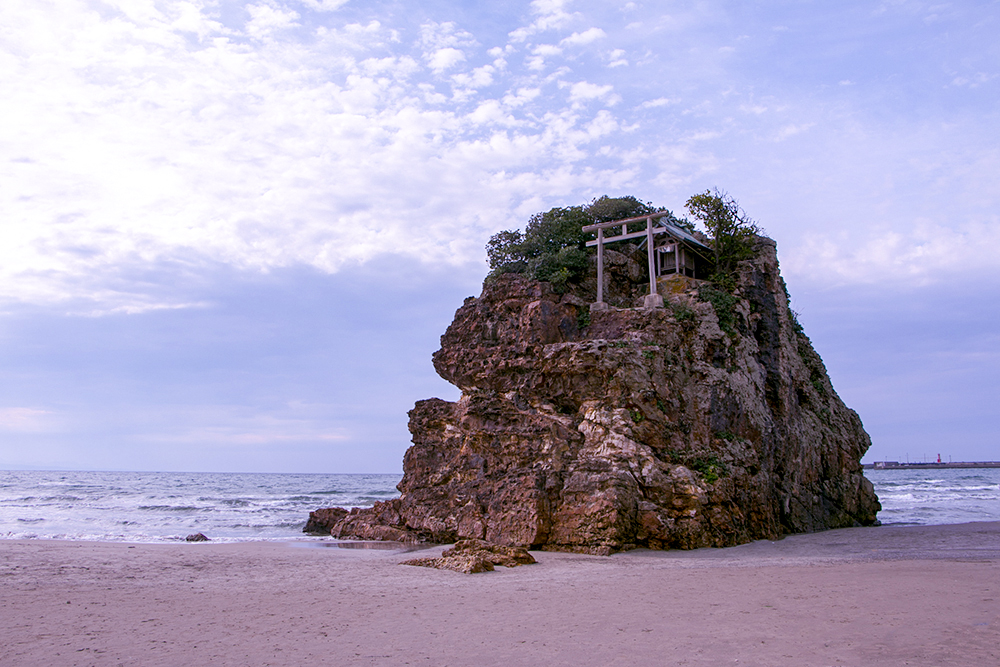
Shimane is a small prefecture which borders Yamaguchi, Hiroshima, and Tottori. The highlight of Shimane is undoubtedly Izumo Taisha Shrine , one of the oldest and greatest shrines in Japan along with Ise Grand Shrine in Mie prefecture. It is believed that it brings good fortune for love and marriage, making it a popular visit among couples and the younger generations in recent years. Matsue Castle is another fascinating spot, designated as a National treasure and one of the 12 original castles in Japan. During the spring season, it is packed with visitors who come to enjoy cherry blossom viewing!
Shikoku Region – 四国地方
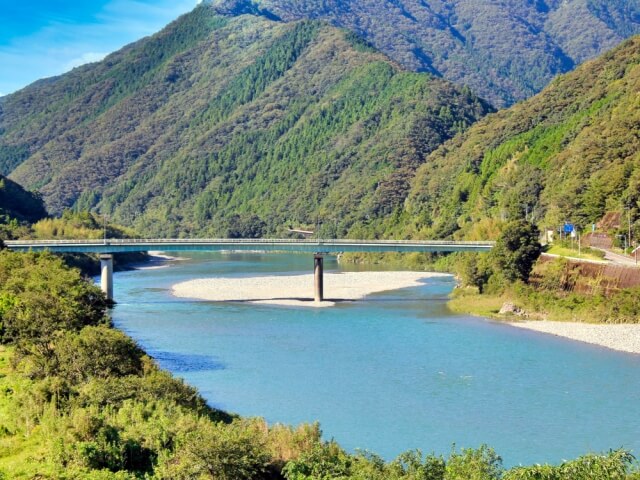
Kochi is one of the four prefectures comprising the Shikoku region . It covers both vast mountainous areas and long coastlines, making it a perfect destination for those looking for adventurous experiences in different sceneries. Kochi Castle is an elegant castle located at the heart of Kochi city. Go to Katsurahama Beach to catch a panoramic view of the Pacific Ocean and feel the refreshing sea breeze. Shimanto River is one of the beautiful, intact streams that can be spotted in the mountainous areas with about 47 footbridges built over it. Enjoy rafting or canoeing in the longest river in the Shikoku region while unwinding in the peaceful surroundings away from crowds in the bigger cities.
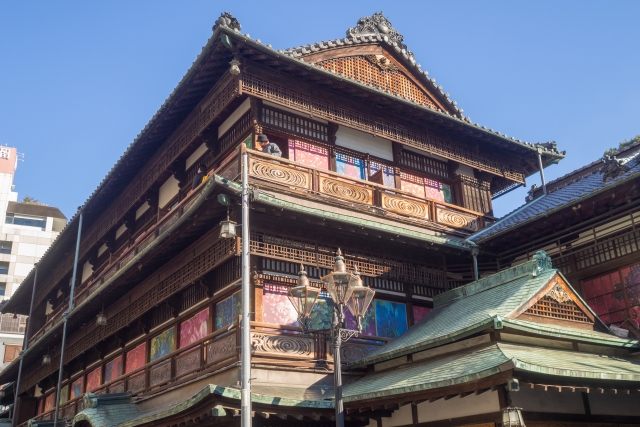
Ehime is a small prefecture in west Shikoku and includes a number of small islands. It has everything that foreign tourists expect to try and visit during their trip to Japan including castles, temples and onsen. Its main attraction is Dogo Onsen, known from the Ghibli movie Spirited Away. Ehime prefecture is also the final prefecture of the Shimanami Kaido , a 60km long scenic toll road, that is also very popular among cyclists. Pay a visit to Oyamazumi Shrine , a small sacred shrine on Oshima island . Don’t forget to try fresh seafood at local restaurants!
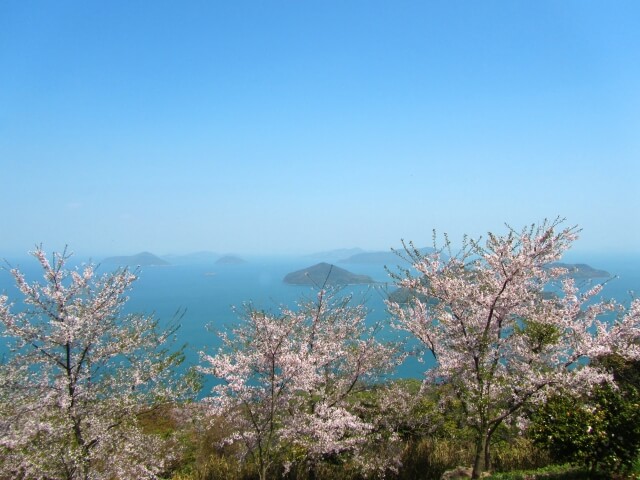
Kagawa is the smallest prefecture in Japan, and known as the Udon prefecture . It will give you a totally different impression once you visit as there are a number of amazing spots. Kompirasan is a Shinto shrine which is dedicated to the sailors and seafaring, and is also known as the main Kompira shrine in Japan. In spring, enjoy cherry blossoms blooming around Marugame Castle . Take a ferry from Takamatsu port to the prefectures most popular attraction: Naoshima Island . The island is full of art works and home to impressive art museums in harmony with nature!
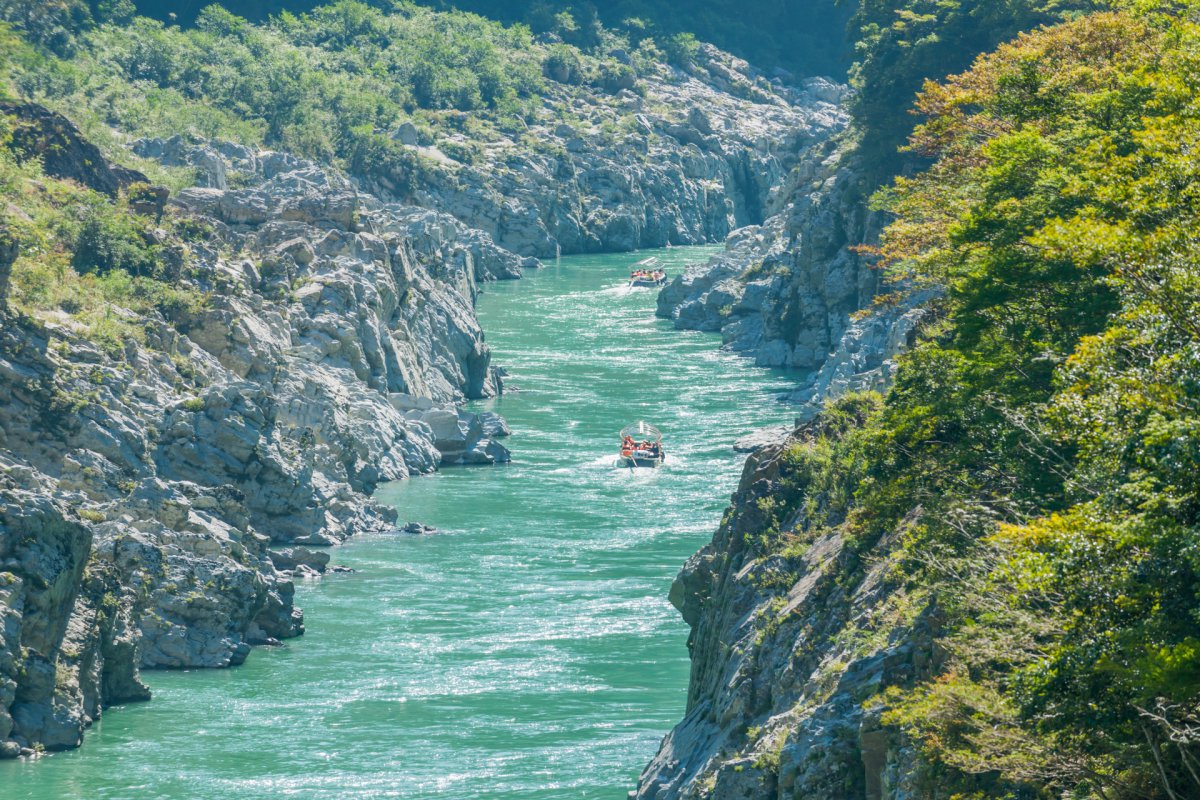
Tokushima is relatively less famous among (international) tourists, but it has many hidden gems waiting to be discovered! Naruto Kaikyo refers to the strait underneath the Onaruto Bridge connecting Tokushima to Awaji island in the Seto Sea . Join a boat tour that takes you close to the huge swirling whirlpools, called Uzushio in Japanese. Explore Iya valley which features rocky gorges and deep forests with vine suspension bridges called Kazura-bashi Bridges over the beautiful Iya river. Ochiai Village is one of the most popular tourist attractions where you can see traditional Japanese houses built on the slope of a mountain!
Kyushu Region – 九州地方
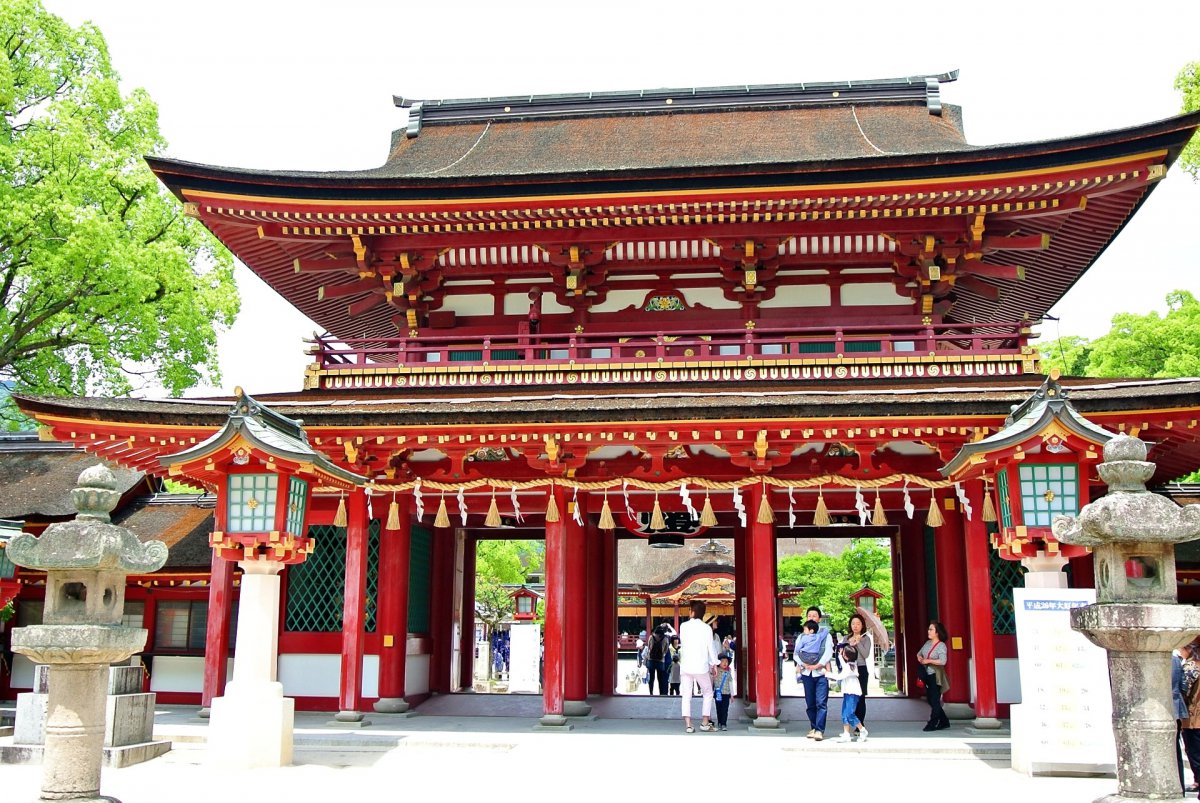
Fukuoka is the most urbanized prefecture in Kyushu region with a large population and busy business districts. Try local dishes such as Tonkotsu Ramen and Mizutaki at local restaurants around the Tenjin Are a or Fukuoka Tower , both located in the namesake prefectural capital. Visit Dazaifu Tenmangu dedicated to the god of education, or Munakata Taisha , a UNESCO World Heritage Site located on a sacred island called Okinoshima . Nanzoin Temple houses one of the biggest bronze Buddha statues in the world, called the reclining buddha. For nature spots, head to Kawauchi Fujien, an amazing spot to admire the stunning wisteria flowers that blossom in the spring.

Saga is where you can really experience the countryside life in Japan while at the same time exploring fun tourist spots. The prefecture is famous for Japanese porcelain, with Arita-yaki and Imari-yaki pottery styles that gained popularity worldwide. Yoshinogari Park is an archaeological site with a number of remains and reconstructed structures of an ancient village dating back to the Yayoi period (300 BC to 300 AC). Visit Saga Castle , a reconstructed landmark that has a large collection of exhibits helping visitors learn about the history of the city. For a relaxing experience, dip in to the waters of Takeo Onsen or Ureshino Onsen !
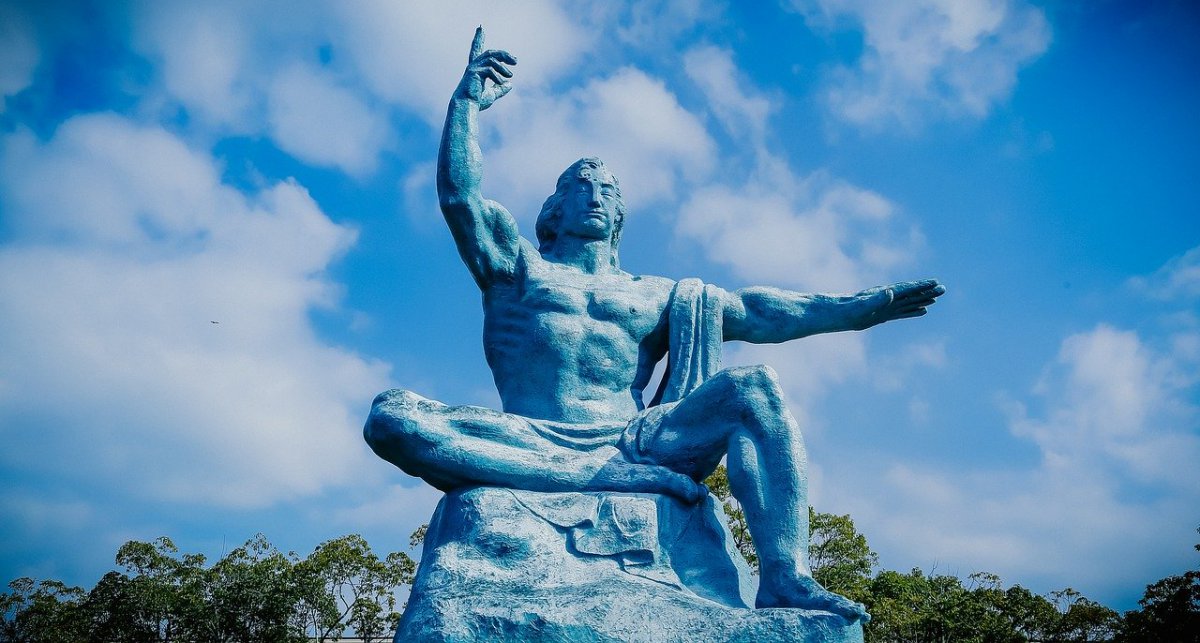
Nagasaki has unique features such as an exotic atmosphere influenced by western countries and hilly areas creating an impressive townscape. The prefecture is home to the man-made island of Dejima , through which the only western influences were allowed during the Sakoku (closed country) period. Visit the Atomic Bomb Museum to learn about the tragic history about the atomic bomb dropping in 1945. Glover Garden allows you to take a relaxing stroll in a lovely garden with historical western style buildings from back in the Meiji period . For a breathtaking night view, head up to Mount Inasa Observatory , that is said to be the best nighttime panorama in all of Japan. Another recommended area is the Goto Islands , a cluster of scenic islands with beautiful natural spots accessible by plane or ferry.
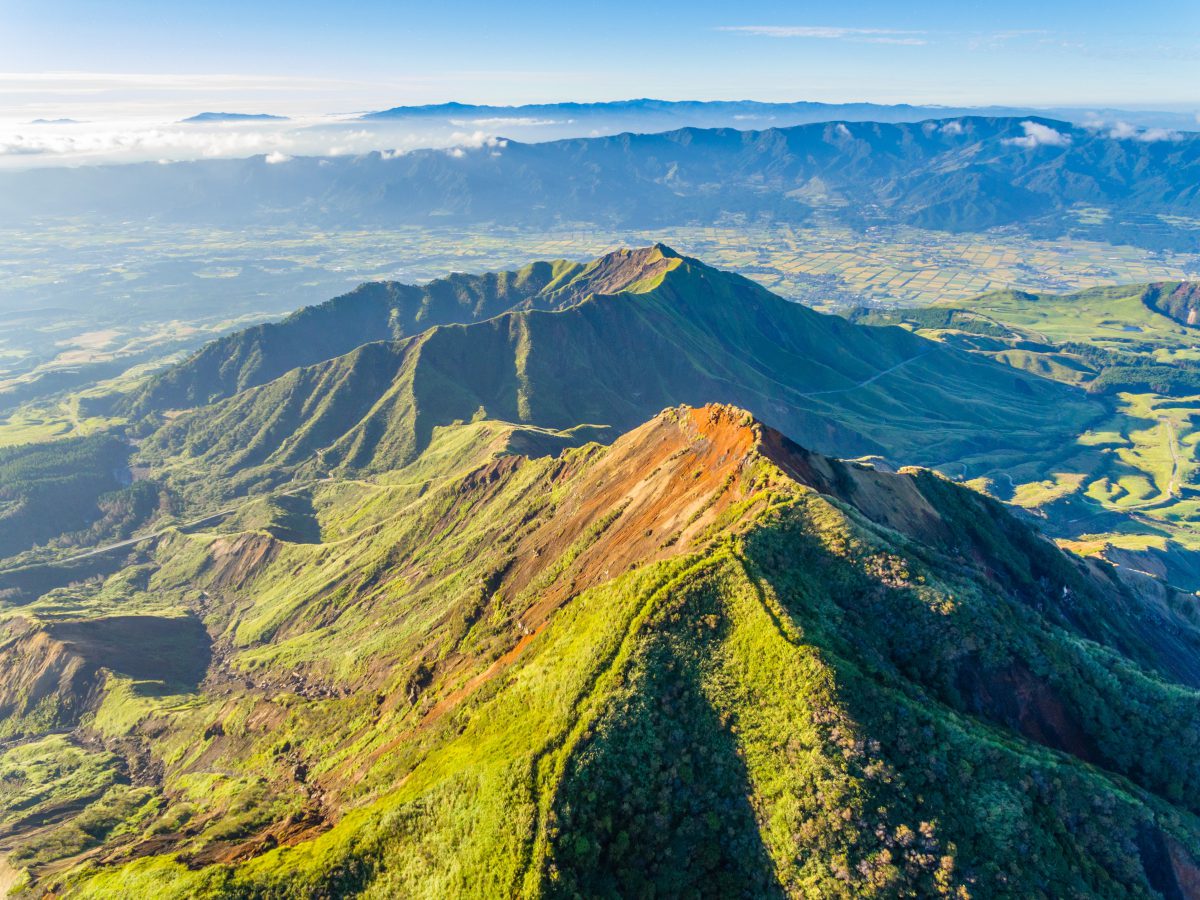
Kumamoto is one of the most popular destinations in Kyushu, known as the land of water due to its large flow of spring water. The prefecture is home to Mount Aso , the largest active volcano in Japan. Rent a car and head to the Aso Area, where you’ll find a number of scenic spots and hot spring resorts such as Kurokawa Onsen . Visit Nabegataki Waterfall which is considered one of the most beautiful waterfalls in Japan, or head to Amakusa where you might get a chance to see some wild dolphins.
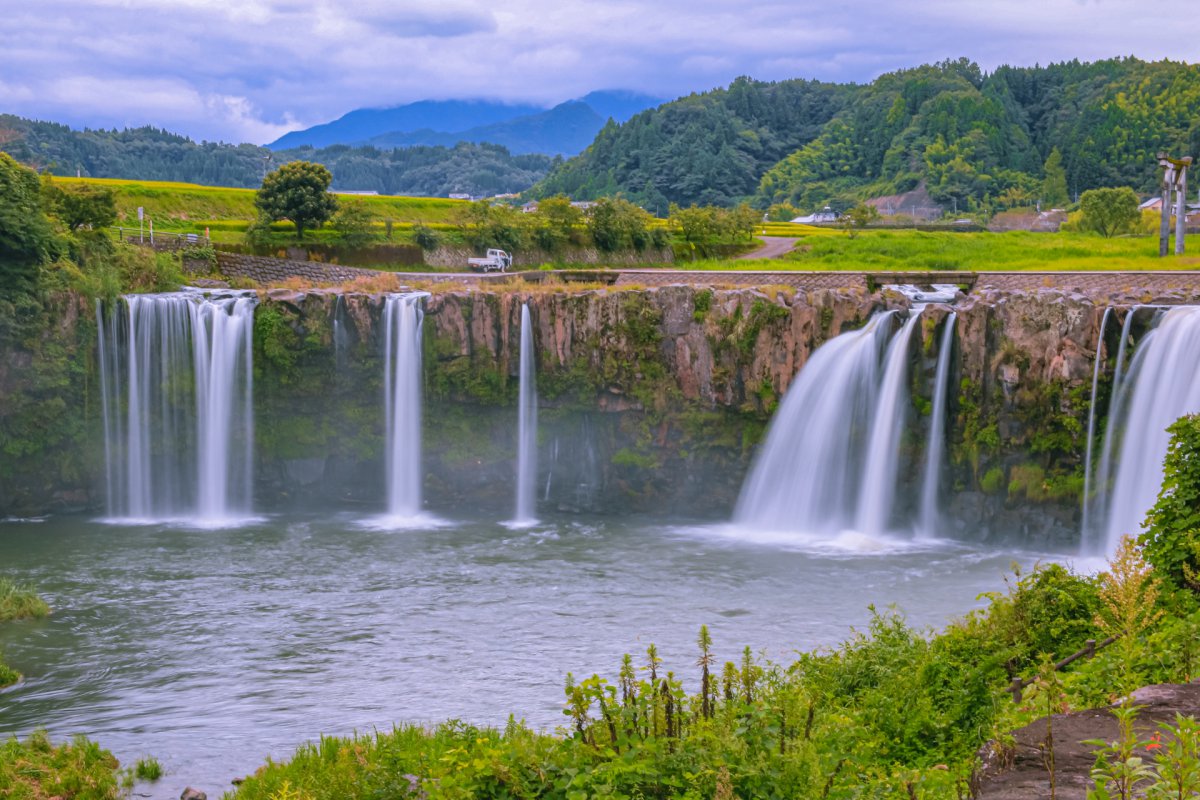
Oita is home to the most hot spring sources in Japan, with several world-renowned hot spring resorts such as Yufuin and Beppu . Mt. Yufu is a large mountain which is an ideal hiking spot during the summer season with lush greenery everywhere you look. Harajiri no Taki is a scenic waterfall often referred as The Eastern Niagara Falls because of the beautiful facade. Rokugo Manzan refers to a unique local religious culture with a number of ancient temples, shrines, and statues that can be spotted along the refreshing hiking trails on the Kunisaki Peninsula !
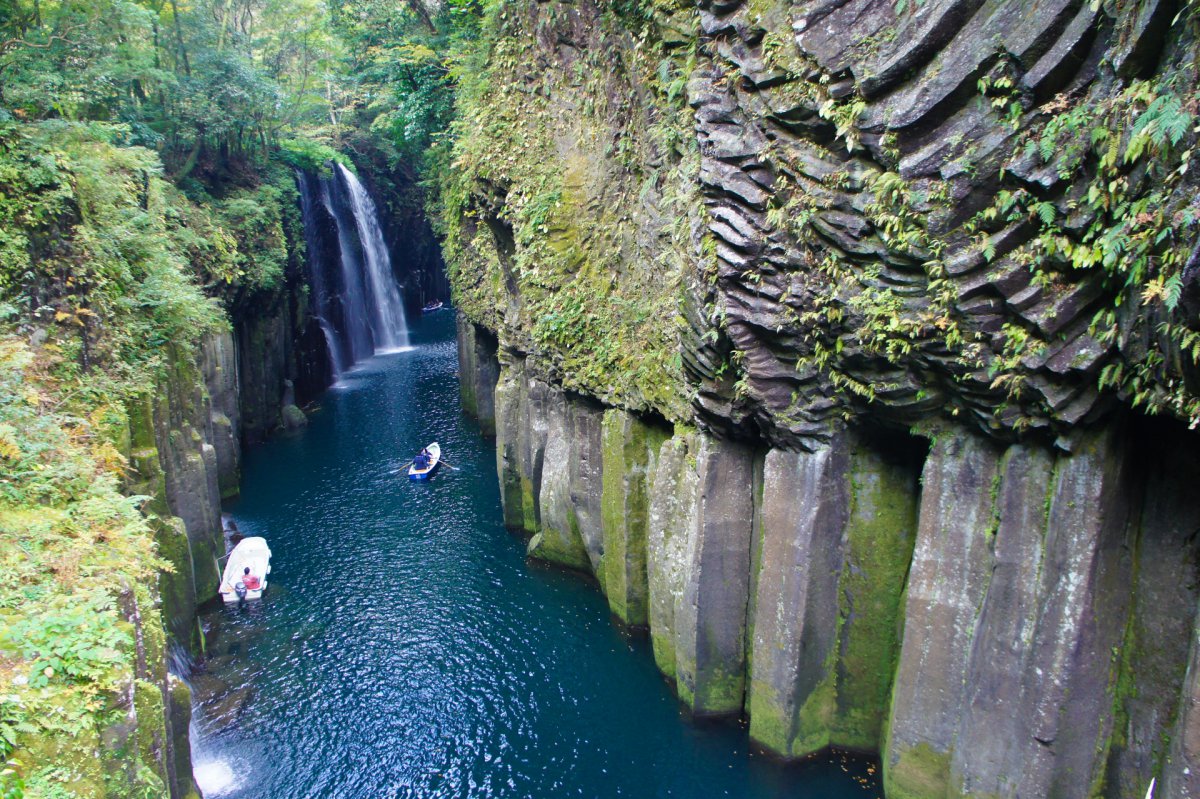
Miyazaki is located in the southeastern part of Kyushu, and it attracts visitors from all over with it’s scenic mountains, sacred spots, and a warm climate similar to tropical islands. Takachiho Gorge is definitely a highlight that you shouldn’t miss. The powerspot formed by the lava flow of the nearby Mt. Aso offers a stunning view of the v-shaped valley. Udo Shrine is a sacred Shinto shrine situated in a natural cave on the side of the steep cliff along the Nichinan Coast which offers a stunning view too. Enjoy surfing at Aoshima Island , or take a peaceful walk at Heiwadai Park . Try Shochu , Japan’s oldest distilled alcoholic beverage that is a local delicacy!

Kagoshima is widely known for Sakurajima Volcano , a symbolic volcanic mountain overlooking Kagoshima city. Yakushima is a beautiful island which boasts a number of refreshing hiking trails, making it a popular trekking spot with scenic spots such as Jomonsugi and Shiratani Unsuikyo Ravine , two spots that served as an inspiration for the Ghibli movies Princess Mononoke. Kirishima mountain range is another popular hiking spot. Visit Satsuma Peninsula to try the famous natural sand baths in Ibusuki Onsen Town .
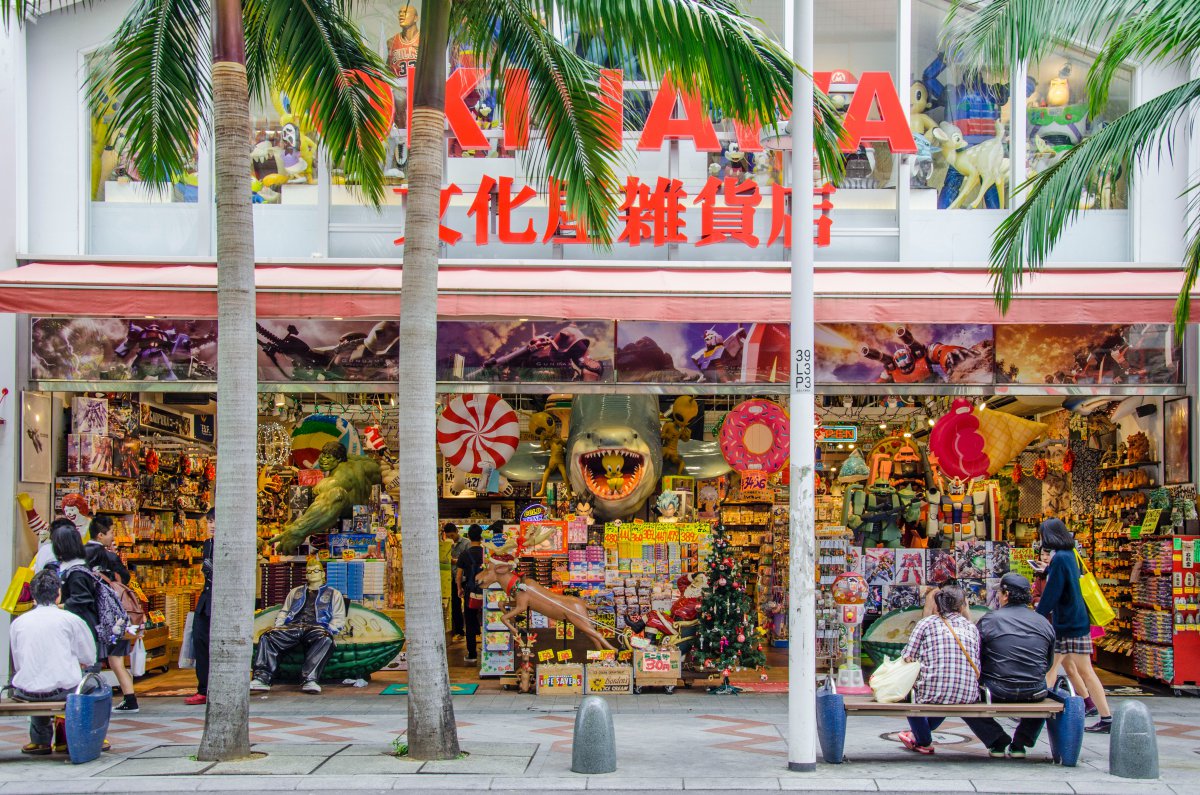
Okinawa offers totally different adventures and experiences from other parts of Japan. The group of about 160 tropical islands, offers a generally warm and pleasant subtropical climate all year round. Enjoy local specialties and shopping at Kokusai Dori Street in Naha , the prefectural capital, which is also home to UNESCO World Heritage Site Shurijo Castle . Fly to remote islands such as Ishigaki Island to get close to nature and enjoy marine sports such as diving and snorkeling in the crystal-clear water. Okinawa is known for its’ tasty local dishes influenced particularly by China, South East Asia, and the US. The unique cuisine is mixed with a surprising amount of pork and beef, rather than fish; try Ishigaki beef that melts in your mouth with an unforgettable flavor!
Japan Wonder Travel is a travel agency that offers guided tours throughout Japan. From private walking tours to delicious Food and Drink tours, we can help you organize the best tours just for you! If you want to explore Japan and learn more about the history and backstories of each area you are visiting, our knowledgeable and friendly English speaking guides will happily take you to the best spots! In addition, we can provide you with any assistance you may need for your upcoming trip to Japan, so please feel free to contact us if you have any questions or need some help!
▶ Tokyo Tsukiji Fish Market Food and Drink Tour Explore the most lively and popular fish market in Tokyo and try some of the local’s favorite street foods and sake with one of our friendly and knowledgeable English speaking guides!

▶ Tokyo 1–Day Highlights Private Walking Tour (8 Hours) There’s no better way to explore an area than taking a tour with a knowledgeable local guide. You will have the chance to learn about the history and interesting background stories of Tokyo, as well as discover some hidden gems which can be hard to do without a guide.

▶ Mt. Fuji Day Trip Bus Tour from Tokyo Experience the breathtaking views of Mt. Fuji by visiting the highlights of the area on our guided sightseeing bus tour! Departing from Shinjuku in central Tokyo, you can travel comfortably to all of the best spots in the area by bus.

▶ Kyoto Private Full Day Walking Tour On this full-day private tour of Kyoto, you will be able to see the highlights of Kyoto in just one day and at the same time develop a deeper understanding of both the culture of the area and Japan as a whole.

Each prefecture of Japan has its own highlights and unique selling points and all are wonderful destinations which are bound to make for a memorable time in Japan. You can choose your destination depending on your interests, but starting from famous places and/or big cities might be easiest when you are visiting Japan for the first time . But if you are looking for more off the beaten path destinations. there is plenty to choose from too! Explore the beautiful country full of unique tourist attractions and excitements as much as you can. We hope you found somewhere you want to visit from our guide to the best places to visit in all 47 prefectures of Japan!
Follow us on Instagram or Facebook for more travel inspiration. Or tag us to get featured!
Happy traveling!
This post may contain some affiliate links. When you click through and make a purchase we may receive some commission, at no extra costs to you.
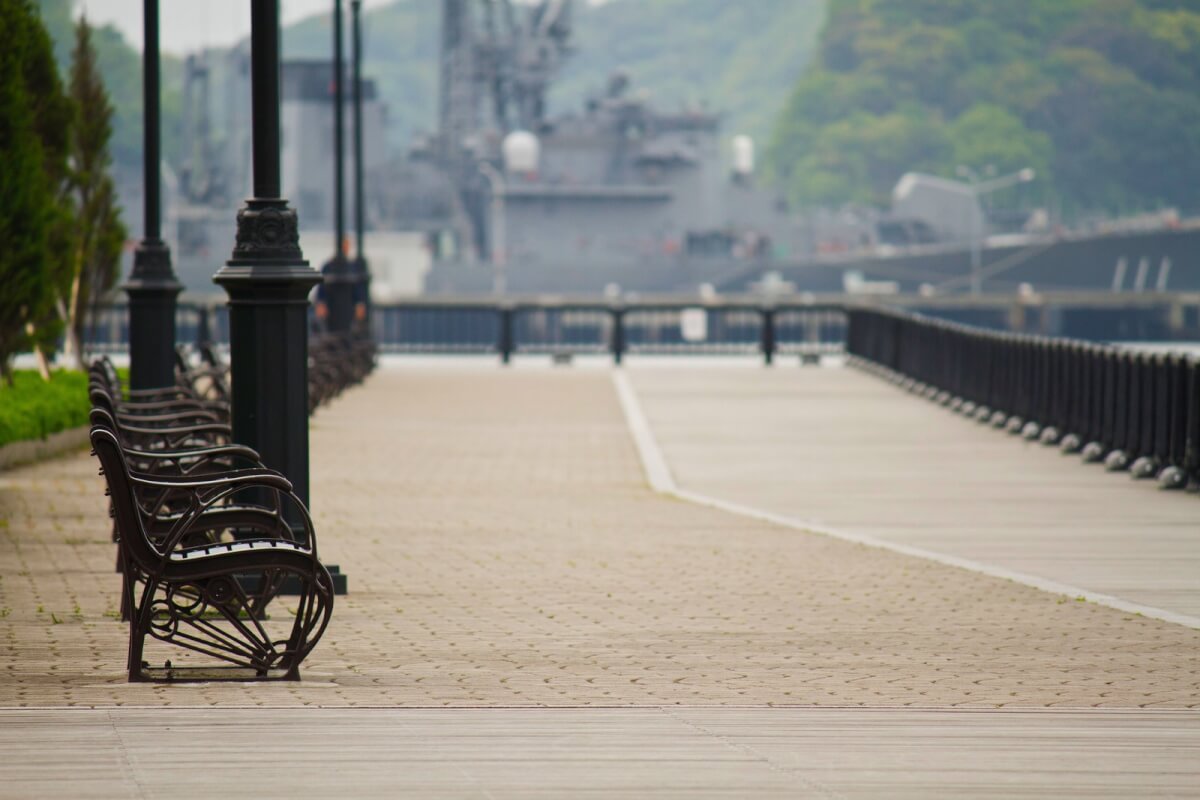
- Popular destinations
- Hidden places in Japan
- Tours and workshop
- Food and drink in Japan
- Itinerary in Japan
- Places to visit in Tokyo
- Food and drink in Tokyo
- Seasonal events
- Tours & workshops
- Tokyo This Week
- Day trip from Tokyo
- Itinerary in Tokyo
- Places to visit in Kyoto
- Food and drink in Kyoto
- Itinerary in Kyoto
- Day trip from Kyoto
- Travel tips
- Accommodation
- Cultural tips
- Transportation
- Tokyo Tours
- Kyoto Tours
- Kimono Rental
- Fukushima Tours
- Mount Fuji Tours
- Tour Package
- Media Kit(English/日本語)
- Tours & Experiences
- Tailor-made Trips
- Bahasa Indonesia
We are happy to see you again!
Continue with
Or use email.
No Account? Create one
Create account
Already have an account? Sign in
Quickly Sign up with
I agree to Japan Travel's Terms of Service and Privacy Policy . Terms of--> and acknowledge that Japan Travel's Privacy--> applies to me.-->
Email reset password link
Please check your inbox and click the link we will send to you.
Search our regional Japan map using keywords and place names, or filter by region below.
Let us know how we can help.
Itinerary Ideas
Nationwide itineraries.
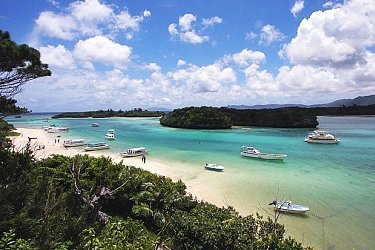
Regional Itineraries
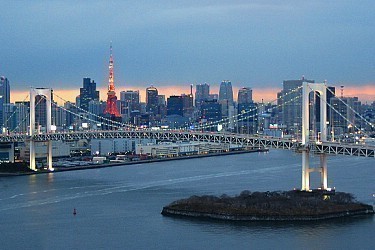
Local Itineraries
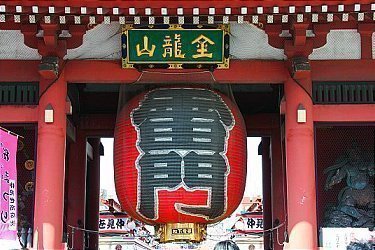
Questions? Ask in our forum .


7 Best things to do in Japan in 2024
A s a travel enthusiast starts planning a 2024 travel itinerary, Japan, the Land of the Rising Sun, ticks all the boxes. It is the ultimate travel destination thanks to its historic streets of Kyoto, savoring delicious street food in Osaka, exploring the religious shrines, or staying at the ryokans . From the age-old cherry fields to the peaceful country roads, this place is a feast for the senses.
Springtime being this place's truly magical venture, Japan comes alive with color and energy, and visitors are feasted on a lot of enjoyable destinations to explore. Its rich tapestry of history, culture, and natural beauty offers an array of adventures for every travel enthusiast.
Disclaimer: This is purely the writer's opinion, and might have missed some favorite destinations.
The top activities to experience in Japan in 2024
Whether the avid traveler is a history buff, a food enthusiast, or a nature lover, Japan is the perfect place for their visit in 2024.
Ahead, Team Sportskeeda has thoughtfully created a list of the seven best things to do in Japan in 2024 and make the most of their visit.
- Explore Kinkaku-ji at Kyoto
- Enjoy Hanami in Tokyo
- Feed the deer at Nara
- Learn about the city's history at Hiroshima
- River cruise at Osaka
- Ski at Hokkaido
- Sun-bask on the shorelines of Okinawa
1) Explore Kinkaku-ji at Kyoto
Kyoto, the cultural heart of Japan , is a must-visit spring destination for avid travelers. Considering that the best time to travel is in late March to early April, this holiday and sightseeing place is well-known for its cherry blossoms in full bloom.
Sight-seers should not miss the spectacular Kinkaku-ji (Golden Pavilion) and the traditional Gion District. For lodging, one should consider staying at a classic ryokan to experience the hospitality at its best. Kansai International Airport, the nearest airport, can be easily commuted to thanks to local transportation.
Once in Kyoto, one should also make sure to try out the local cuisines, like kaiseki (a multicourse feast) and various matcha confectionaries. Noted diners like Nishiki Market and Pontocho Alley also rule the culinary delight list.
2) Enjoy Hanami in Tokyo
Be it the onset of autumn or spring, the metropolis of Tokyo, Japan, is always bustling with a unique blend of modernity and ritual. Including Senso-ji Temple and Meiji Shrine, this metropolis' main attractions are decorated with cherry blossoms, catering to a panoramic view.
Once in Tokyo, tourists can enjoy activities like hanami (flower viewing) picnics in Ueno Park and boat or yacht cruises along the Sumida River. For an unforgettable stay, visitors can select a hotel in the vibrant Shibuya or Shinjuku districts and indulge in a wide variety of delectable local cuisines, like sushi tempura and ramen at Tsukiji Outer Market, and the food stalls at Ameyoko Market.
Read more: 6 Best European countries to visit in Summer 2024
3) Feed the deer at Nara
Nara, well-known for its friendly deer and ancient religious shrines, it is always the perfect time for any travel enthusiast to visit this charming destination.
Visitors can engage in activities like feeding deer and exploring the picturesque Isuien Garden at Nara Park and Todai-ji Temple, the main attractions they shouldn't miss. Once here, a holiday enthusiast can stay at cozy homestays or ryokans for an authentic lodging experience. There are also sample local delicacies, like Kakinoha sushi and persimmon leaf sushi, at the best diners in the Nara-machi district.
4) Learn about the city's history at Hiroshima
Hiroshima, a Japan metropolis with a resilient spirit and a profound history, is best visited in early April. From the local Hiroshima Airport, courtesy of its travel-friendly communication, the Hiroshima Peace Memorial Park and Shukkeien Garden are the main places of interest that offer serene beauty. Here, tourists can engage in activities like visiting the Itsukushima Shrine on Miyajima Island and the Hiroshima Peace Memorial Museum to learn about the city's history.
One can also plan their stay at comfortable hotels and savor local cuisines like okonomiyaki and oysters from the best diners like Okonomimura and Mitaki-en.
5) River cruise at Osaka
Considered one of the most vibrant cities, Osaka is famed for its lively environment and mouthwatering delicacies. The best time to visit is late March or early April. Once landing at the Kansai International Airport, a vacationer can enjoy their holiday by visiting the main attractions, like Osaka Castle and Dotonbori.
Thanks to its panoramic view, travelers can enjoy local activities like exploring the bustling Kuromon Ichiba Market and river cruising along the Okawa River. Planning a 2 to 3-day trip to Osaka, a vacationer can book their stay at downtown's trendy hotels and indulge in local cuisines like takoyaki , okonomiyaki , and kushikatsu at street food stalls, and best-eating joints like Mizuno and Kani Doraku.
Read more: 6 Best treks in the world
6) Ski at Hokkaido
Hokkaido, the northernmost island, is a must-see spring holiday destination in Japan, courtesy of its spectacular natural attractions. When hiring local transportation or pre-paid cabs from New Chitose Airport, the best time to visit is late April or early May. During this time, tourists can enjoy the main attractions, such as the vast fields of Shikisai-no-Oka and the majestic beauty of Shikisai Hill.
They can engage in activities like exploring Biei's charming beauty, skiing, Onsen (hot springs), enjoying a relaxing soak in the famous Noboribetsu hot springs, or staying at comfortable ryokans or motels with stunning mountain views. They can also savor these gastronomical delights in local delicacies like fresh seafood , spicy ramen, and tasty dairy products at the best diners like Ramen Yokocho and Nijo Market.
7) Sun-bask on the shorelines of Okinawa
Off-boarding at the Naha airport, Okinawa's gorgeous shorelines and rich history welcome avid travelers, making it an excellent destination year-round for all travel enthusiasts visiting Japan. Once here, travelers can explore the lively marine life at the Churaumi Aquarium and the Ryukyu culture of historical Shuri Castle.
They can rest and recoup at beachfront resorts like the Ritz-Carlton, Okinawa, or Halekulani, Okinawa, to experience the true essence of Okinawa, Japan. Visitors can also spoil their tastebuds with the local flavors of sample Okinawan soba, agu pork , goya champuru, and rafute pork.
Read more: 6 best Spring destinations in the world to take a family vacation
These are the seven best things to do in Japan in 2024 that promise an array of unforgettable experiences for travel enthusiasts. So, avid travelers can start backpacking to enjoy their adventure-packed holiday.
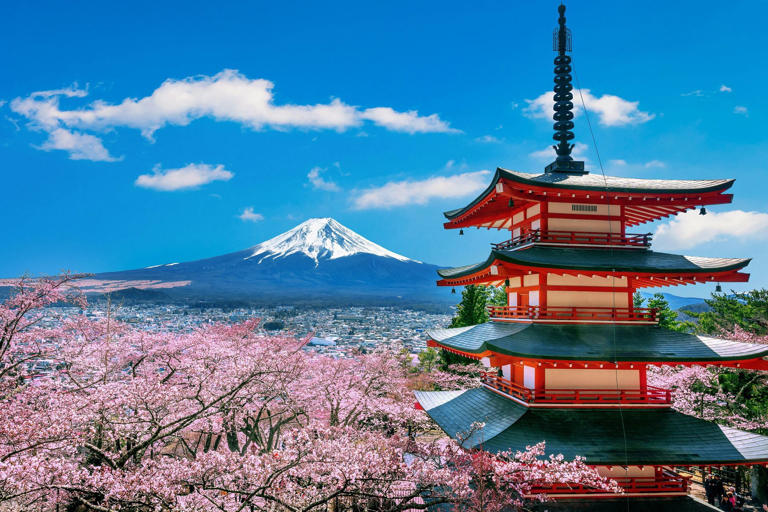
Your browser is outdated
Please upgrade to a more modern version to fully experience JapanToday site and for security reasons

- Real estate
- Classifieds

ANA and Air India to launch codeshare partnership
All Nippon Airways (ANA) and Air India, the national flag carrier of India, have entered into a commercial agreement marking the beginning of a codeshare partnership that will connect Japan and India.
Beginning May 23, this partnership between the two Star Alliance members will enhance flight selection options for travelers, allowing passengers to more easily fly to their desired destinations by combining flights across the two airlines into a single ticket. In addition, both travelers flying on codeshare flights can enjoy premium services such as lounge access and priority boarding that Star Alliance offers to its premium members.
ANA will apply its "NH" code to Air India's flights between Narita and Delhi and Air India will add its "AI" code to ANA's flights between Haneda and New Delhi as well as Narita and Mumbai.
"We look forward to building this strategic partnership with Air India, as it is a significant step towards furthering stronger air connectivity and enhancing customer experience between Japan and India," said Katsuya Goto, Executive Vice President of Alliances and International Affairs. "This collaboration is a testament to ANA's commitment to improving the air travel experience for all of its travelers and we hope this will lead to a seamless travel environment between our two nations."
The two airlines are considering expanding its cooperation by adding additional destinations in the near future. This agreement will contribute to expanding the economic and commercial relations between India and Japan, by offering travelers from both countries new opportunities to discover the wonders of both countries.
Codeshare flights will be available for sale through the airlines' respective websites, reservation systems and travel agencies.
"This codeshare agreement with All Nippon Airways marks an important step forward in connecting India and Japan," said Nipun Aggarwal, Chief Commercial & Transformation Officer, Air India. "This collaboration broadens our network connectivity and offers our guests seamless travel experiences and a wider choice of flights between the two countries. We look forward to a successful collaboration with ANA and exploring further avenues for cooperation in the future."
Source: ANA

Teach English in Japan
Join the leaders of English Education for Children in Japan!
3 Comments Login to comment
alex Apr. 28 08:25 am JST
In no other industry is this kind of bait-and-switch marketing acceptable. Imagine booking a comparatively expensive flight on ANA, with its exemplary service and excellent safety record, only to be herded onto a dirty old Air India airplane, with its poor service and notorious time-keeping.
/dev/random Apr. 28 12:14 pm JST
Imagine booking a comparatively expensive flight on ANA, with its exemplary service and excellent safety record, only to be herded onto a dirty old Air India airplane
Then you didn't pay attention. Airlines are, by regulations and consumer protection laws, required to state the operating carrier(s) when a codeshare is sold.
EvilBuddha Apr. 28 12:30 pm JST
Imagine booking a comparatively expensive flight on ANA, with its exemplary service and excellent safety record, only to be herded onto a dirty old Air India airplane, with its poor service and notorious time-keeping.
Air India was privatized a couple of years ago, and it is undergoing merger with another airline in which Singapore Airlines has a 49% stake. Post merger, SIA will have 25% stake in Air India.
Also I am assuming that the maximum flyers on this route will be Indian nationals who are already aware of the kind of service that the (old state-owned) Air India used to give, so any improvement from those depths will be welcome.
Login to leave a comment
Facebook users.
Use your Facebook account to login or register with JapanToday. By doing so, you will also receive an email inviting you to receive our news alerts.
Login with your JapanToday account
Articles, offers & useful resources.
A mix of what's trending on our other sites

Overtourism in Japan and What It Means for Visitors
GaijinPot Blog

The Best 10 Things To Do In Kyoto

The 10 Best Things To Do in Kobe

Top 10 Nighttime Sakura Spots in Japan

See Where Cherry Blossoms Are Blooming Now in Japan on GaijinPot Travel

The 10 Best Things To Do in Shinjuku

Understanding Mount Fuji’s New Fees and Rules

The 10 Best Things To Do in Kawagoe

The 10 Best Things To Do in Saga

How to Visit Onsen With Tattoos in Japan for 2024

The 10 Best Things To Do in Hiroshima

25 Things to Do in Yokohama
- Media & Industry
- Meetings & Events
- Select Language 简体中文 繁體中文(香港) 繁體中文(臺灣) India (English) Bahasa Indonesia 한국어 ภาษาไทย Tiếng Việt Singapore (English) Philippines (English) Malaysia (English) Australia/New Zealand (English) Français Deutsch Italiano Español United Kingdom (English) Nordic countries(English) Canada (English) Canada (Français) United States (English) Mexico (español) Português العربية Japan(日本語) Global (English)
- India (English)
- Bahasa Indonesia
- Singapore (English)
- Philippines (English)
- Malaysia (English)
- Australia/New Zealand (English)
- United Kingdom (English)
- Nordic countries(English)
- Canada (English)
- Canada (Français)
- United States (English)
- Mexico (español)
- Global (English)
- Fujiyoshida
- Shimonoseki
- Ishigaki Island
- Miyako Island
- Kerama Island
- Tokyo Island
- Koka & Shigaraki
- Hida Takayama
- Ginza, Nihonbashi
- Beppu & Yufuin (Onsen)
- Ginzan Onsen
- Nagasaki Islands

- Kumano Kodo
- Shikoku Karst
- Amami Oshima
- Hachimantai
- Omihachiman
- Aizuwakamatsu

- Diving in Japan
- Skiing in Japan
- Seasonal Flowers in Japan
- Sustainable Outdoors
- Off the Beaten Track in Japan
- Scenic Spots
- World Heritage
- Home Stays & Farm Stays

- Japanese Gardens
- Japanese Crafts
- Temple Stays
- Heritage Stays
- Festivals and Events
- Theater in Japan
- Japanese Tea Ceremony
- Cultural Experiences in Japan
- Culture in Japan

- Local Cuisine Eastern Japan
- Local Cuisine Western Japan
- Local Street Food
- Japan's Local Ekiben
- Japanese Whisky
- Vegetarian and Vegan Guide
- Sushi in Japan Guide
- Japanese Sake Breweries

- Art Museums
- Architecture
- Performing Arts
- Art Festivals
- Japanese Anime and Comics
- Japanese Ceramics
- Local Crafts

- Scenic Night Views
- Natural Wonders
- Theme Parks
- Samurai & Ninja
- Iconic Architecture

- Wellness Travel in Japan
- Japanese Ryokan Guide
- A Guide to Stargazing in Japan
- Relaxation in Japan
- Forest Bathing (Shinrin-yoku)

- Experiences in Japan
- Enjoy my Japan
- National Parks
- Japan's Local Treasures
- Japan Heritage
- Snow Like No Other
- Wonder Around Japan

- Visa Information
- Getting to Japan
- Airport Access
- COVID-19: Practical Information for Traveling to Japan
- Anime Tourism
- Countryside Stays
- Accessible Tourism
- Hokkaido Great Outdoors
- Scenic World Heritage in Tohoku
- Shikoku’s Nature and Traditions
- Southern Kyushu by Rail

- Traveling by Rail
- How to Travel by Train and Bus
- JR Rail Passes
- Scenic Railways
- Renting a Car
- Sustainable Travel in Japan
- Travel Brochures
- Useful Apps
- Online Reservation Sites
- Eco-friendly Accommodation
- Luxury Accommodations
- Traveling With a Disability
- Hands-free Travel
- How to Book a Certified Tour Guide
- Volunteer Guides
- Tourist Information Center

- Japanese Manners
- Spring in Japan
- Summer in Japan
- Autumn in Japan
- Winter in Japan
- Cherry Blossom Forecast
- Autumn Leaves Forecast

- Japan Visitor Hotline
- Travel Insurance in Japan
- Japan Safe Travel Information
- Accessibility in Japan
- Vegetarian Guide
- Muslim Travelers
- Safety Tips

- JAPAN Monthly Web Magazine
- Arts & Cultures
- Nature & Outdoor
- Festivals & Events
- Insider Blog
- Things to do
- Local Guides
- Food & drink
- Traditional
- Hokuriku Shinetsu

My Favorites
${v.desc | trunc(25)}
Planning a Trip to Japan?
Share your travel photos with us by hashtagging your images with #visitjapanjp
Things to Do Discover the full range of amazing things to see and do across Japan
- Things To Do
Find inspiration for your Japan vacation, from sightseeing in the city and cultural immersion in the countryside to top picks and suggested itineraries
Explore by interest.
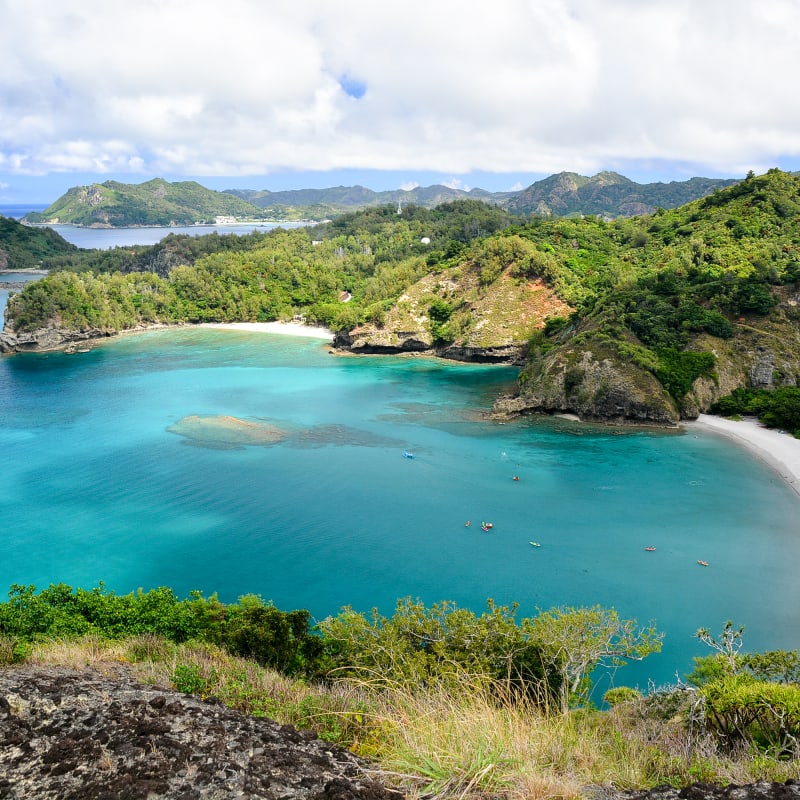
Ogasawara Islands (UNESCO)
Take a trip to the Galapagos Islands of Asia
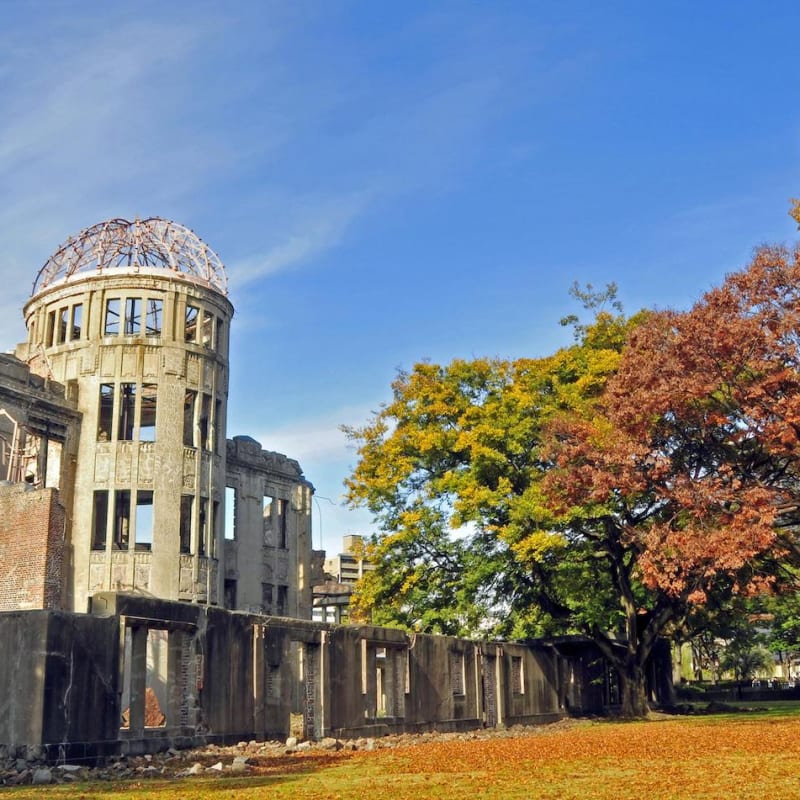
Hiroshima Peace Memorial (UNESCO)
A structural reminder of a painful past
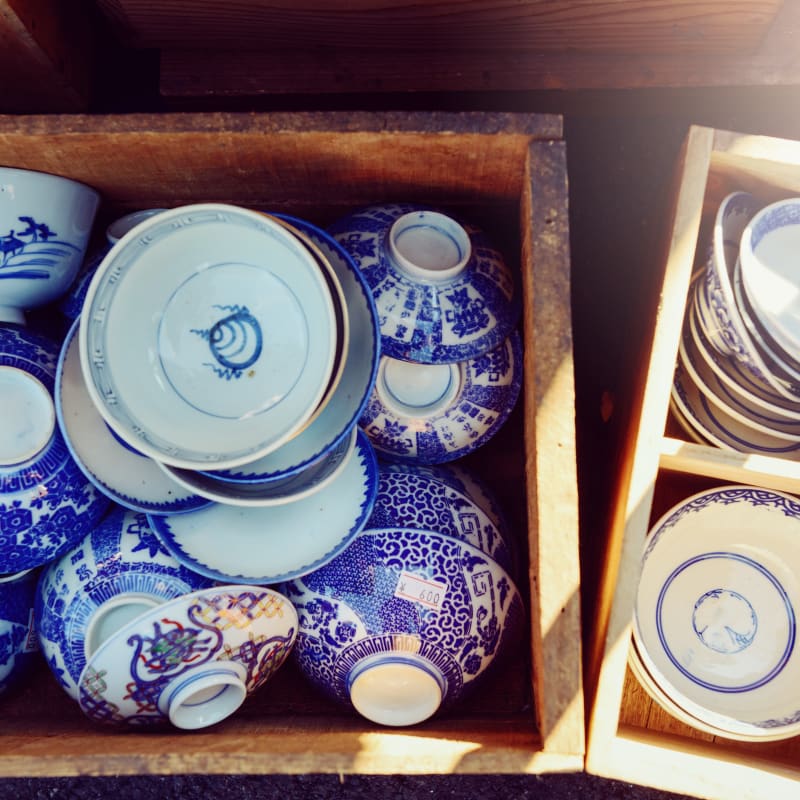
Antiques & Flea Markets in Japan
Setagaya Boroichi Market—Tokyo
Top Recommendations
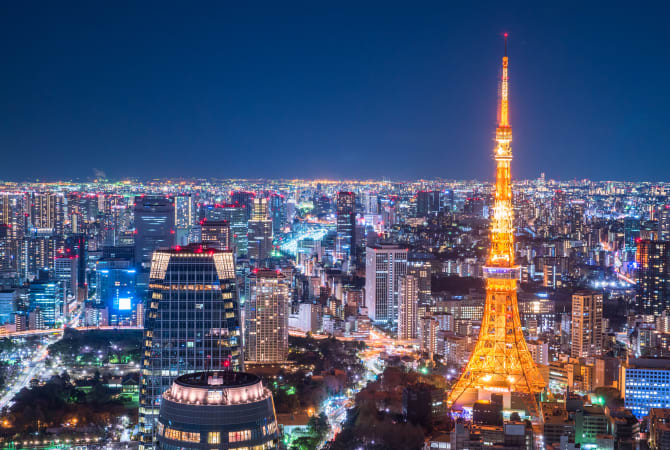
Itineraries

Onsen in Tohoku
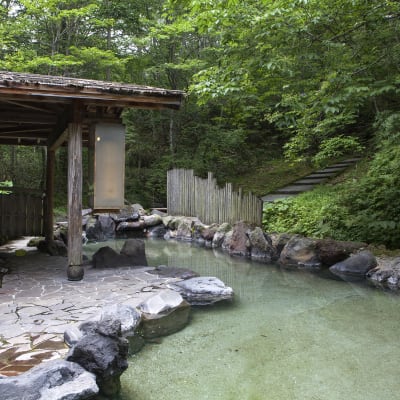
Castles in Kanto
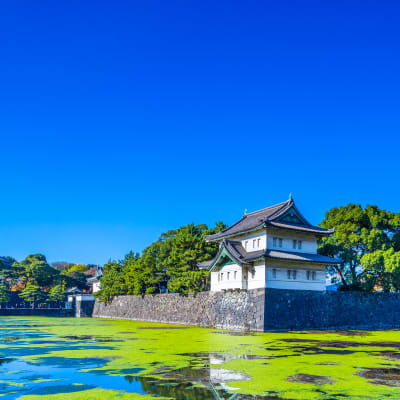
Please Choose Your Language
Browse the JNTO site in one of multiple languages

IMAGES
VIDEO
COMMENTS
The official site of Japan National Tourism Organization is your ultimate Japan guide with tourist information for Tokyo, Kyoto, Osaka, Hiroshima, Hokkaido and other top Japan holiday destinations. We offer travel information to make your Japan travel more comfortable and enjoyable.
Planning a Trip to Japan? Share your travel photos with us by hashtagging your images with #visitjapanjp. Travel Japan - The Official Japan Guide. None U.S.-JAPAN TOURISM YEAR 2024. None Go Beyond Japan's Major Cities: Hokuriku Shinkansen Extension in 2024. None
All of our Japan group tour itineraries are researched and developed by our professional staff, all of whom have spent years working as a tour guide in Japan. We offer four different tour styles to pick from that are best suited to your interests, from train travel to luxury tours.
Days 15 & 16: Hiroshima. Day 17: Train to Hokkaido. The train to Hokkaido, Japan's northernmost island home to volcanoes and rugged landscapes, takes 15-16 hours by train. There are sleeper cars available, but you'll have to pay a surcharge (around 9,500 JPY) for a bed.
Japan Travel Guide. Last Updated: April 29, 2024. Japan is one of the most amazing, beautiful, interesting, and friendly countries in the world. From bustling Tokyo and Zen-like Kyoto all the way to laid-back Okinawa and wintery Hokkaido, Japan rocks. It boasts mouthwatering food, majestic temples and shrines, serene gardens, lush national ...
Purchase our award-winning guidebooks. Get to the heart of Japan with one of our in-depth, award-winning guidebooks, covering maps, itineraries, and expert guidance. Shop Our Guidebooks. 06 / Go Beyond.
A visit to the busy streets of Tokyo or the tranquil slower pace of Kyoto necessitates staying connected for an optimal and stress-free experience in Japan. With an eSim or Pocket Wifi, you'll be able to stay in the loop and navigate easily with information at your fingertips, enhancing your overall travel experience.You also won't worry about language barriers much because you'll be able to ...
Japan Highlights. Alenna · Traveled April 2024. We had the most amazing luck on our tour - cherry blossoms, saw Mt Fuji - twice even! - and saw a geisha and maiko in Kyoto. Our tour guide Yuka was phenomenal and made everything fun and enjoyable. She also had brilliant recommendations for eateries, and patiently answered any and all of our ...
Everything about modern and traditional Japan with emphasis on travel and living related information.
Japan Travel is your official guide for local info and things to do in Japan. Find hotel, restaurant, and tour information with our Japan map or plan your next Japan trip with our tourism guides.
Day 8 - Side trip to Nara. On a side trip from Kyoto, visit Nara, home of Japan's first permanent capital. Visit some of the oldest and largest temples in Japan and feed the deer that roam freely in the city.
2. Kyoto. Best for traditional experiences. Kyoto, Japan's imperial capital for a thousand years, is home to more than a thousand temples. Among them are the monumental, like Kinkaku-ji (an exquisite pavilion sheathed entirely in gold leaf), and the meditative, like Ryōan-ji, with its stark Zen rock garden. And temples are only the beginning.
Hokkaido. •• Shiretoko National park on an unspoiled peninsula. •• Rishiri and Rebun Small islands near Hokkaido's northern tip. •• Daisetsuzan Hokkaido's largest and wildest national park. • Niseko Leading snow resort with lots of powder snow. • Sapporo The largest city on the island of Hokkaido.
These itineraries can be used as a foundation to craft a journey that suits you, from the remote reaches of Hokkaido, the central Fuji-Hakone-Izu National Park on Japan's Golden Route, down to tropical Okinawa. Into the Wild—The Shiretoko Peninsula. Unspoiled nature awaits. Spirituality in the Mountains of Koyasan. Daimon.
Home to 1.5 million people and nestled in the mountains, Kyoto is one of the most beautiful cities in Japan. It's filled with traditional-style buildings, bamboo forests, countless Zen gardens, and ancient Buddhist and Shinto temples.It's best to divide the city into half, as attractions are sort of clumped together and getting across town takes a long time.
Two times of year I would avoid for a vacation to Japan are: Golden Week in early May - In 2024, Golden Week is from 27 April - 6 May. This is a series of national holidays so many Japanese travel domestically, trains and hotels book up, and popular spots will be extra crowded. New Year - Late December to early January.
22. It's difficult to be gluten-free in Japan. While the abundance of rice may make you think Japan would be an easy country for gluten-free travelers, that's simply not the case. Soy sauce and other wheat-based seasonings are an integral part of Japanese cuisine, making it hard to avoid gluten.
5. Learn how to use a bidet toilet. Called "washlets," Japan's high-tech, electronic bidet toilets will wash and dry your delicate parts with the touch of a button. (Don't worry about any language barrier; the pictograms on the buttons are easy to understand). Other toilet customs in Japan might throw you for a loop.
Call us in Washington, D.C. at 1-888-407-4747 (toll-free in the United States and Canada) or 1-202-501-4444 (from all other countries) from 8:00 a.m. to 8:00 p.m., Eastern Standard Time, Monday through Friday (except U.S. federal holidays). See the State Department's travel website for the Worldwide Caution and Travel Advisories.
Taxes. Living Costs. Garbage Disposal. Banking. Postal Services. See All. Essential and practical information for traveling in Japan - plan your trip to Japan.
Learning about each prefecture prior to your visit will help you plan a memorable trip both easily and smoothly. Here is our list of the best places to visit all 47 prefectures of Japan that we think you should consider visiting! Table of contents. Hokkaido - 北海道. Tohoku Region - 東北地方. Aomori Prefecture.
Japan Map. Search our regional Japan map using keywords and place names, or filter by region below. Where would like to go in Japan? Find the best attractions, hotels, restaurants, and top things to do with our map of Japan. Search and explore the Japan map by city, prefecture, and region.
Japan travel news. Our rail pass calculator is now handling regional passes. Travel News. An off-the-beaten-path nature retreat out of Tokyo. Sponsored Story. A new 'corner store' opened in Harajuku this April. Travel News. Rediscovering Kyoto with JR Gold Guide. Sponsored Story.
A s a travel enthusiast starts planning a 2024 travel itinerary, Japan, the Land of the Rising Sun, ticks all the boxes. It is the ultimate travel destination thanks to its historic streets of ...
Kushiro & Hokkaido East. Gion & Higashiyama. Ishigaki Island. Around Fukuoka City. Kiyosato & Hokuto. Naha. Sendai City. Hiroshima City. Check out our Japan map, explore Japan's destinations and travel highlights in this comprehensive guide to where to visit in Japan.
All Nippon Airways (ANA) and Air India, the national flag carrier of India, have entered into a commercial agreement marking the beginning of a codeshare partnership that will connect Japan and India. Beginning May 23, this partnership between the two Star Alliance members will enhance flight selection options for travelers,…
Discover the many events and festivals, temples and castles, theme parks and hot springs, beaches and outdoor activities that Japan has to offer. Whether you're passionate about sports, an art lover, a nature enthusiast, a history buff, a foodie, or just looking to relax on a beach, the possibilities for your Japan journey are endless.